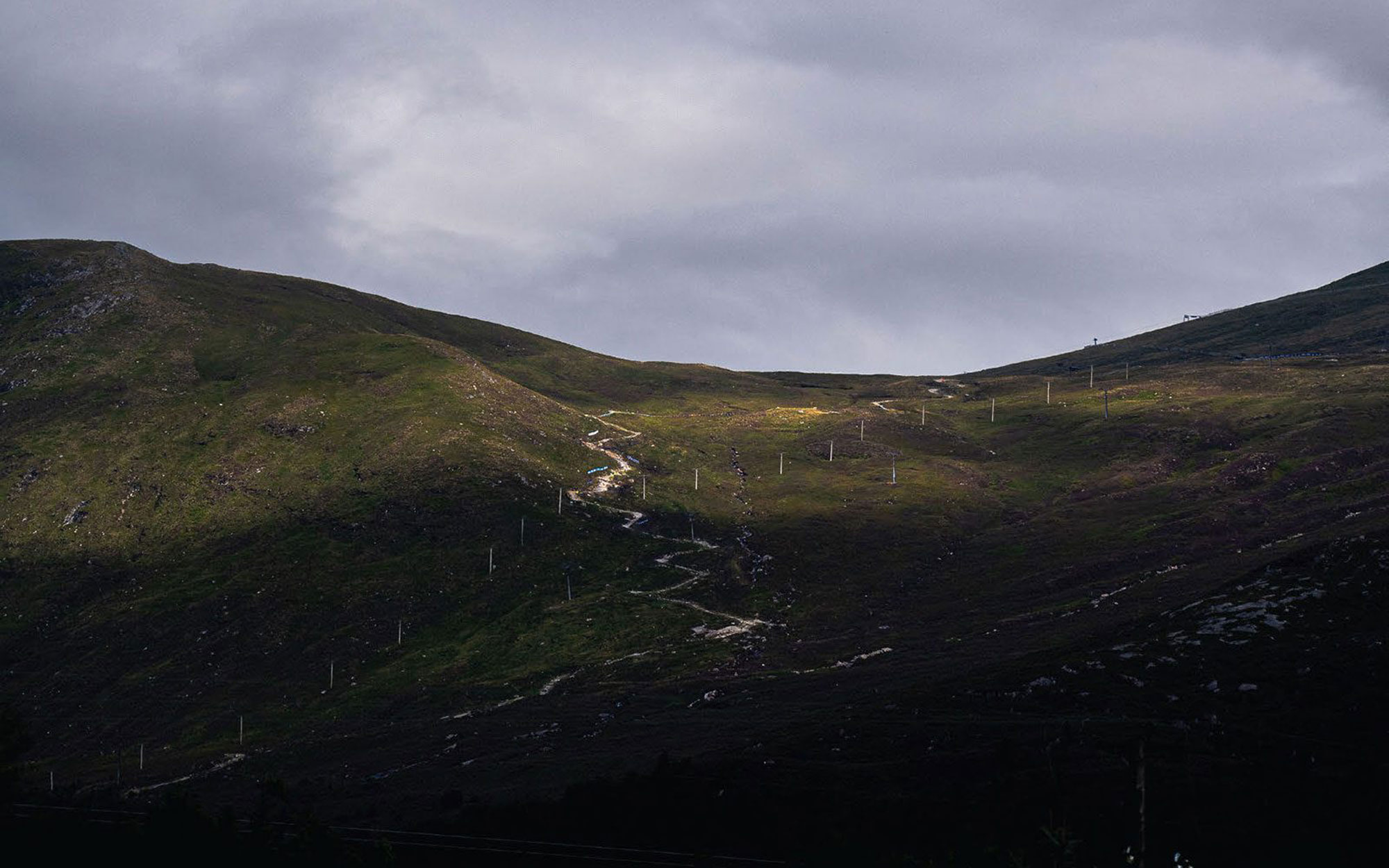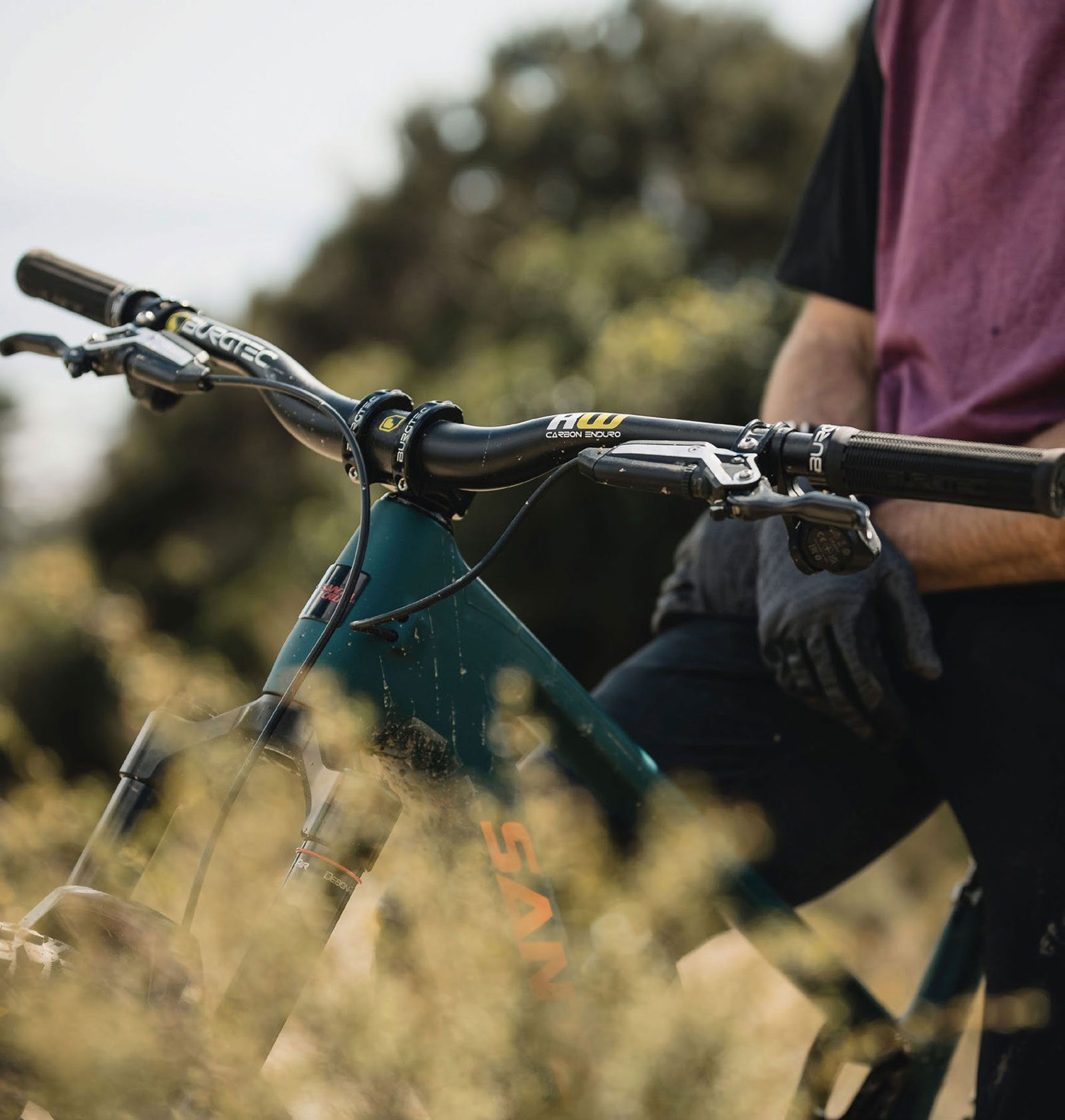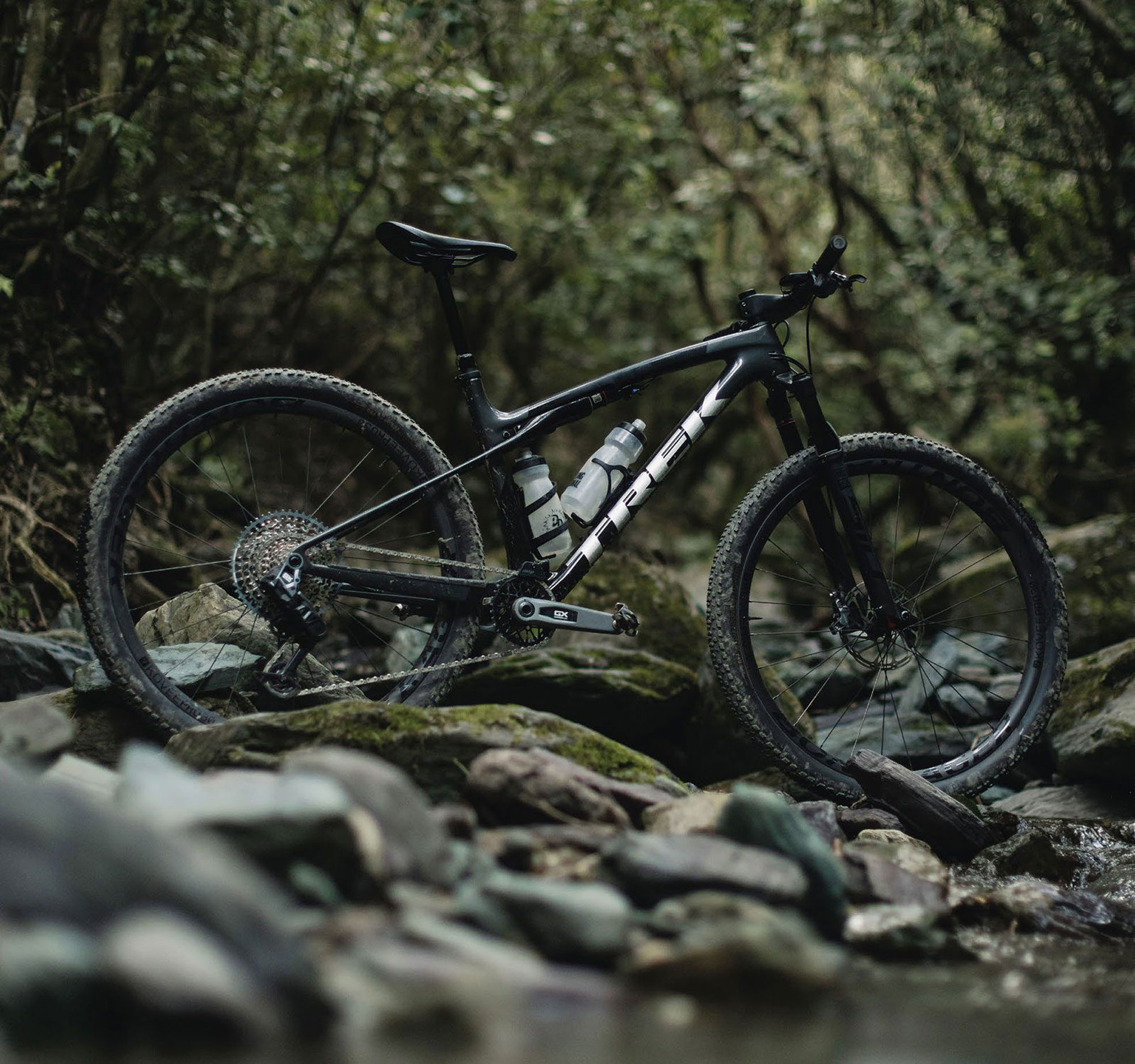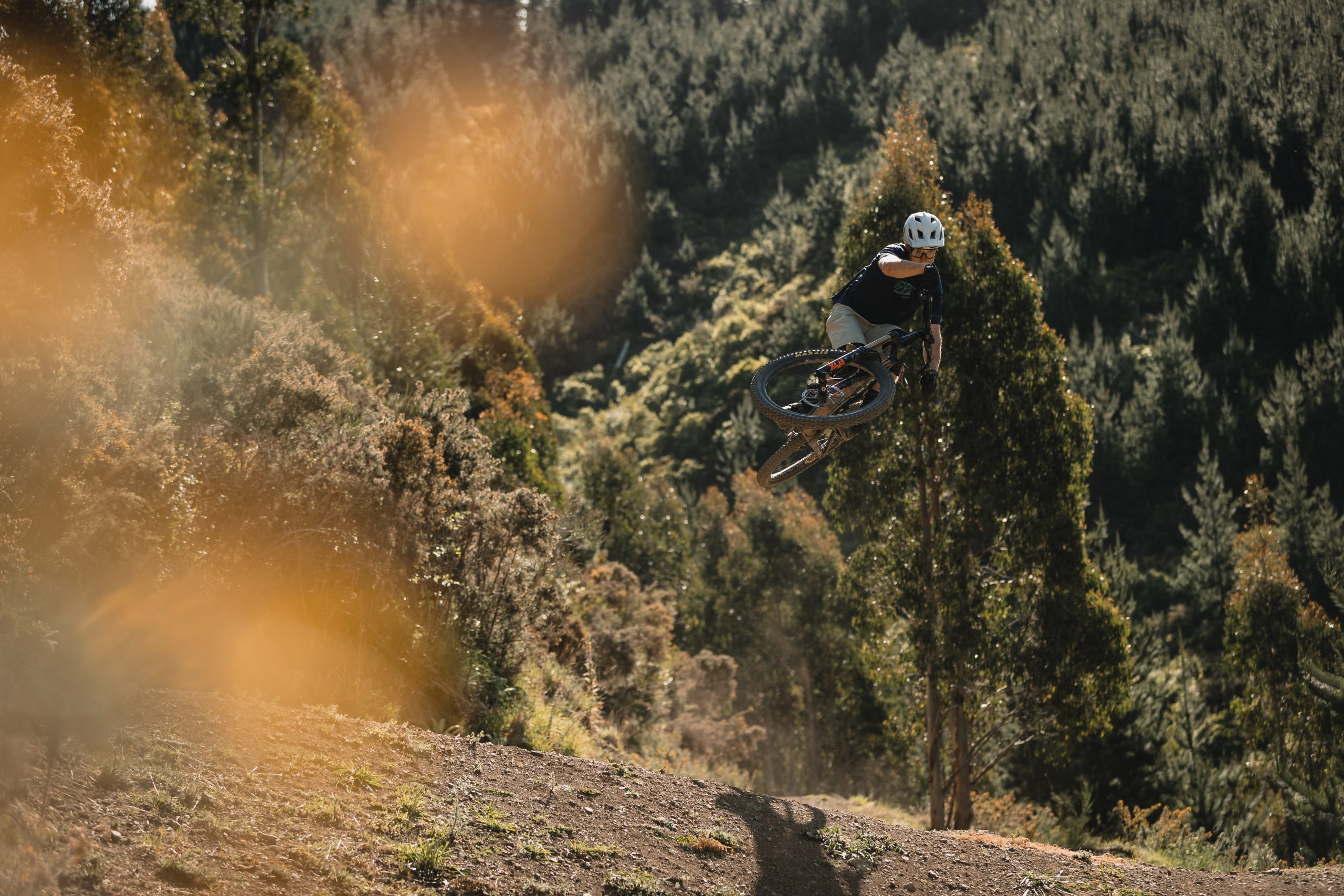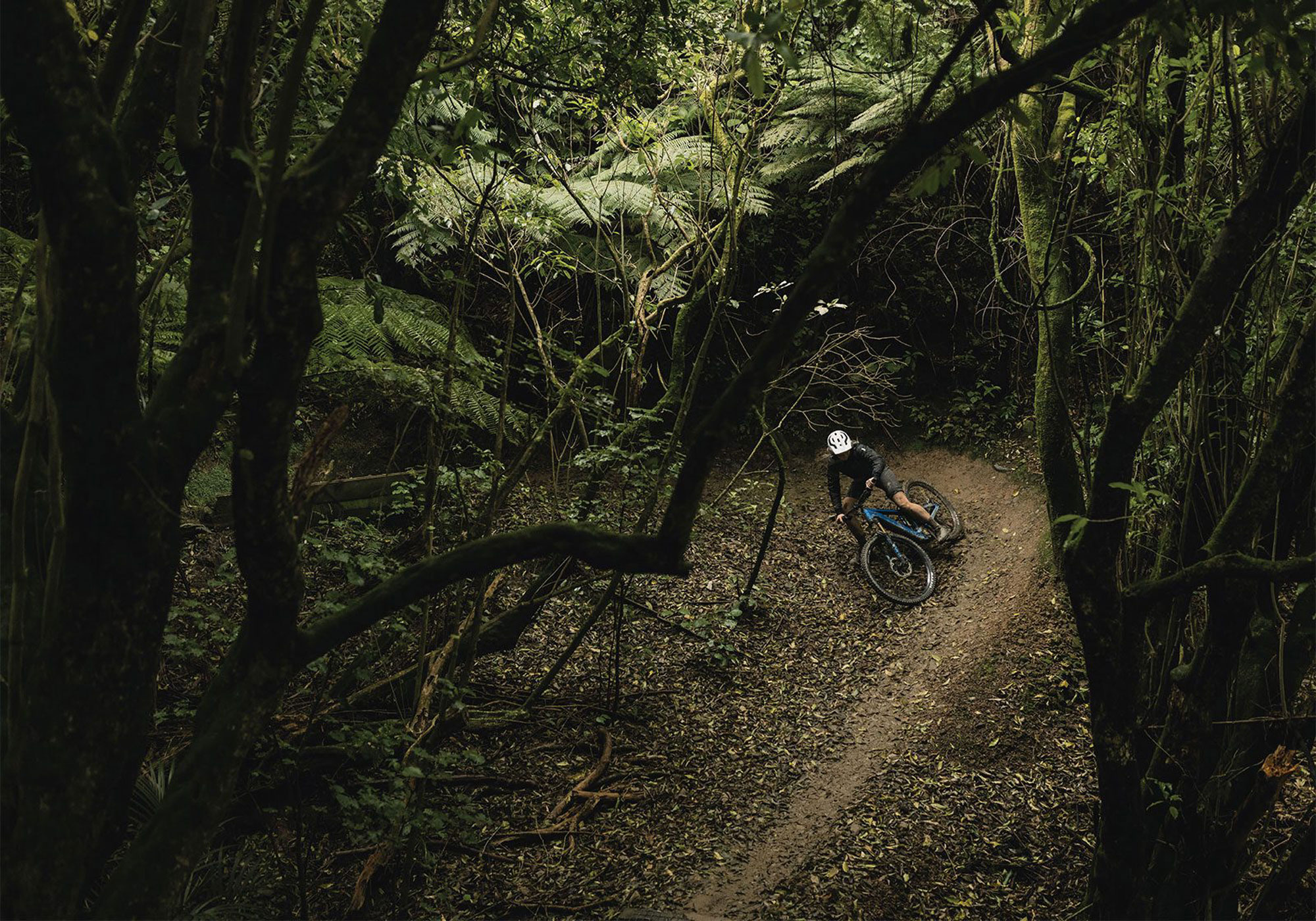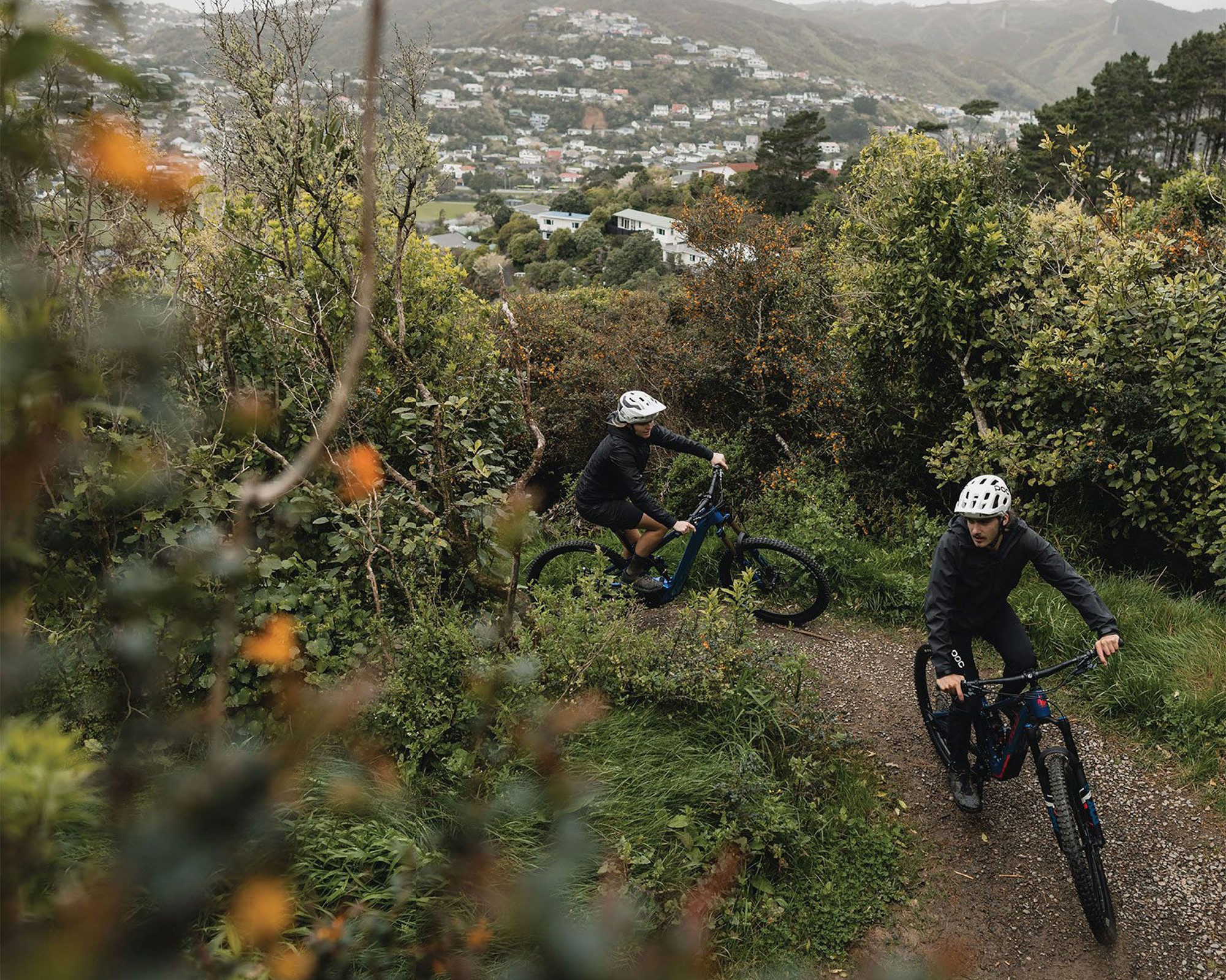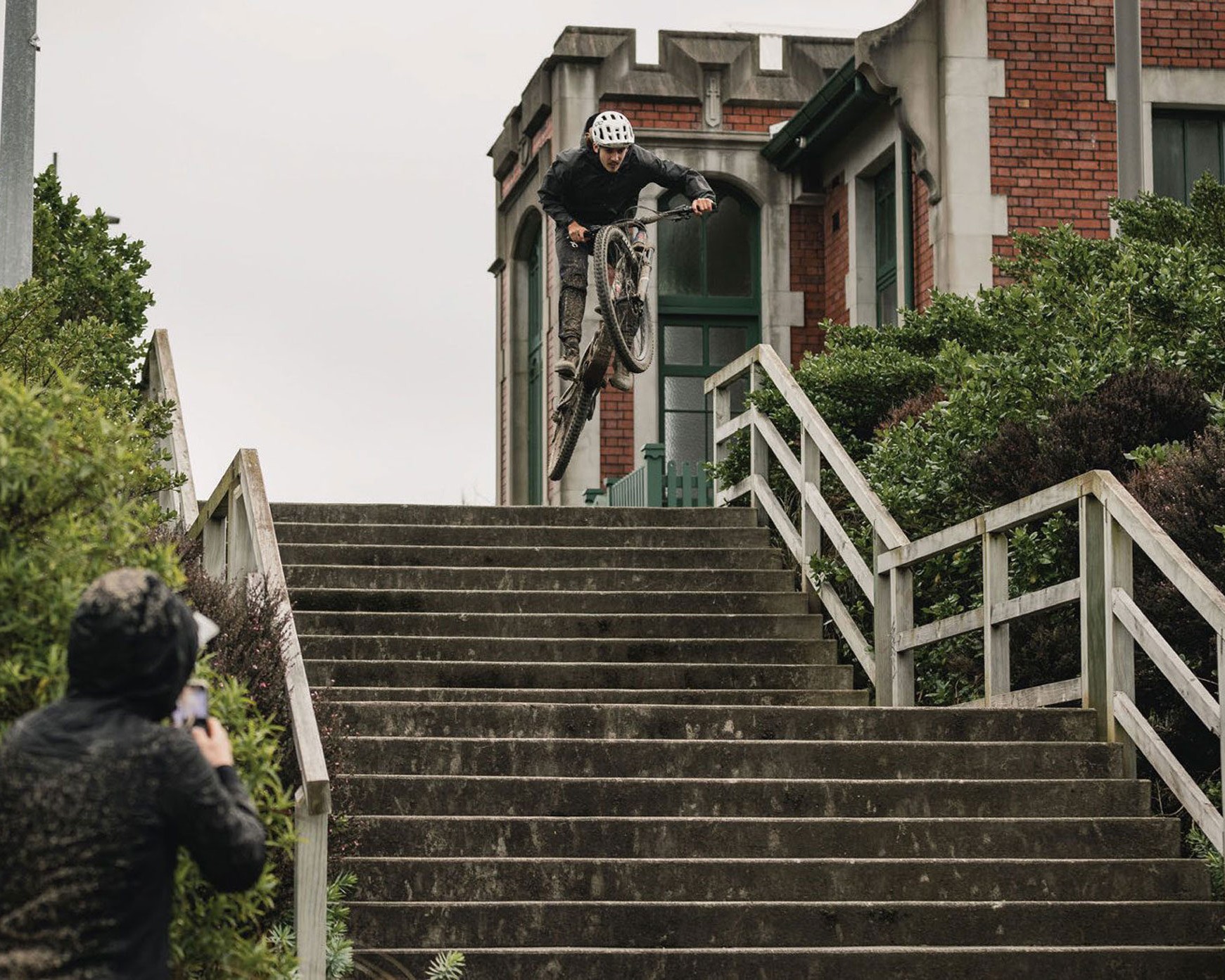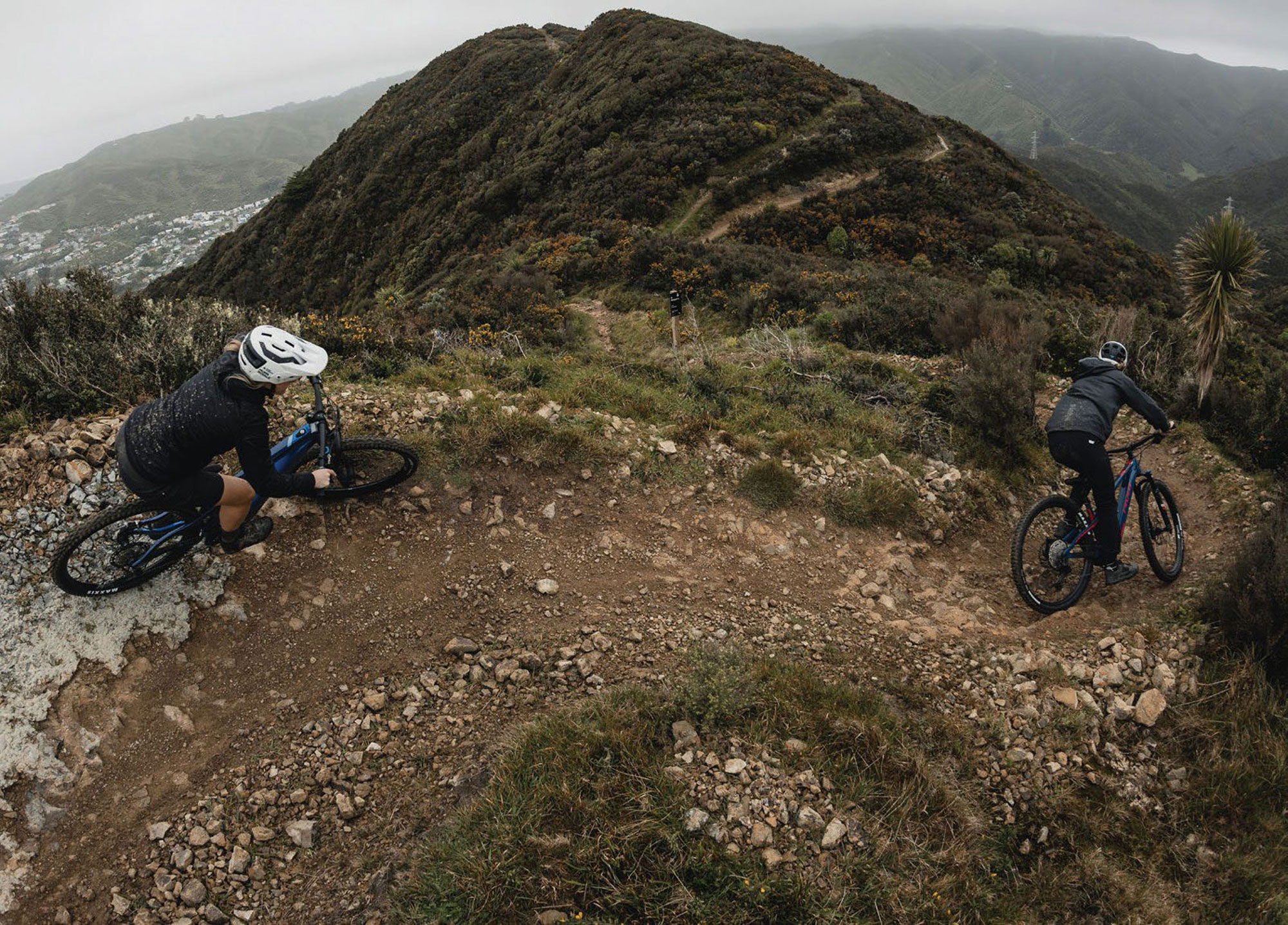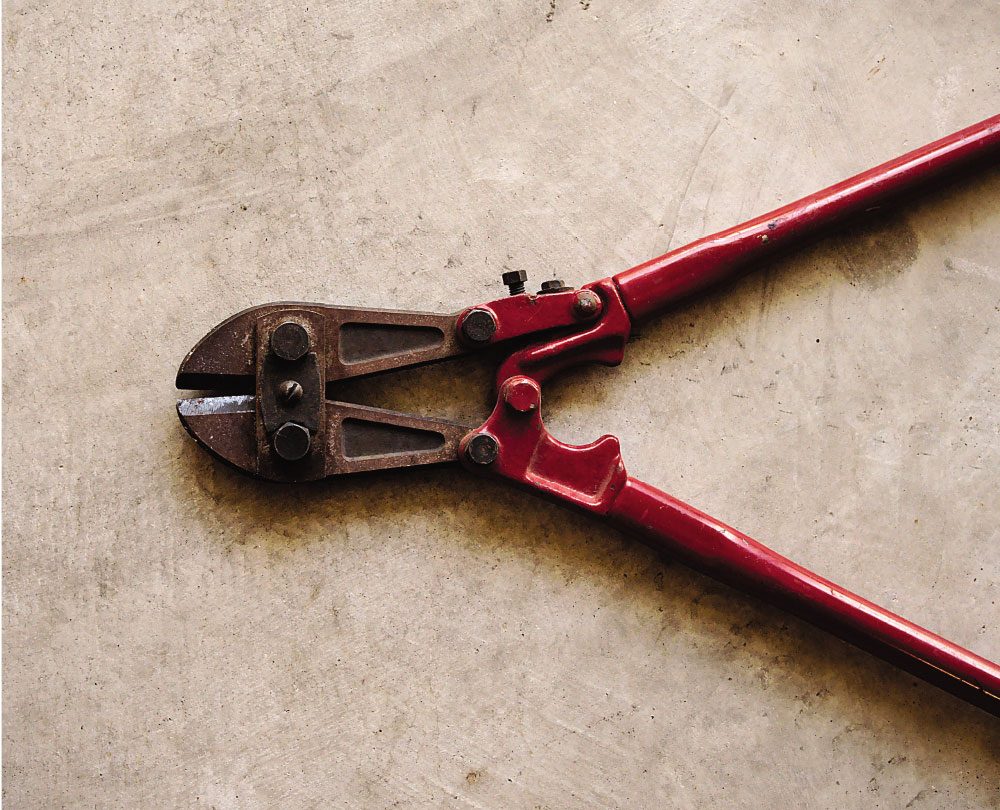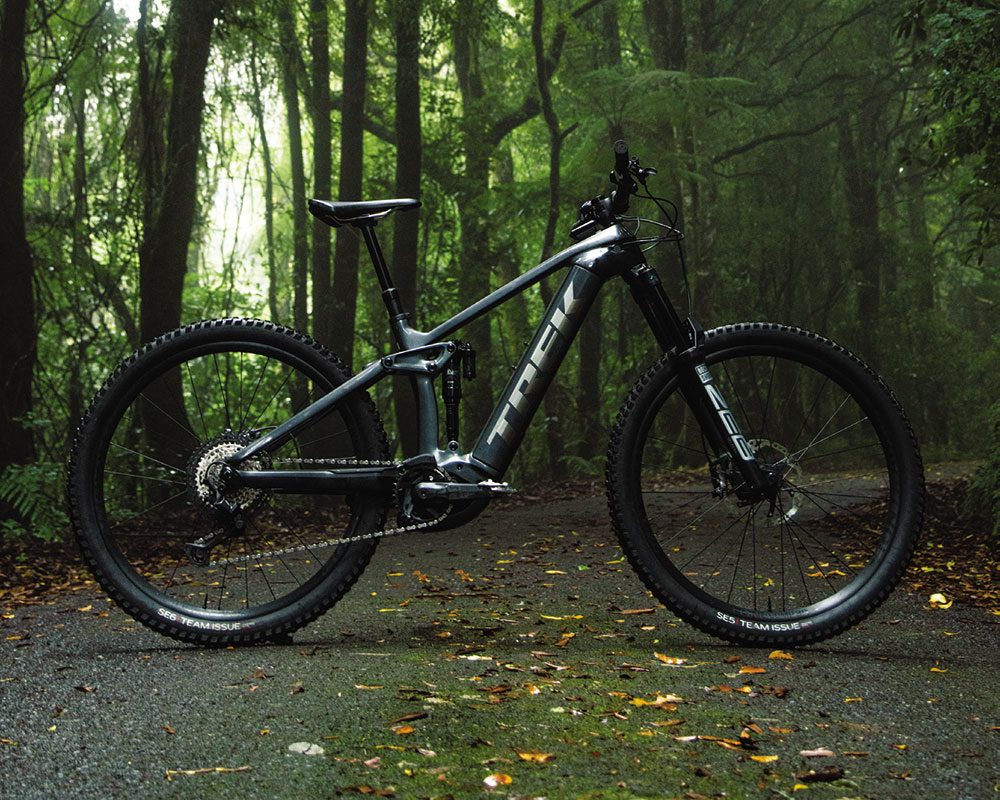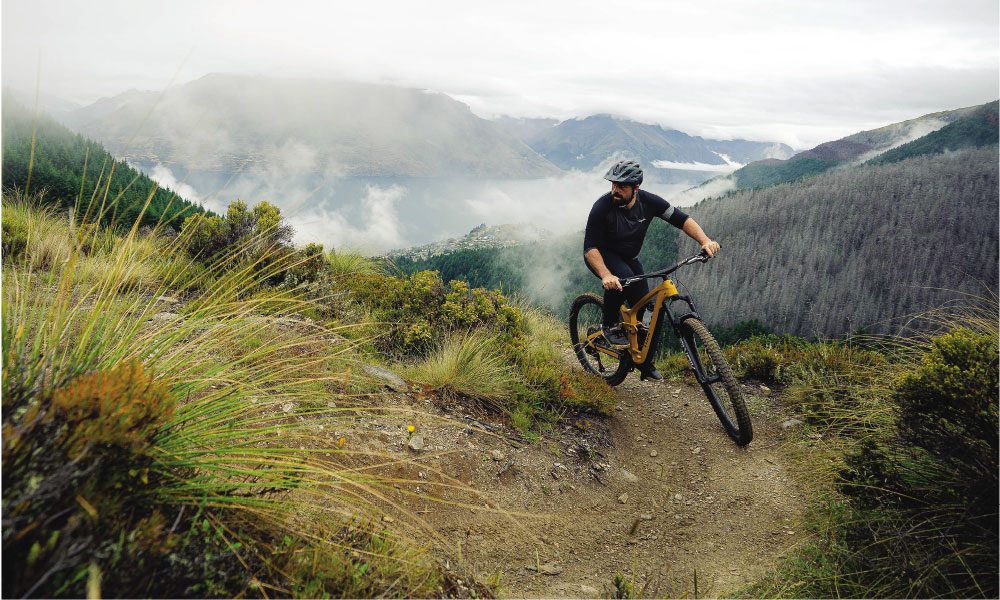Welcome to Scotland
Words & Images Jake Hood
“There’s no such thing as bad weather, just inappropriate clothing,” This is a common saying that’s thrown around in Scotland. Well, whoever said that is a flipping idiot, I thought to myself as the rain hammered down on us at the start of the men’s DH final in Fort William.
The rain drenched everything in sight, showing no mercy; not even my triple Gore-Tex 50,000 waterproof Montbell jacket stood a chance. Welcome to Scotland.
This year would see the inaugural edition of the UCI Cycling World Championship. Yes, there have been World Champs before, but this is slightly different. Instead of just select events being held in different places worldwide, it would all be condensed into one country over 11 days. There were 115 events and 101 para- events over 13 different disciplines. There would also be a medals table for the countries competing, like the Olympics and (also like the Olympics) it’s to be held every four years. The inaugural one was to be hosted by Scotland.
With a big break in the Enduro World Series between rounds, it seemed like no better time to head back to the motherland to watch some events. It had been four years since I was last there – four years too long. I’d almost forgotten that it rains a lot in Scotland, though I was quickly reminded during my eight week stay. I managed to only get three days without it raining, to some degree, throughout the day.
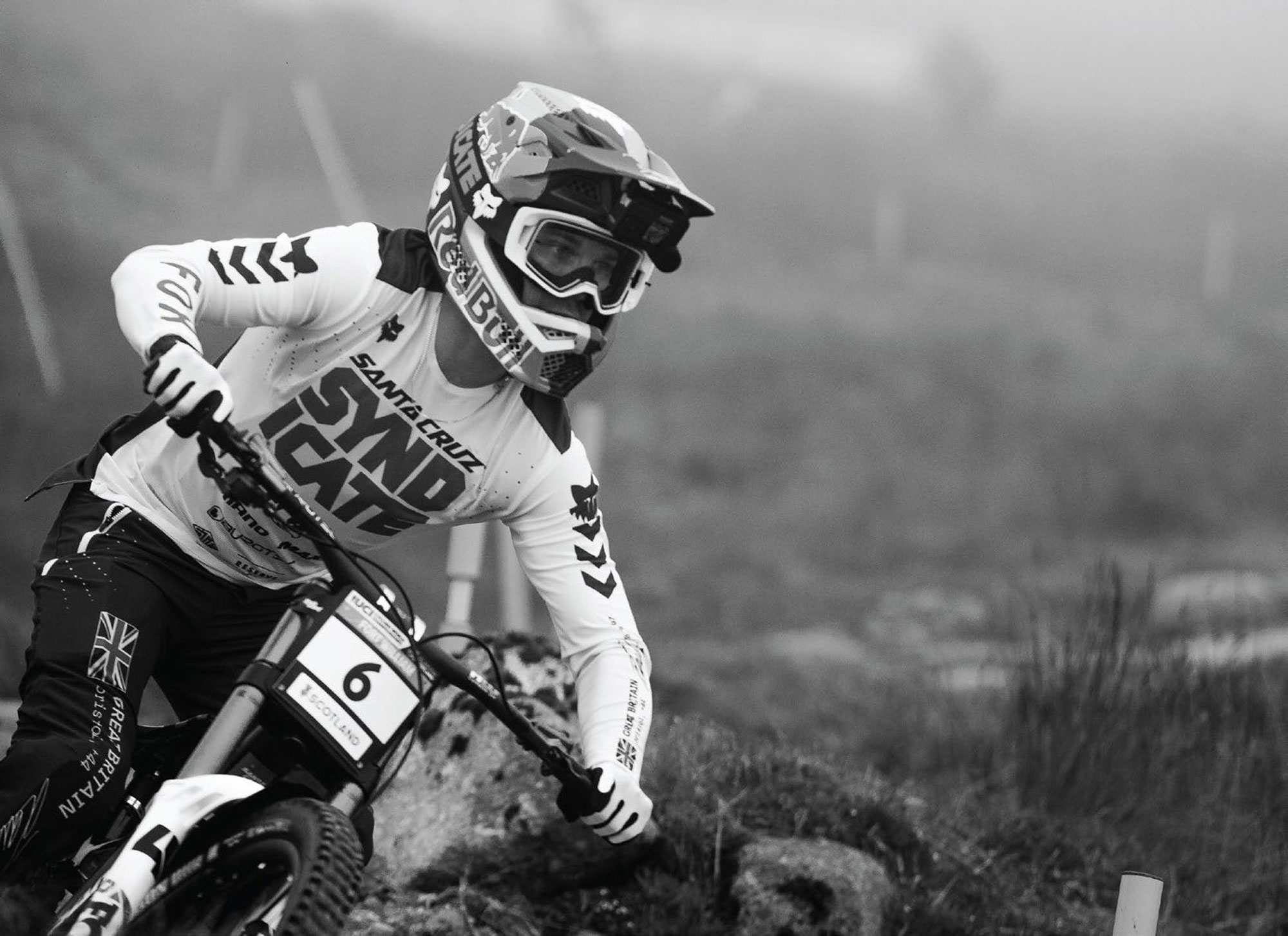
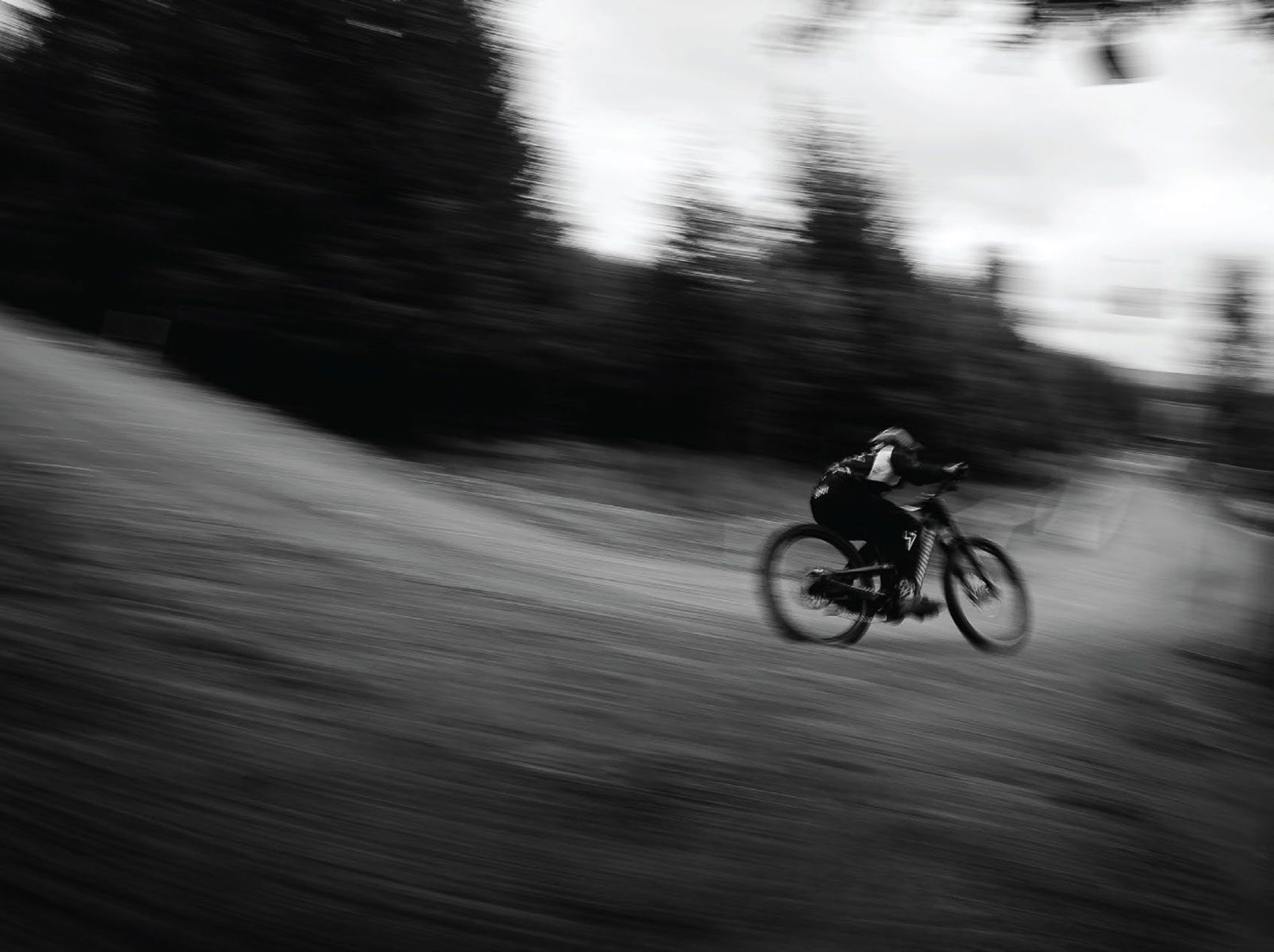
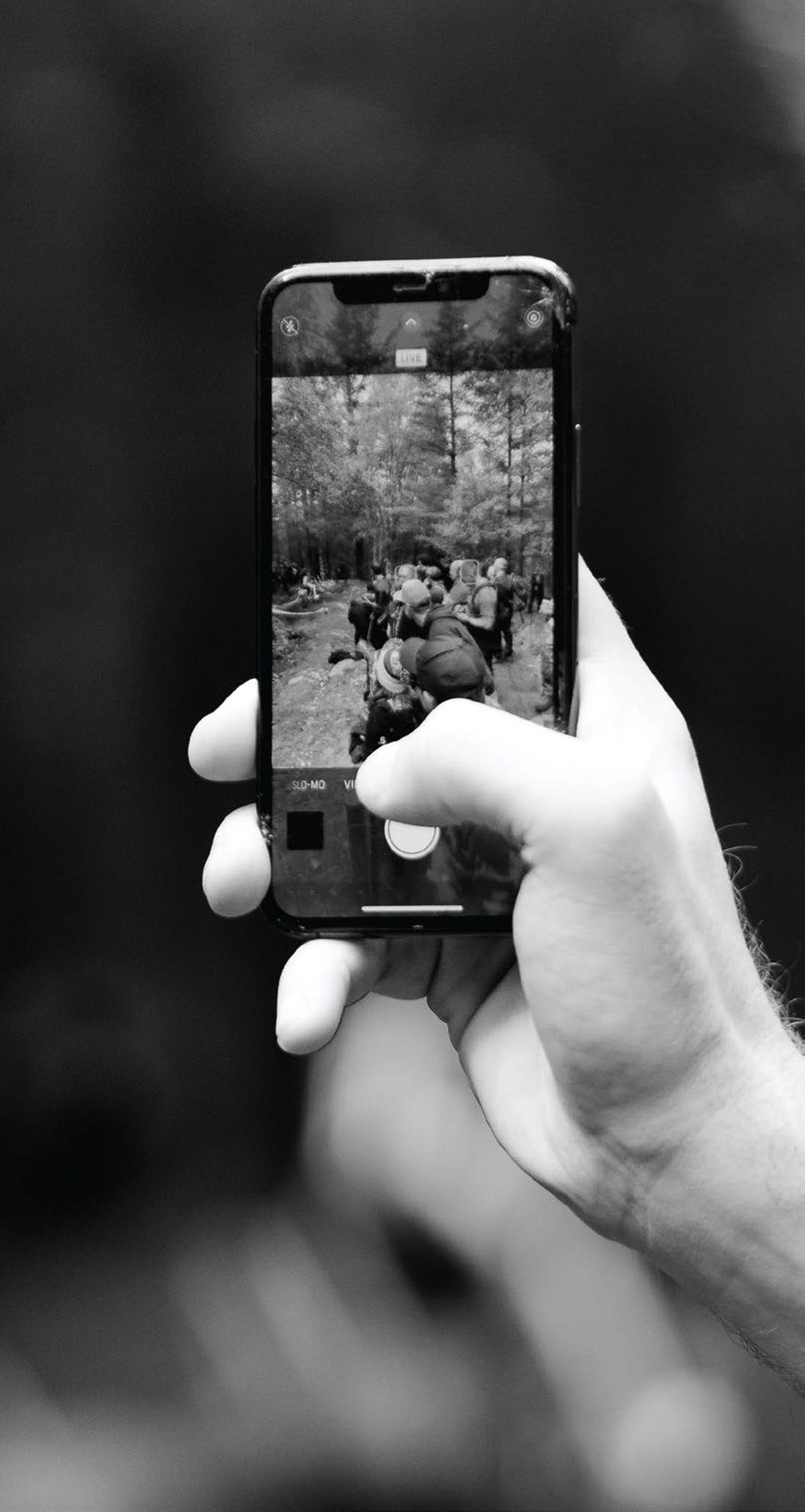
The downhill was going to be held at the world-famous Fort William track. It has been a staple on the circuit for years. My first experience of being at this place was the World Cup in 2005 as a young lad. It was a magical place. I was in awe of the pits, the riders, the bikes, and the track. The place was packed with people and, walking around the pits, I would stare at the bikes for hours, fascinated by them as well as the riders fly down the track at stupid speeds. It was incredible as a young lad. That year, Steve Peat won and I’ve never heard a sound like it when he flew across the Visit Scotland jump into the finish area. The crowd erupted in noise that built in a crescendo until he crossed the line and won. At that point, it was like an explosion of sound and emotions. It was defining. People cheering, banging things, blowing horns. I get goosebumps even just thinking about that moment. When people talk about being at Fort William WC, they often talk about that energy.
Fort William last held the Downhill and XC World Champs back in 2007. I was at that race as well and it was a wet, wild week. Sam Hill dominated the men’s field to take the win, and Sabrina Jonnier won the women’s, but it was Ruaridh Cunningham (the Scotsman) who stole the show by winning the junior males DH and giving Great Britain its first rainbow in downhill.
I forgot just how beautiful the drive up to Fort William is if you head via Glencoe. The rolling green hills and farmland of central Scotland gradually turn into dense woodland, sparse heather-covered mountain areas, and sparkling lochs. It’s a beautiful drive that is very popular with tourists. As you enter Glencoe, you are greeted by towering, almost vertical, mountainsides that enclose the road. The valley floor is lush and green, crisscrossed by streams and rivers. Waterfall’s cascade down the mountainsides, and the atmosphere is one of wild, untamed grandeur. It’s a landscape that exudes both awe and a sense of isolation, but it’s also a reminder that it’s rugged up here. You have to respect the landscape, or it will bite back. Admire it, but treat it well. A short time after you finish driving through the glen, you arrive in Fort William. Above the town towers Ben Nevis, the highest mountain in the UK. It’s sparse and covered in rock. From a distance, it doesn’t look like there are any signs of life on there and it serves as a reminder that you’re in the Highlands now.
KIWI JNR. WOMEN
SACHA EARNEST, ERICE VAN LEUVEN, POPPY LANE

The respect you have to treat the outdoors with transfers to the downhill track on Aonach Mor. It sits three mountains over from Ben Nevis. It’s a historic track; rugged, hard and fast. A course of three parts, it’s 2.9km of bike-smashing, arm- pump-causing, leg-burning hell of a track that descends 547m. The top half weaves its way through the open moorland and its surface is made up of gravel, granite slabs, and rock. Rock graders litter the way down the track. It’s unbelievably rough. Spectating trackside, you often hear the sounds of rims being smashed into the super hard granite. You do not want to crash up here. During race day, spectators will walk down the track through the moor, trying to avoid the bogs and slipping in the peaty soil beneath their feet. I, for one, didn’t manage this and took a few tumbles. After the open section, you make it to the most technical part of the track, the woods. By this point, your arms and legs are burning. You’re struggling just to hold on, but you have to navigate your way through the twisty, wet, muddy, root-infested bit of track before holding as much speed as you can onto the motorway. You might not win the race in the wood, but you can certainly lose it. One mistake could cost you a lot of time. Finally, you make it to the motorway. A long run into a hip jump catapults you into the row of jumps that guide you to the finish area. It may seem like the simplest bit of track, but it’s proven to be a very crucial part of the race. Races have been won and lost here before. To finish off the track, you jump into the finish area before descending down the “wall” into the last jumps and drops of the track before you cross the finish line. It’s a savage track, unique to everything else that gets raced, one that always provides thrilling finals.
Though it is remote, people from all over the UK flock to this race. It’s incredible just how many of them make the trip. On race day, there’s a sea of people throughout the pits and up the hill on the track. Sometimes it’s hard to stroll through the pits because of the number of people. The UK fans really get into it; some dress up in crazy outfits, and some dress down. Occasionally, you get the odd streaker. The true spirit of the event, though, is the wild camp. Located not far from the event, a 20-minute walk maybe, a large farm field gets turned into a campground for the weekend, with a mix of tents, vans, and campervans. It has real festival vibes, and huge parties happen there that go on until the wee hours. People wake up hungover only to continue drinking to help get them ready to watch the racing of the day before continuing to get back on it for the rave that evening. It’s a non-stop party all weekend.
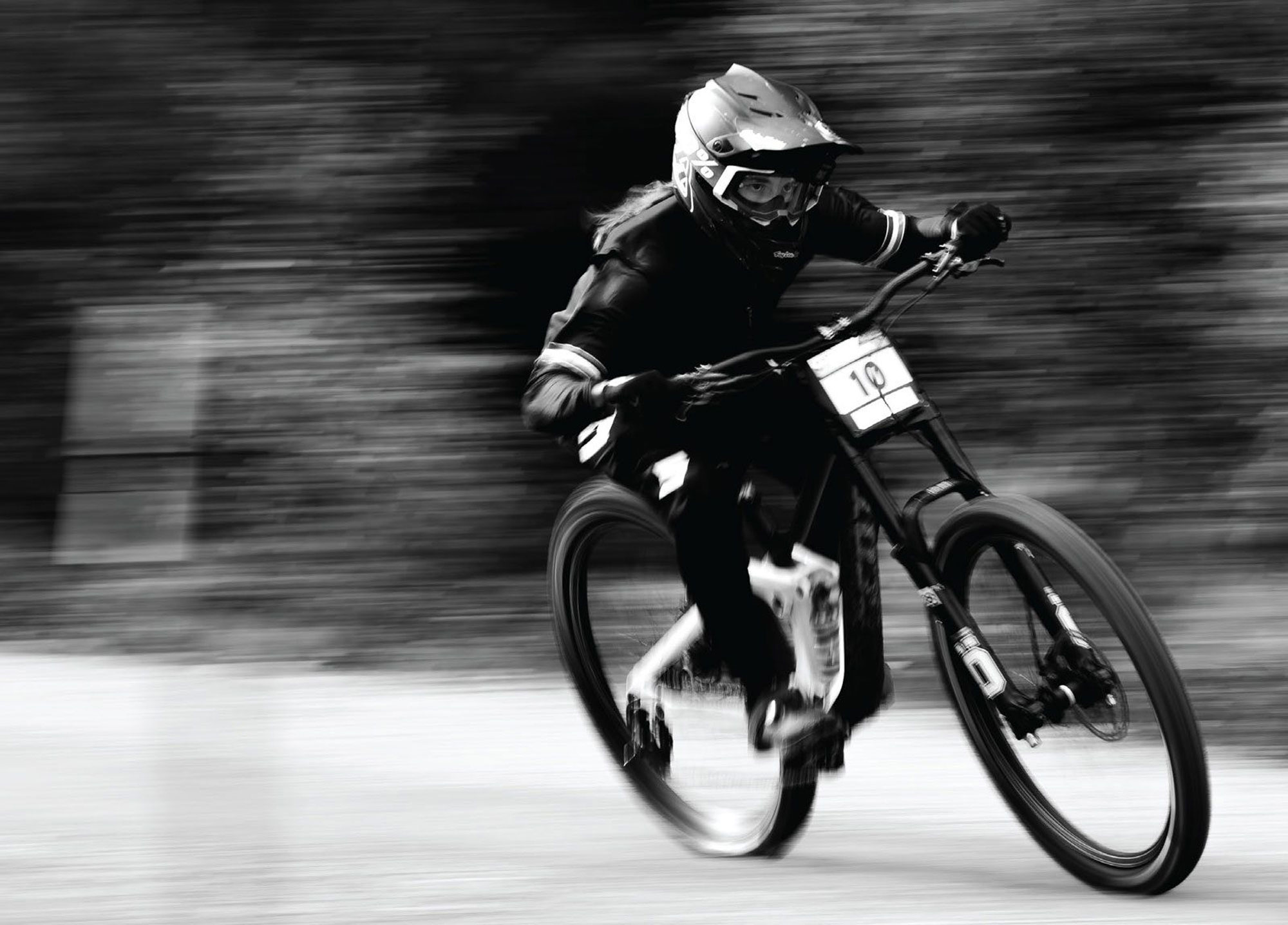
THE RAIN continued to lash down, SATURATING EVERYTHING IN SIGHT.
There are a couple of essentials you really need to pack if you decide to come and watch this race. First of all, bring your waterproofs. At the end of the day, we are in Scotland, a country synonymous with bad weather. It might be forecasted for sunny skies throughout the week, but this is the Highlands. The weather can turn on a dime. So be prepared and pack those waterproofs. The other essential, and I mean essential, is getting yourself some Smidge. What is Smidge, you might ask? Well, in Scotland, we have these little pests called midges, which are basically tiny flies that love to bite you. They truly are pests. They will swarm around you, biting you all over. No part of you is safe. If you’ve been to Scotland, chances are you will know how bad they can be. They suck, but Smidge is a spray-on repellent that keeps these little insects at bay. I’ve warned you. Don’t get caught out because you will know about it.
The weather was on and off throughout the week and played a pretty big factor in the race. It stayed good for the day of the juniors and qualifying races; what a day that was for NZ. Poppy Lane was one of the first to drop in the junior women’s category. She put down a blistering run that saw her comfortably in the lead and onto the hot seat. Junior woman after junior woman tried to beat that time but couldn’t. Poppy was in the hot seat for a long time, looking surprised every time a rider came down and didn’t better her time. Sasha Earnest laid down a great run and got close to Poppy’s time but ended up 0.417 seconds behind. Was anyone going to be able to deny the win for Poppy? There were two riders left at the top of the hill: the fastest qualifier, Erice Van Leuven, and fan favourite, Aimi Kenyon, from Scotland. Erice had been dominating this year in DH and Enduro and, at Fort William, it was no different. She blitzed the course and came down into the lead by 5.208 seconds. It was a huge lead. Both Poppy and Sasha ran over and hugged her with a NZ flag. Were we going to witness history being made? Aimi Kenyon came down. The crowd was roaring and cheering her on, but she was back at the top in the first two splits. Poppy and Sasha were hugging Erice tightly in the hot seat. They were all tearing up. As Aimi hit the jump into the finish area, Erice knew she had done it. Aimi crossed the line in fourth place. It was a New Zealand 1, 2, 3. The girls got up and celebrated. I think they were shocked at what had just happened. I was tearing up watching them hug each other in joy; it was an emotional moment. The crowd was going wild. What an incredible thing to witness. It’s fair to say that the future is bright for New Zealand in women’s downhill racing.
In the junior men’s race, Germany got their first DH world champion. Henri Kiefer took the win with Canadian, Bodhi Kuhn, taking second place, and Léo Abella of France rounding out the podium.
The following day was the main event: the DH finals. As I rode to the event with my brother, his partner and my niece, the weather was looking pretty great. A few clouds around but mostly sunny skies. It looked like it was set to be an epic day of racing. There were thousands of people flooding into the event. Fans were everywhere: in the pits, up the track, in the grandstand. The food court was packed with people drinking and eating. The slight breeze and warm weather kept the dreaded midges at bay. The pits and expo village were bustling with people trying to see and get up close to their favorite riders while they got prepared in the pits. There was an energy about the place. It was going to be a special day.
U23 UCI WORLD CHAMPION
SAMARA MAXWELL rode a truly dominating race
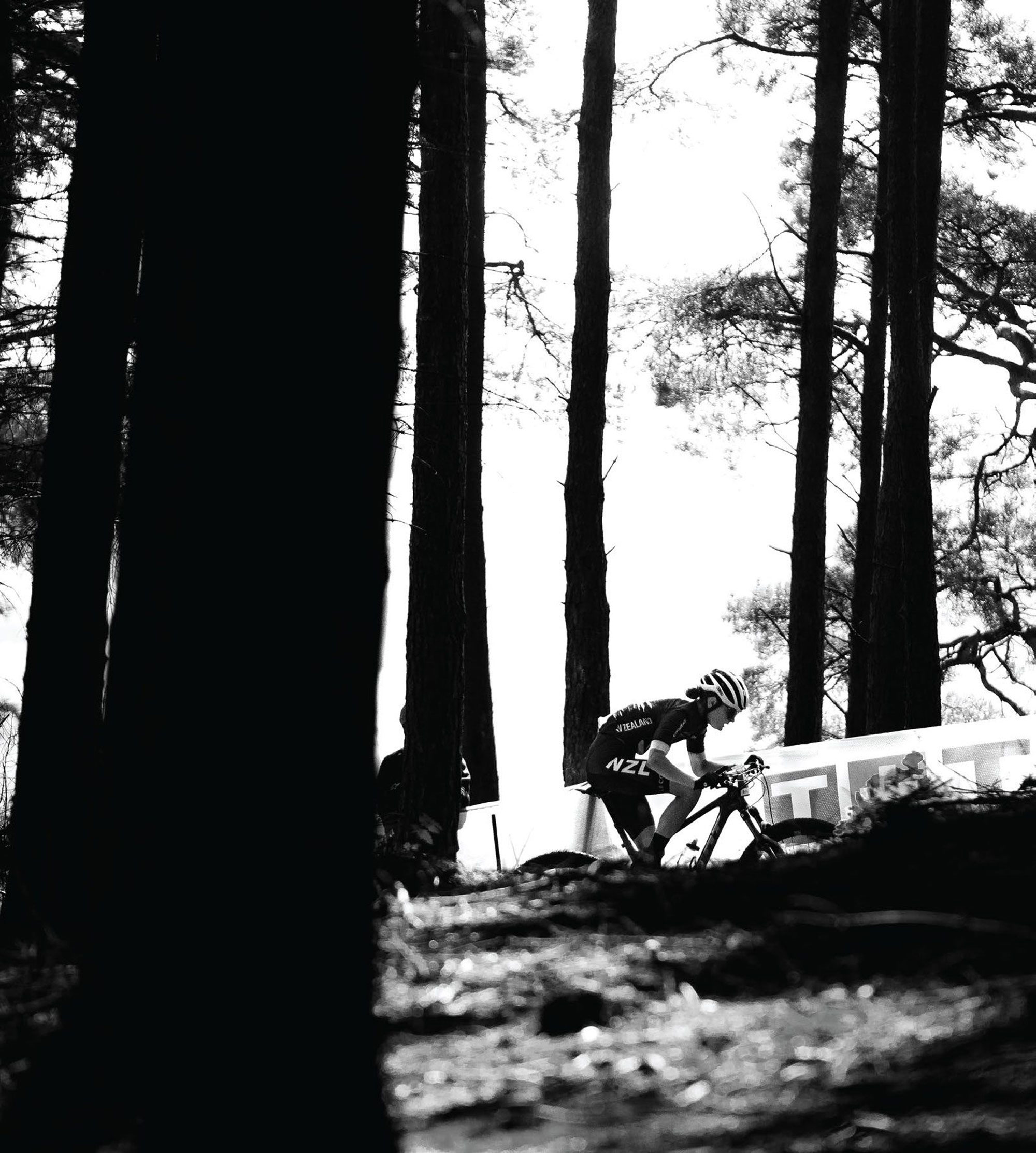
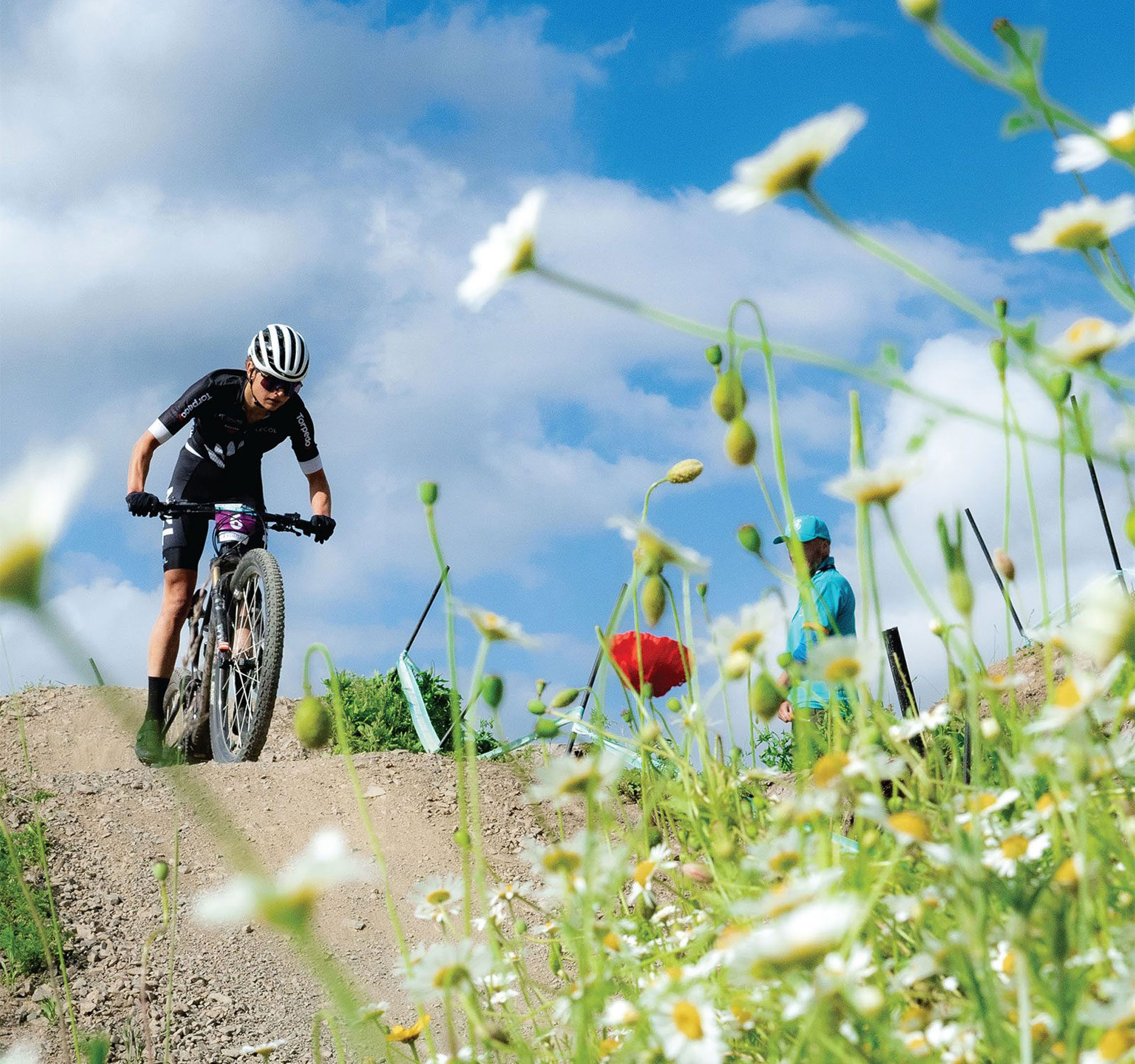
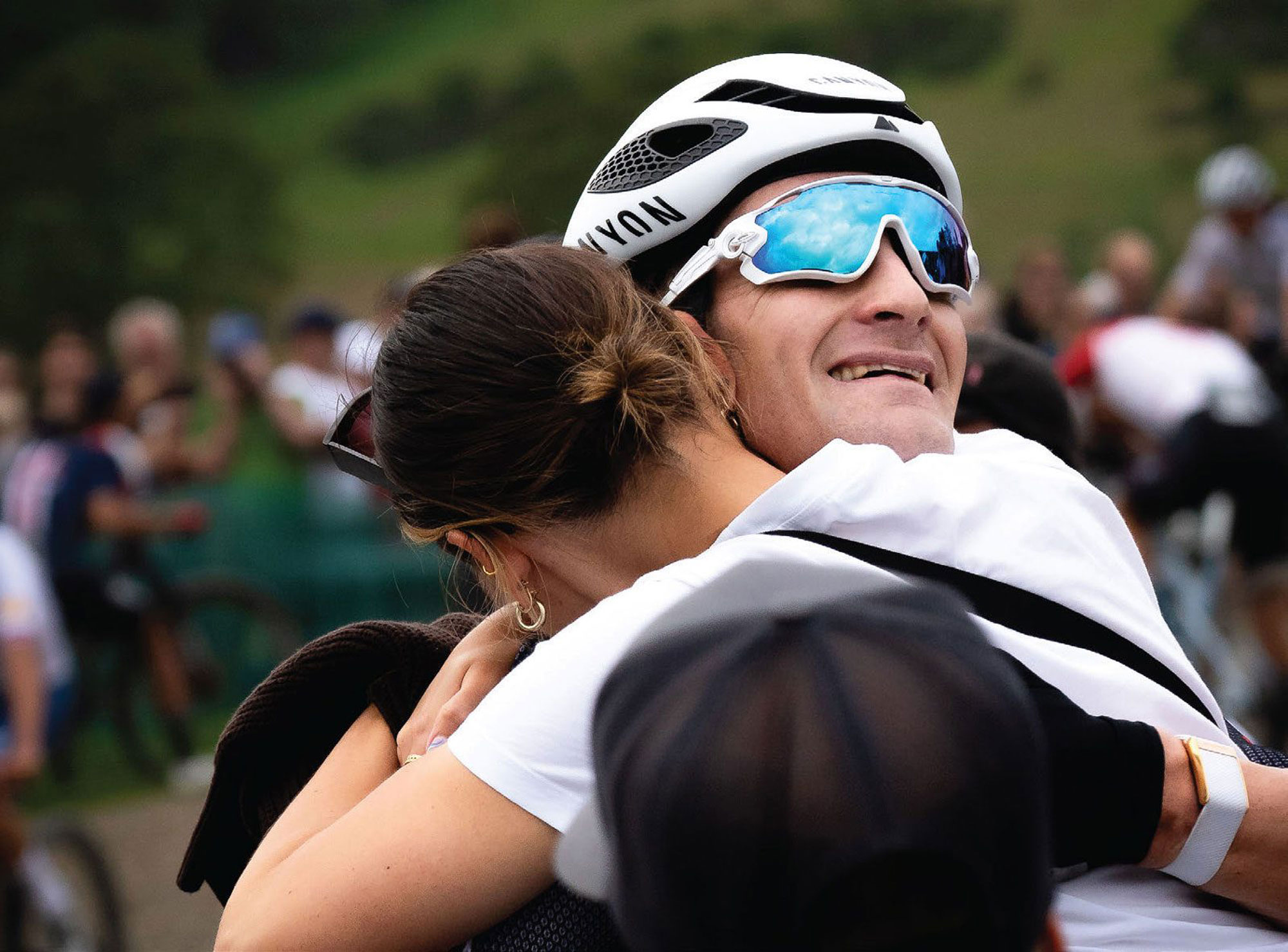
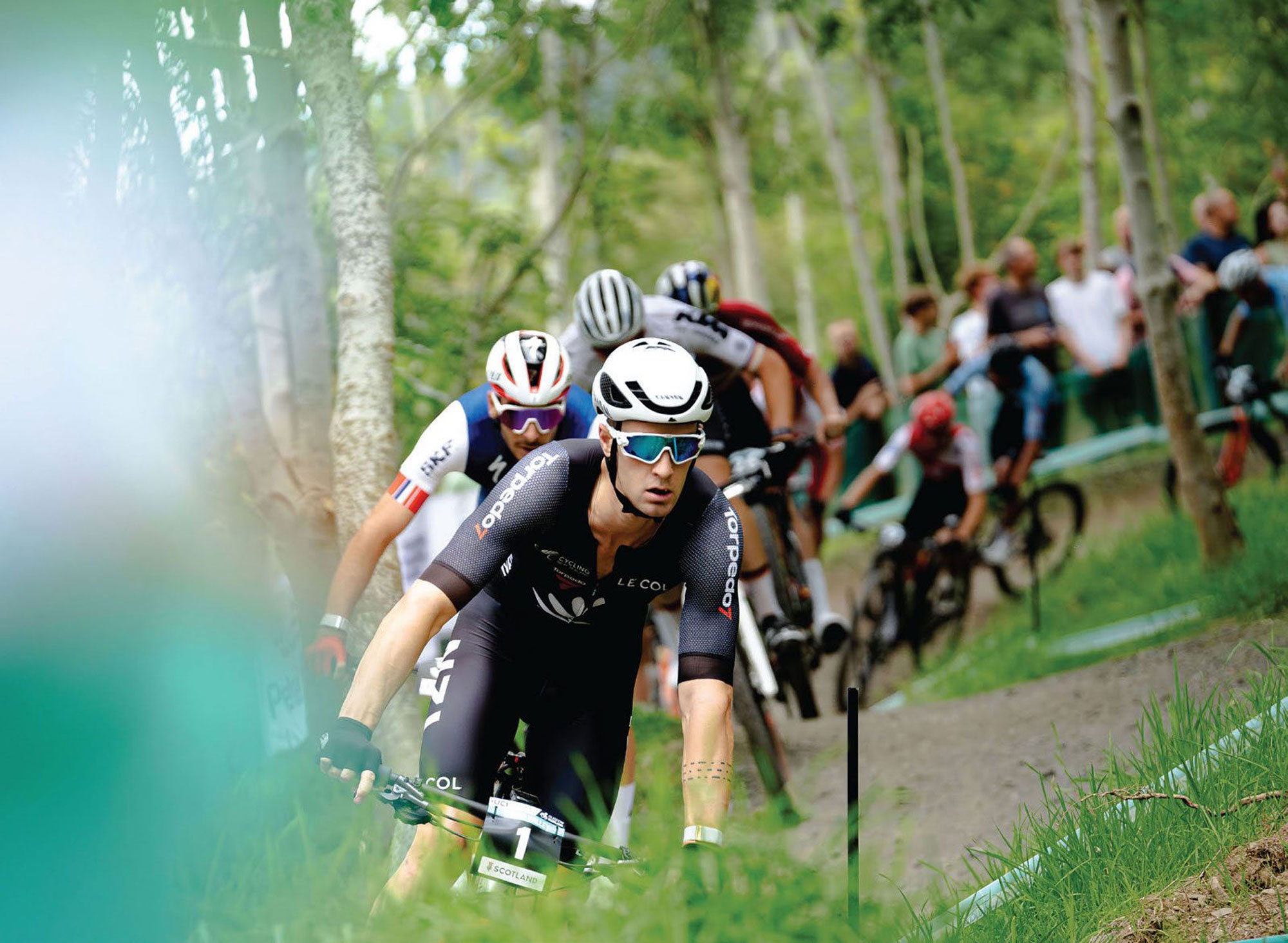
I managed to get there in time to catch a little bit of practice before the women’s event started. Emmy Lan was the first to drop, setting a time of 5m26.653s. From there, the times tumbled and tumbled. It seemed like every rider that came down was just going faster and faster. After the first 20 riders, Tahnee Seagrave was sitting on the hot seat. A pretty incredible feat after her huge crash into the barriers a couple of days before. Phoebe Gale came down to knock Tahnee off, only to then be knocked off by the local – and crowd favorite – Louise Ferguson. The cheer was huge when she crossed the line. People were stomping their feet in the grandstand, cowbells were shaking, and old bike parts were getting smashed together noisily. The MC was getting the crowd hyped up. The noise was biblical. It was a British 1-2-3 with 10 riders to go. A couple more riders came down, but it was still a British 1-2-3 until France’s Marine Cabirou came down and smashed the current leading time by 7.36s. That put a stop to the possibility of a British winner. Camille Balanche came down 0.341s faster. She was in the lead with two riders to go. Only Nina Hoffmann and Vali Höll could deny her a second rainbow jersey. Nina was up at the first split but behind at the second, but a crash in the berm just after the road gap would dash her chances of taking the win. Vali Höll was last to drop. She had been on form this year. She had seemed to have found her groove this year in elites after making some big mistakes in her first year. She was dominating the WC series for 2023 and did the same in Fort William, laying down a championship run. Making short work of the track and winning by 2.020 seconds. She was the only female to set a time under five minutes. Back-to-back World Champ wins for Vali; and I’m sure it won’t be the last for her. At the end of the women’s final, the weather was still holding out. It was hot; the sun was shining, and it looked like it was going to stay okay for the men’s race. As the first 30 men came down, it was holding, but the dark rain clouds were starting to show their ugly faces around the tops of the mountains. As the Scotsman, Greg Willison, was on his run, the heavens opened. Light at first before getting really heavy – I’m talking big- ass droplets of rain that soak everything. Greg came down to take the lead by 7.753 seconds. A few riders later, Angel Suarez came down just to pip Greg by 0.47s. It looked like Angel was going to be the last guy with a dryish track. I thought to myself: “This might be it; there’s no way someone is going to beat that time on a wet track. Is Angel going to win? Is it going to be one of those races that’s decided by the weather?”
The rain continued to lash down, saturating everything in sight. I got my waterproof jacket and pants on but it was so wet that, after five minutes, I was soaked through. From the grandstand, all you could see in the crowd was a sea of umbrellas. The track had completely changed. Riders were still putting down fast sections in the top, due to the fact it actually gets grippier in the wet but, from the woods down, it was a different story. Rider after rider came down, absolutely soaking wet and still pushing by the bottom, but no one was even remotely close. It looked like they were at war with the track, rather than racing it. I really thought the race was done… until Matt Walker came down. He was up at splits one and two and had made light work of the woods. It looked like he was going to be up coming into the motorway, until he had a huge crash. His front wheel slid off a metal bridge, and he drove himself into the ground. It was horrible to watch but, somehow, he got up and was okay. Maybe the dry times were beatable in the wet, but it would have to be a helluva run. Danny Hart came down and was looking good, but he lost around two seconds in the final split. Charlie Hatton was up next. I was hanging out with Innes Graham at the time, chatting with him about whether he thought Charlie might win the race. Innes had been working as a line coach for the GB team all week. “I reckon Charlie could be a good shout; he’s been looking so fast all week. Very consistent with his riding. It could be him,” he explained. Charlie set off out of the start gate. He was up at the first split. He was up at the second. He was riding amazingly. So smooth, fast, and controlled. There were no wobbles or bobbles. The third split was green as well. It was a master class in how to ride in the wet. He hit the motorway, and the split was green again. The crowd was going crazy. He was going to better the dry time. He jumped into the first arena and crossed the finish line. We had a new race leader! Charlie Hatton had mastered the wet conditions to take the hot seat by 2.464 seconds. The crowd went mental! There was so much noise. It was crazy! “I think that’s the winning run,” said Innes. Rider after rider came down, but no one could beat the time. Laurie Greenland came down and got closer than anyone so far, making it a British 1-2. The Austrian danger man, Andreas Kolb, set off out of the start hut. He was faster at the first split and faster at the second. He was up; on the run of his life. Was he going to topple Charlie? He came into the woods at a ridiculous speed but had a bit of a ‘moment’ and lost some time. At the third split, he was 1.5 seconds back. Not an unachievable amount to make up on the motorway, but it would be hard. At the fourth, he had made up a bit of time. He crossed the finish line; it was going to be close. There was a split second of silence, 0.599s back. Charlie had kept the lead. Andreas in second. There were three left at the top of the hill, any of them capable of winning. Troy was the first to drop of the three, but he was unable to better the time. Loic Bruni was next. His run was amazing, but it wasn’t enough and so it was fourth place for the Frenchman. Loris Vergier was the last man to leave the hut. He was behind on all the splits. As he hit the finish area, it was clear that he wouldn’t be able to better the time of Charlie. As Loris crossed the finish line, there was an almighty cheer. Charlie had done it. He’d ridden the run of his life – a true master class of a ride – like a true champion. He bettered everyone – in terrible conditions. It was a magical moment to witness. His family and friends jumped the barriers so they could hug him. What a way to finish off the DH weekend of World Champs! A British rider taking the top 1st and 3rd spots. A British-made bike in first and second. What a way to round out what might be the last ‘world’ level event at this epic race venue of Fort William (there are rumours going around that that was the last race at the venue).
THE NOISE WAS CRAZY
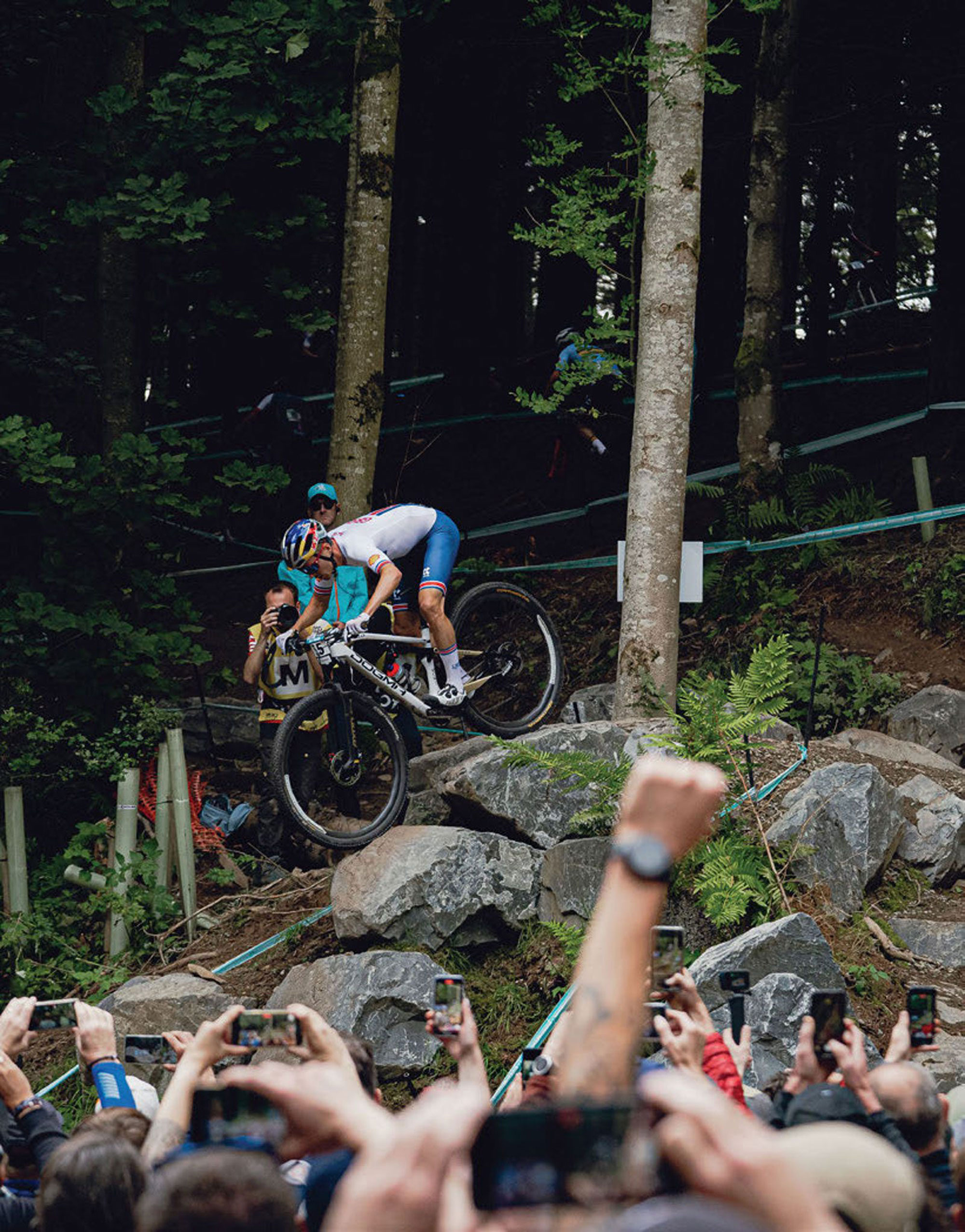
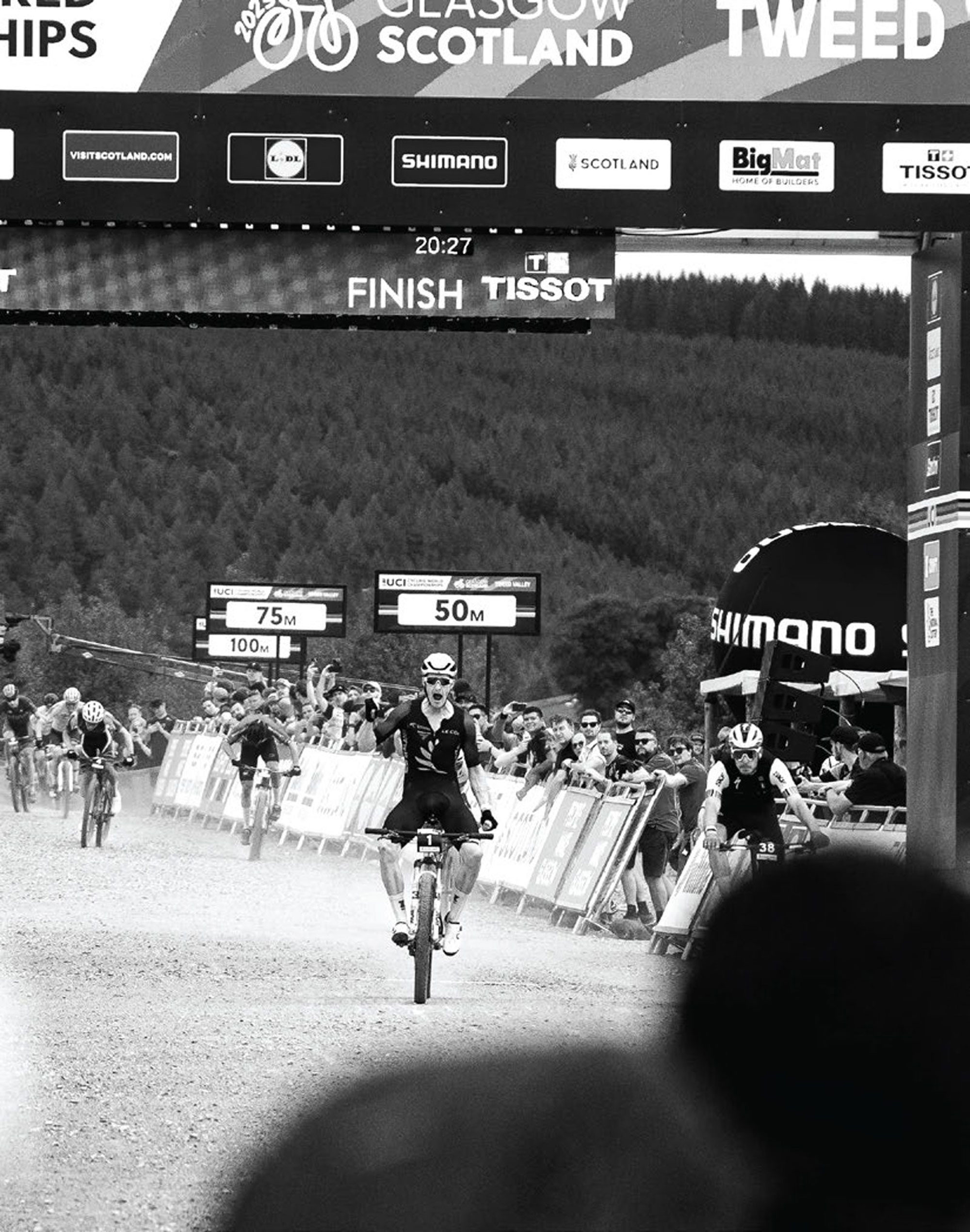
The following weekend, the XC World Champs were held in my hometown of Peebles. Well, specifically, Glentress Forest, about 3km from Peebles. I pretty much grew up in this forest. I rode there every weekend as a kid. I worked in the bike shop at the bottom of the hill for years. Many, many years of my life had been spent there, and now the World Champs were going to be raced here. Crazy. There had been some Enduro World Series events raced here in the past, but I never thought in my lifetime I would see World Champs being raced here. It made me proud to be from there and to have grown up in this small part of the world.
Peebles had really gotten behind the event as well. Bunting was hung up all along the high street. The local businesses had lots of bikes and World Championship-themed displays in their windows. The local butcher had made a special pie for the event. There was a buzz and energy around this normally sleepy, unassuming town. Throughout the week, you would see XC race bikes parked outside the cafes and coffee shops.
The event organisers had built a special one-off course just for this race. It was a really well- thought-out course that would make for some exciting racing. It used a mix of old walking tracks and fire roads for steep, pinchy climbs. Existing bike trails were used, mixed in with some freshly cut technical descents and climbs. There were a couple of gap jumps, with the man-made rock roll, The Salmon Ladder, a crowd favorite. It was quite technical and impressive to see being ridden with the seat up. The rest of the course used the new development of bike trails that had been built at the bottom of the hill. It mixed and linked different trails together. A great way to showcase this yet-to-be-open part of the hill. It was a course that had a bit of everything, keeping the riders on their toes and producing some exciting racing.
The first big event of the week was the short track. It’s basically a 20-ish minute all-out sprint on a shortened version of the XC course. I’d been to a few of these over the summer, at the World Cup events, and I have to say it makes for one of the most exciting events to watch.
The men were up first. Straight off the line, it was an all-out war as the riders battled each other to try take the lead and gain control going into the descent. Luca Schwarzbauer powered his way through and was in the lead into the descent. The fans were out in force, hanging over the barriers and cheering at the riders. There were a lot of lead changes over the laps. The crowd favorite, Tom Pidcock, had been working his way through the field after starting a few rows back. Sam Gaze had been hovering around the front, just waiting to make his move. Lap after lap went by. No one was really making any attacks. Watching them go by, I could not believe how fast they were going. The speed they rode the descent at was so impressive and, when they hit the start-finish straight, they got even faster; warp speed. I didn’t know you could go that fast on the flat. On the last lap, Gaze made his attack. He went on the climb, and no one could match his pace. He just kept pulling and pulling, almost like he had an extra gear. Tom Pidcock made a move as well, up to 4th before making a huge dive up the side of Luca Schwarzbauer on the last turn. Gaze held the lead across the line and took the win. Victor Koretzky in second. Tom Pidcock in third. It was a huge moment for Gaze and another Rainbow Jersey for NZ. Tears of joy, and a huge smile, were present on the normally emotionless face of Gaze as he hugged his partner. What a race that was.
Up next was the women’s short track. To say that Evie Richards was the people’s favorite would be an understatement. Throughout the practice laps, everyone was shouting “GO EVIE!” as she rode past. She was definitely getting the biggest cheers of the event, and it was understandable. The UK fans adored her. If you can say one thing about the UK fan, it’s that they are super patriotic.
The race had an explosive start. Just like the men’s, it was a race to be first into the descent to try to control the race. Italy’s Marina Berta led up the first climb. The big names were in close pursuit: Pauline Ferrand Prevot, Evie Richards, Puck Pieterse, Rebecca Henderson. There was a breakaway group of six riders, and that was where the race was really happening. Lap after lap, the lead rider of the group would change. By the halfway mark, it was anyone’s to play for, but one rider was playing it smarter than the rest. Prevot didn’t seem to want to take the lead, just sit in the pack, save energy, and wait for her moment. By lap seven, a few of the chasing pack had caught the leading group. Lap nine saw the first real attack of the race. Evie set off on her bid for the win. You could see in her eyes how much she wanted this. She went off. Prevot and Puck Pieterse chased. They broke away. Into the final lap, Evie was leading. The crowd was going mental. Was she going to do it? As they hit the climb, the patient Prevot made her move. She went, Puck tried, but she couldn’t match the pace – Prevot was in a league of her own. She went on to take the win. Puck would take second, and Richards would take third. Another super exciting race.
The following day would be another great day for New Zealand. Samara Maxwell rode a truly dominating race to take the win in the U23. She led from start to finish. No one was even close to her. She was truly in a league of her own in this race. It was an incredible performance to witness. Another gold for NZ.
Saturday was the big day: the Elite XCO; the final mountain bike event of the World Championships. Thousands and thousands of people descended upon Glentress to watch the show. The cycleway from Peebles to the event was so unbelievably busy with spectators riding to the event, and it was so cool to see. Fans lined the track with flags flying, vuvuzelas blowing, cowbells ringing. Places like the Salmon Ladder were completely packed, with maybe two or three hundred people in a tiny area, all watching their favourite riders tackle the technical section. The sun was out at the event but there were dark clouds lurking around, making for a moody atmosphere. It was shaping up to be one heck of an event.
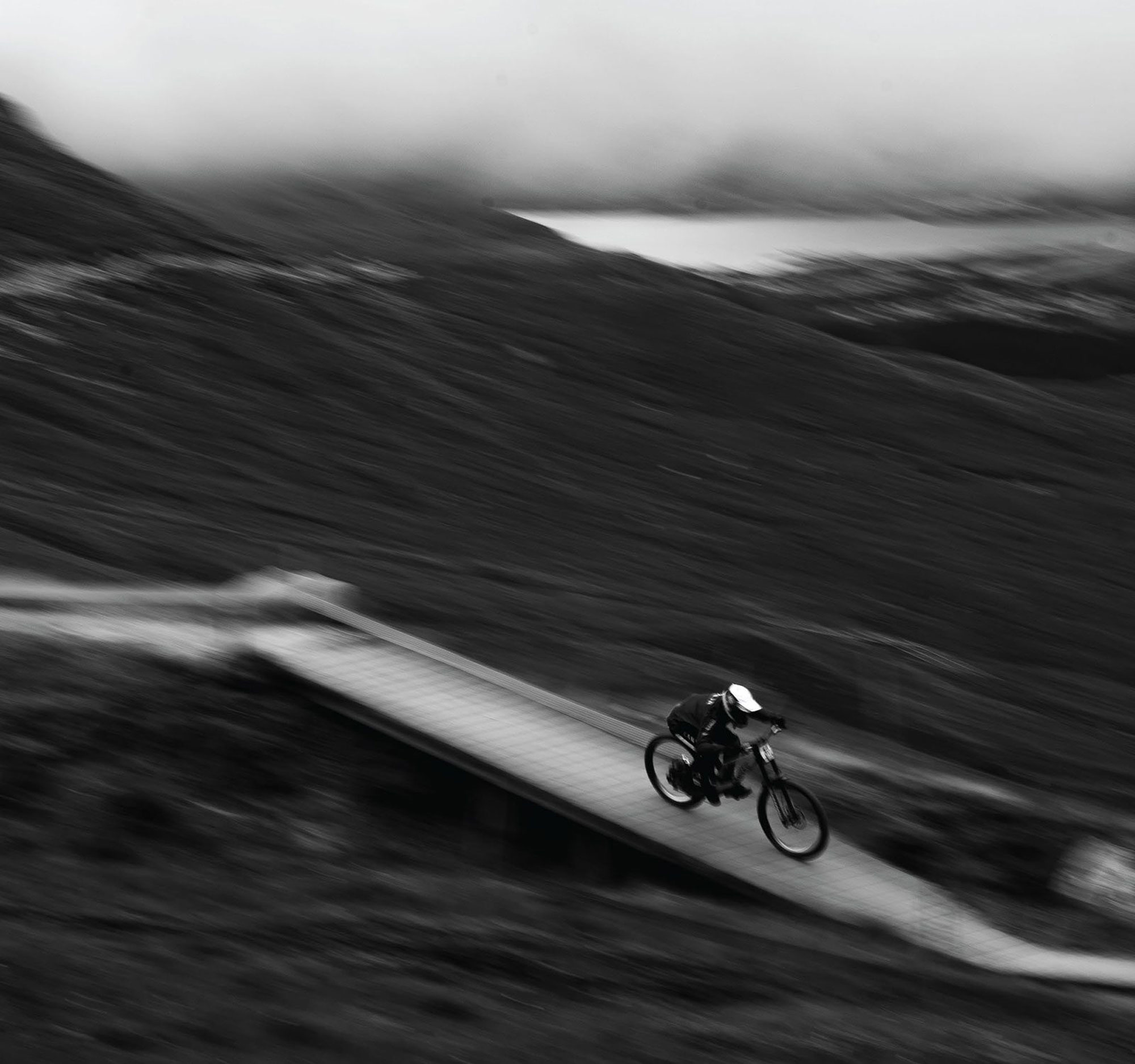
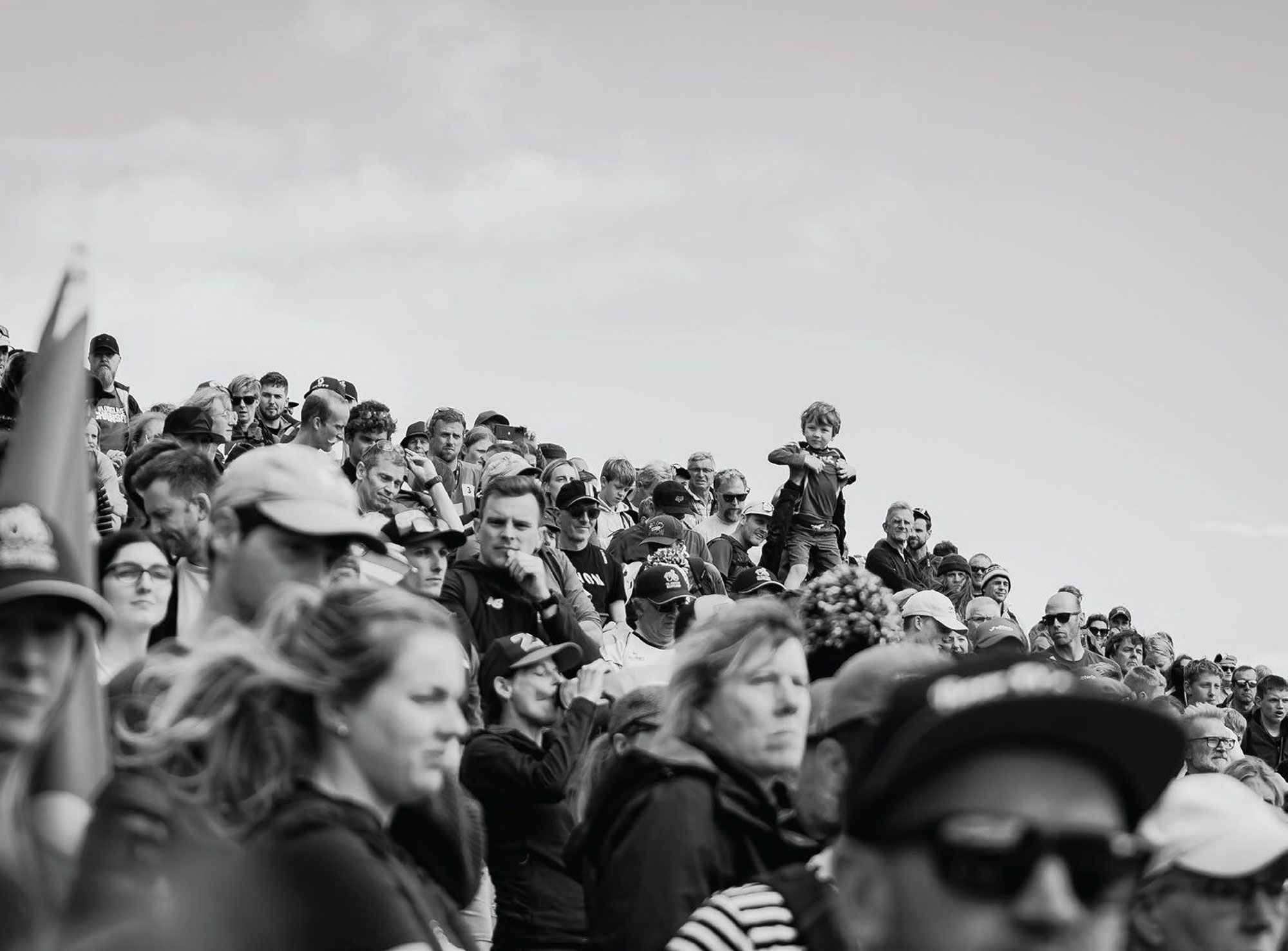
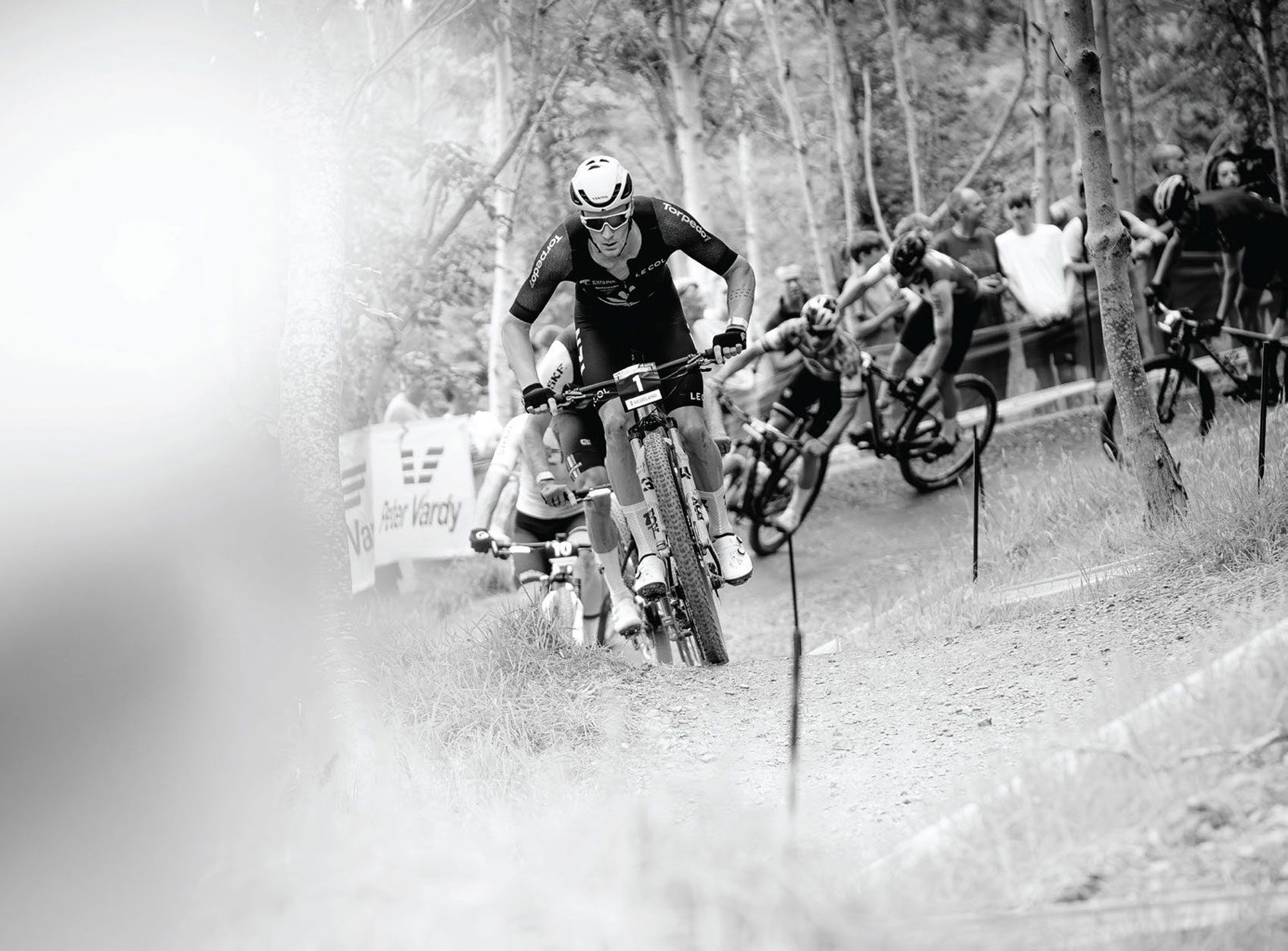
2023 UCI MTB WORLD CHAMPS
Scotland, you did well.
The women were up first. Seven laps plus one start lap, making up 26km in total. How was it going to play out? Off the start, Puck Pieterse and Loana Lecomte made an early attack to get out front and take the lead into the first main climb of the lap. The short track champion, Pauline Ferrand Prevot, had a bit of a tough start, resulting in her trailing 16 seconds off the pace going into the first descent. The fan favourite, Eve Richards, was in the mix, a couple of seconds back. You could tell how much this race meant to her, just by watching her facial expressions. She was giving it her all but, alas, it wasn’t her day. Loana Lecomte put the hammer down on the descent to put a good gap between her and Puck. Prevot wasn’t going to let them get away, though; she set off in pursuit of Lecomte. After the first lap, Prevot had narrowed the gap from 16 to five seconds. She was on a mission. By the end of the first big climb on the second lap, she had passed Lecomte and was riding off in formidable fashion. She didn’t even look like she was trying; in a class of her own. It was her race. She went on to put on an absolute master class, taking her second set of rainbow stripes of the week. Lecomte would go on to take second, while Puck came in third. The final event was the men’s XCO. The riders lined up on the start line. Big names were getting announced by the MC. It wasn’t just big names from XC lining up, though. Peter Sagan was racing. Mathieu Van Der Poel was looking to do the triple after having won the rainbow stripes in road the week before, and cyclocross earlier in the year. Tom Pidcock and Sam Gaze were placed a few rows back. Eight laps plus one start lap – a total of 29km of racing lay ahead. It was an explosive start; straight off, people were sprinting to fight for position. Disaster struck for Van der Poel, though, as he washed the front on the turn into the start-finish line on the first lap. He was out. As the riders hit the first main climb, it was Jordan Sarrou out in front leading, with Nino Schurter close behind. Nino laid down the law on the descent and took the lead after the first lap, with Sarrou, Pierre de Froidmont and Alan Hatherly all within a second of him. Alan Hatherly made an attack and took the lead, putting himself in front, but where was Pidcock? He was making up places after his mid-pack start. He’d made it up to 11th and was on the move. Hatherly, Sarrou, and Schurter were starting to pull away from the main pack. At the end of the second lap, Pidcock had moved up to 5th, only four seconds off the leading pack. The crowd was going crazy watching what Pidcock was doing. It was a superhuman performance. Schurter and Hatherly put down the hammer, trying to put some time between them and Pidcock. Sarrou was dropped -he couldn’t handle the pace. Pidcock moved up to third, but it wasn’t long until he caught Schurter and Hatherly. The noise as he joined the leading crew was crazy; a massive cheer could be heard throughout the forest. Pidcock was pushing them, but only Nino could match the pace as Hatherly started to fall back. It was a two-way battle for the win, with three laps to go. Something was happening behind. The quiet Kiwi, Sam Gaze, had turned on the afterburners and was working his way through the pack like a man possessed – passing riders like they were standing still. It was crazy, the amount of time he was making up. With just two laps to go, he was up to fourth. Pidcock had taken the lead and was riding his own race. He was just in a different league on this day; no-one was even close. He would go on to win the race in dominating fashion. But the really exciting person to watch in the last two laps was Gaze. He passed Hatherly to put him in third, and was catching Nino. Could he do it? Come from mid-pack and get the silver? Near the end of the seventh lap, he passed Schurter. As they entered the final lap, Schurter tried to hold back Gaze but, alas, it was too late. Gaze powered off, leaving Schurter hurting. Gaze was riding so fast that he managed to claw back 12 seconds off the lead that Pidcock had in that final lap. He had put in a heroic effort to take the silver. Schurter would go on to take bronze. A huge crowd had gathered at the finish line to see Pidcock cross the line and take the rainbow stripes. Boards were getting banged, cowbells were ringing, and cheers were shouted. What a way to finish. He rode an incredible race, coming from mid- pack to take first by a big margin. Amazing! After the medals and jerseys had been presented, Tom travelled through the crowd, up onto the grandstand. He stood there with the rainbow stripes, gold medal, and a British flag around his back. It was a magical moment to witness. The crowd was going crazy. A true champion.
In the end, Britain took the top spot on the medal table at the Inaugural World Championships, with 56 medals. New Zealand took eighth spot, just behind Switzerland. Not bad for a country of 5.1 million people. Best of all, NZ beat Australia by a long way.
World Champs have always delivered a whirlwind of emotions, crazy stories and great racing – and this year was no different. Scotland put on a heck of a show. The crowds were crazy. The racing was fantastic. These had been races to remember and I’m glad I was back to witness them in person. Scotland, you did well.
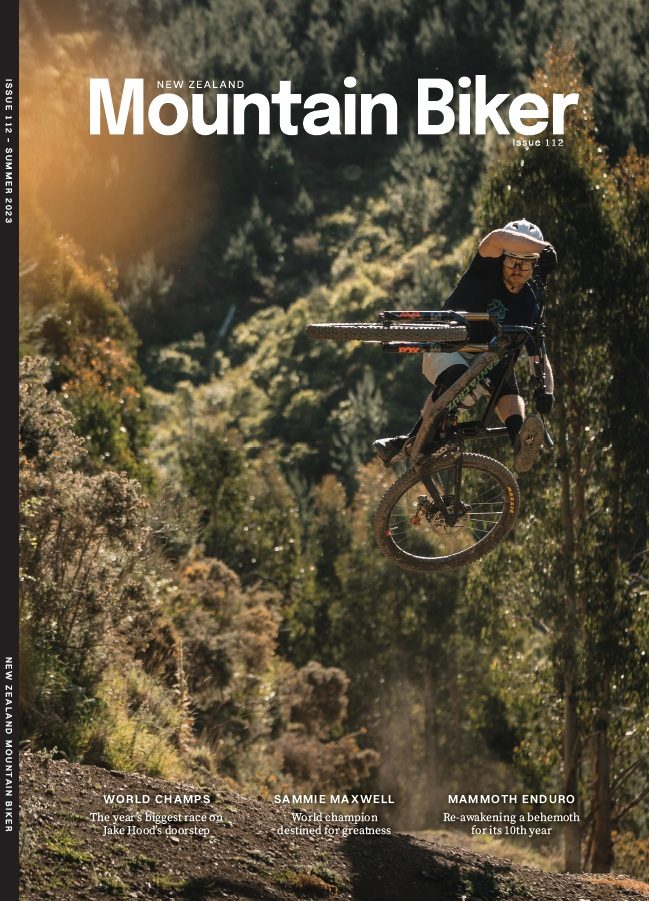
Burgtec Cockpit
Words Liam Friary
Image Cameron Mackenzie
RRP $315 – Bars | $199 – Stem | $54 – Grips
Distributor Everoutdoor
Burgtec Components are well known for their race pedigree. The UK based brand has been synonymous with downhill racing since ‘04. The Santa Cruz Syndicate, 50:01 crew and a large roster of riders have helped push the development of Burgtec’s sturdy component range that can stand high-level racing demands.
I have been riding Burgtec’s cockpit for the last few months. For a new Santa Cruz Hightower build, I went with a Burgtec Ride Wide Carbon Enduro Handlebar, Enduro MK3 Stem and Super Soft Greg Minnaar Signature Grips. Seeing that harsh UK trails helped to develop these products, I thought it would suit our harsh environment back home as well.
The Burgtec Ride Wide Carbon Enduro Handlebar is a full 800mm width bar made from Uni-directional carbon fibre, coming in at a respectable 258 grams. A 9-degree backsweep paired with 5-degree upsweep are familiar numbers to most, with a 30mm rise and 35mm clamp being the only offerings for this model. There are handy cut marks to help you trim ‘em down to whatever width you’d fancy, and some handy torque recommendations are in place to ensure you do not damage them.
The Burgtec Enduro MK3 stem is well suited for the current crop of enduro bikes and riders. Burgtec wanted a stem that offers the best amount of bar-to-steerer precision they could.
So, to stack up to these demands, without adding a heap of weight, Burgtec had to modify their manufacturing to include an initial forging stage, aligning the grain of the 6061-T6 aluminium and improving the strength and fatigue life in the process. Along with that, they added some bulk and length to the steerer interface -the bigger overlap helps with the stiffness.
To finish off the cockpit, I opted for Burgtec Super Soft Greg Minnaar Signature Grip. They enlisted the help of the GOAT who needs no intro. These grips were prototyped through the 2020 season and based on the World Cup winning pattern of the Bartender Pro, as used by Greg along with Nina Hoffman, Danny Hart, and Angel Suarez. The Super Soft is made up of a unique blend which fuses together additional suppleness with an extra tacky compound. It’s all in the aid of avoiding hand pain, even at the bottom of the rowdiest track.
Let’s turn the attention to how the cockpit felt on the trails. I’ve had this bike built for a few months now and every time I finish a ride, I want to get out for another one. Perhaps that’s just my current mood but, when you have good bikes and reliable components, it does bring more joy to your riding. The understated-with-just-enough-graphic- aesthetics of the cockpit is absolutely dialled in my opinion. But the looks do stack up. I found that there’s a nice neutral/natural feeling sweep, to the bars. They also felt nice and compliant – no harsh feel like other similar bars at 35mm clamp, which have felt overly stiff. The grips were damn soft and had a great overall feel with or without gloves.
The combination of the Ride Wide Carbon Enduro Handlebar and Enduro MK3 stem combination provides a noticeably direct connection between the hands and the front end, without a single hint of undesirable twist. As I indicated earlier, there wasn’t a harsh feel – even when venturing down some chunky, rocky terrain in the South Island. When the bike has been boxed up on the back of the rig, and thrown under other riders, the high-quality hardware with good tolerance shines.
The word ‘solid’ comes to mind for the Burgtec Ride Wide Enduro Carbon Handlebar and Enduro MK3 Stem. These are at the higher end of the price spectrum but will stack up to the demands of hard chargers without blowing your wrists apart. Of course, grips are quite personal but, for me, the Burgtec Super Soft Greg Minnaar Signature Grip feel superb and finish off the cockpit nicely. I only hope these don’t have to be returned.

Trek Supercaliber SLR 9.8
Words Liam Friary
Images Cameron Mackenzie
RRP $12,999
Distributor Trek New Zealand
Flick back through your iCal to mid-2019, and the cheese-curd lovers from Trek bicycles in Madison, Wisconsin, would have just launched a category-defying, new cross-country race bike: the Supercaliber. A short-travel, full suspension bike that rivalled the efficiency of a hardtail, but with just enough travel to ease the blow when trails got spicy.
The bike carries the moniker from Gary Fisher’s OG Supercaliber, released for model in the year 1990. The Fisher brand, and Supercaliber name, were eventually acquired by Trek, after which it was filed away for several years, only to resurface on the first generation Trek Supercaliber in 2019.
To the uninitiated, the fresh Gen 2 Supercaliber looks almost identical to the first. The top tube is slightly straighter (rather than noticeably curved on the Gen 1) but the clean, racy lines remain – as does the heart of the bike: the IsoStrut suspension, this time bumped up by 20mm to 80mm travel. Gen 2 has some incremental changes across the frame material used, geometry, and specs. None of these things alone are groundbreaking but, combined, they’ve enabled a leap forward to modern times for the Supercaliber.
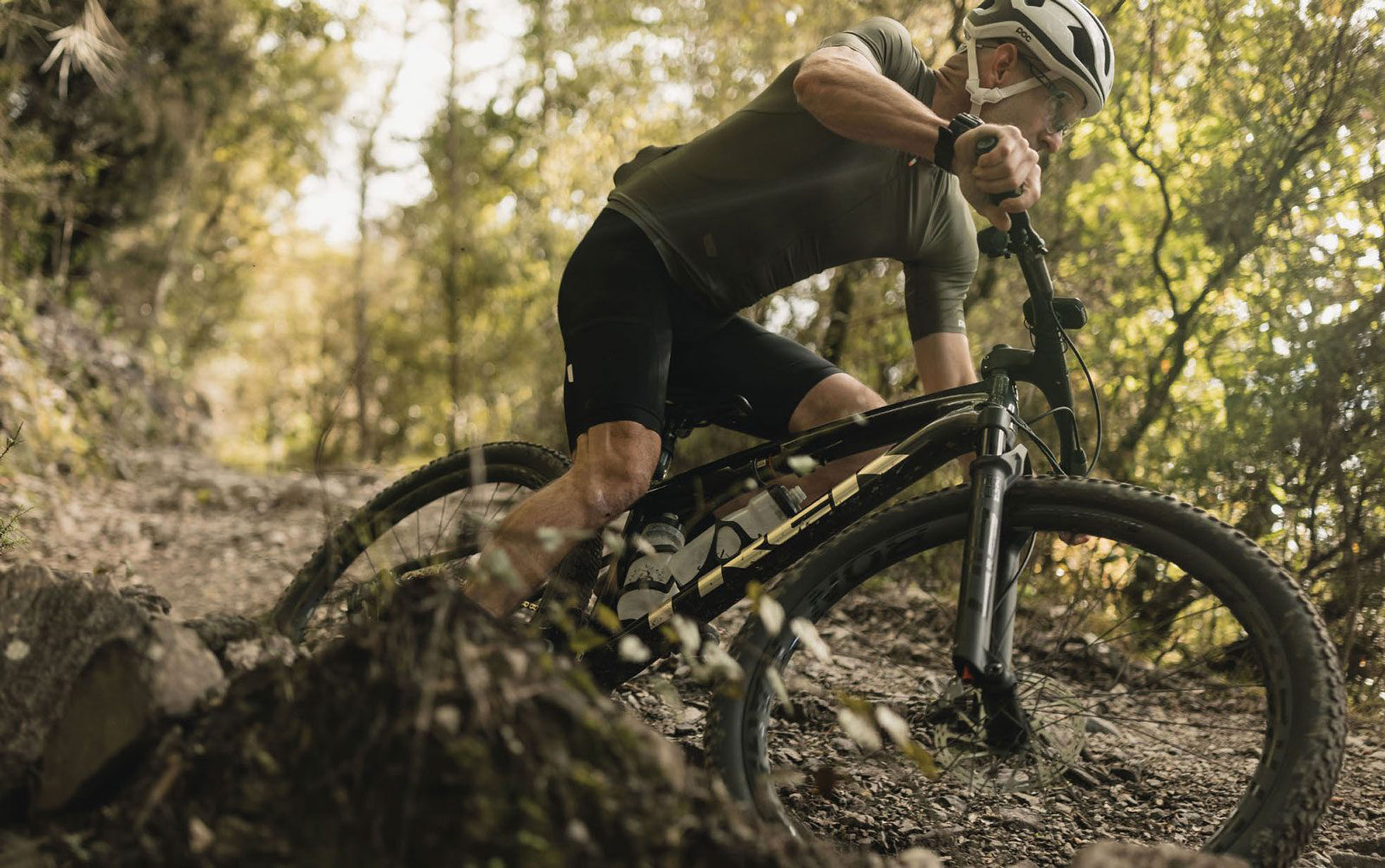
As World Cup level XCO courses have become more technical, the equipment used to compete has evolved. Where the previous generation’s 60mm of rear travel and subdued geometry was suitable back in 2019, it’s long been surpassed. Although Gen 1 is still a favourite for racers – and even some bikepackers – here in NZ, a few brands now have similar offerings and the Supercaliber has been left behind. Until now. This redesign brings the bike up to meet the needs of a modern racer while retaining the comparatively short travel and snappy handling of its predecessor.
The Supercaliber frame is now available internationally in two tiers. The premium SLR version features a low Fibre Areal Weight (FAW) achieved by using a higher-modulus carbon lay-up and less overall material. Intended for wireless gearing, the SLR sheds further weight by not incorporating internal cable guide tubes. All Supercaliber models feature the same IsoStrut swingarm and shock.
While visually the lines remain almost unchanged, the geometry has stepped forward into the modern age with the bike getting the now common longer and slacker treatment. Not one to push the boat out too far, Trek have slackened the head tube angle to 67.5 degrees from 69 on the Gen 1, and stretched the reach from 450mm to 465mm on a large size, with scaled increases across the size range. The seat tube angle gets bumped a minor half-a-degree steeper to further centre the rider’s weight, for climbing prowess.
The swingarm is suspended by a frame-integrated RockShox SIDLuxe shock. New to the bike this year, it’s a bit simpler than the previous Fox edition and is now more easily tuneable. The shock is designed specifically for the Supercaliber but shares the same traits – even some hardware – as other Rockshox suspension products. The swingarm itself has no pivot at the rear axle, relying on the tuned flex of the seat and chain stays for its vertical compliance. The shock has 15-35% sag markers anodised on its stanchion, making fine-tuning for specific courses or conditions a simple, one-person affair. That lack of pivots on the rear triangle helps to bolster lateral stiffness and ensures every watt makes it to the wheel.
The back end of a bike is only ever as good as the front; the rear wheel follows the front after all. Up front, we find the new Rockshox SID fork with 110mm of travel – 10mm more than the previous – although the bike is designed to take up to 120mm. With a DebonAir spring and new Rush RL damper, I’ve found this fork more supple and active than my own bike’s previous edition SID Ultimate. I’ve got no qualms saying the new SID is as good as it gets for an XC fork. Stiff enough in all scenarios thanks to its 35mm stanchions, it tracks the ground exceptionally, helping the front wheel track and maintain traction, as well as easing the pain on the hands and arms of the rider.
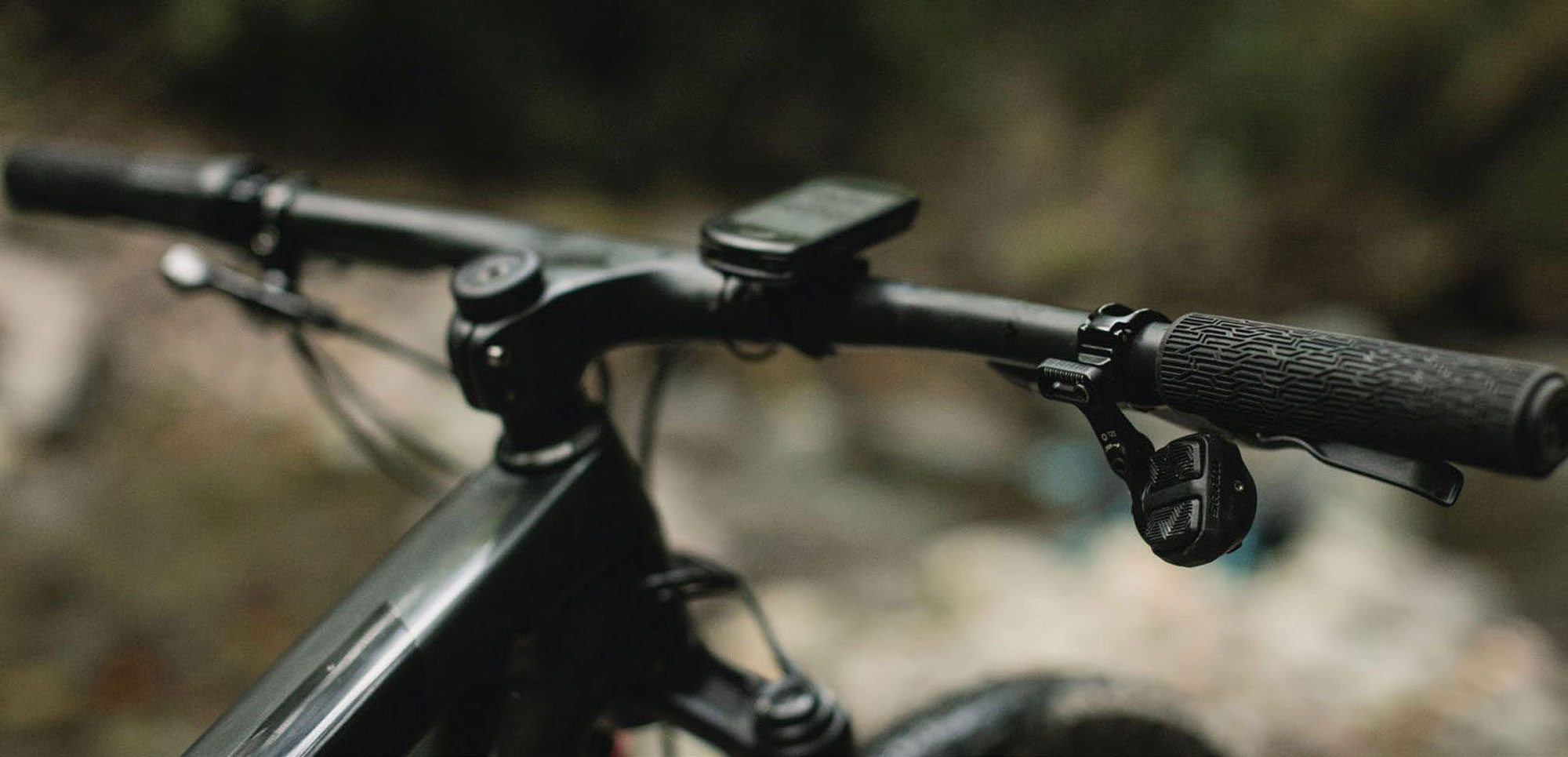
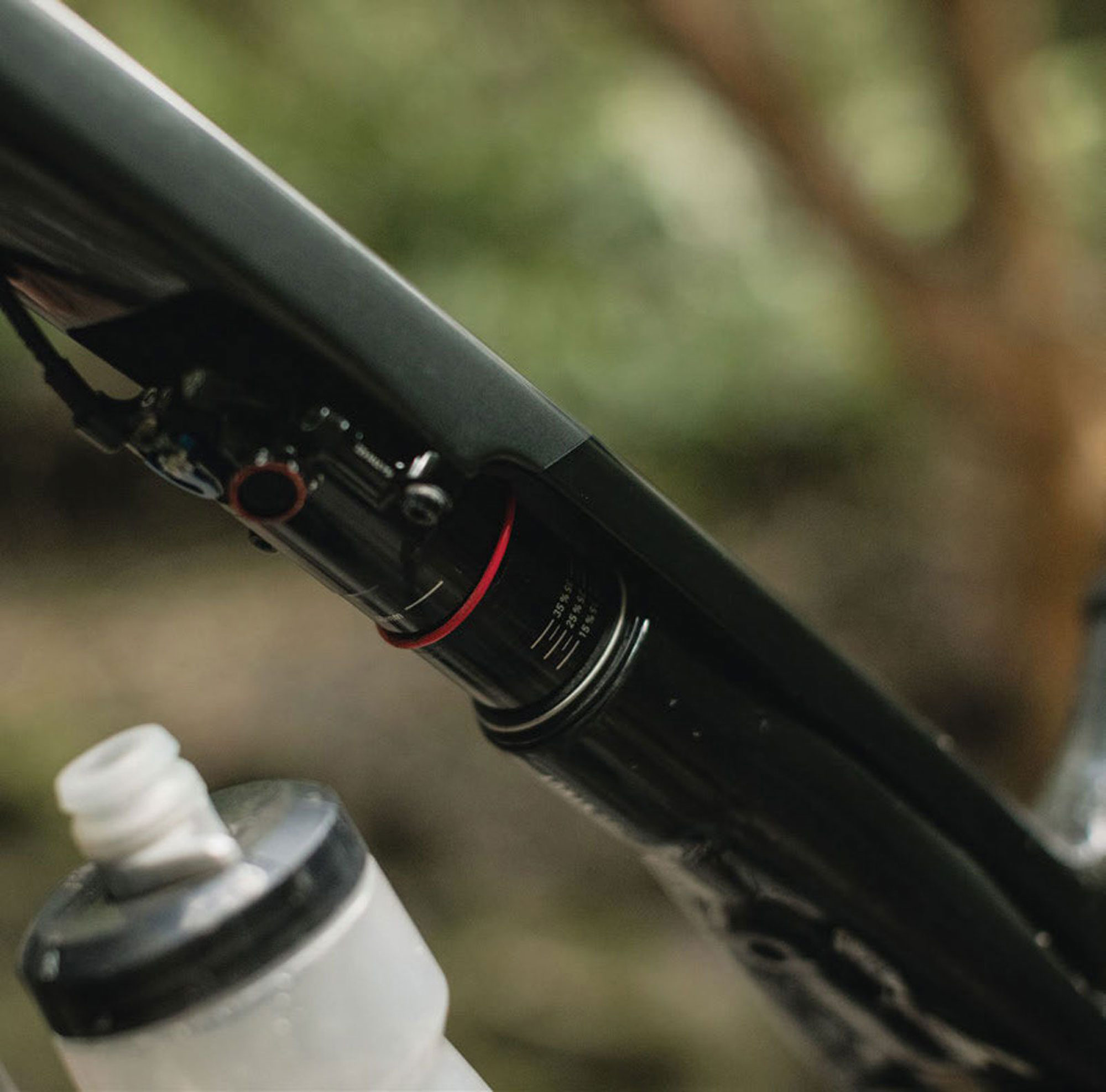
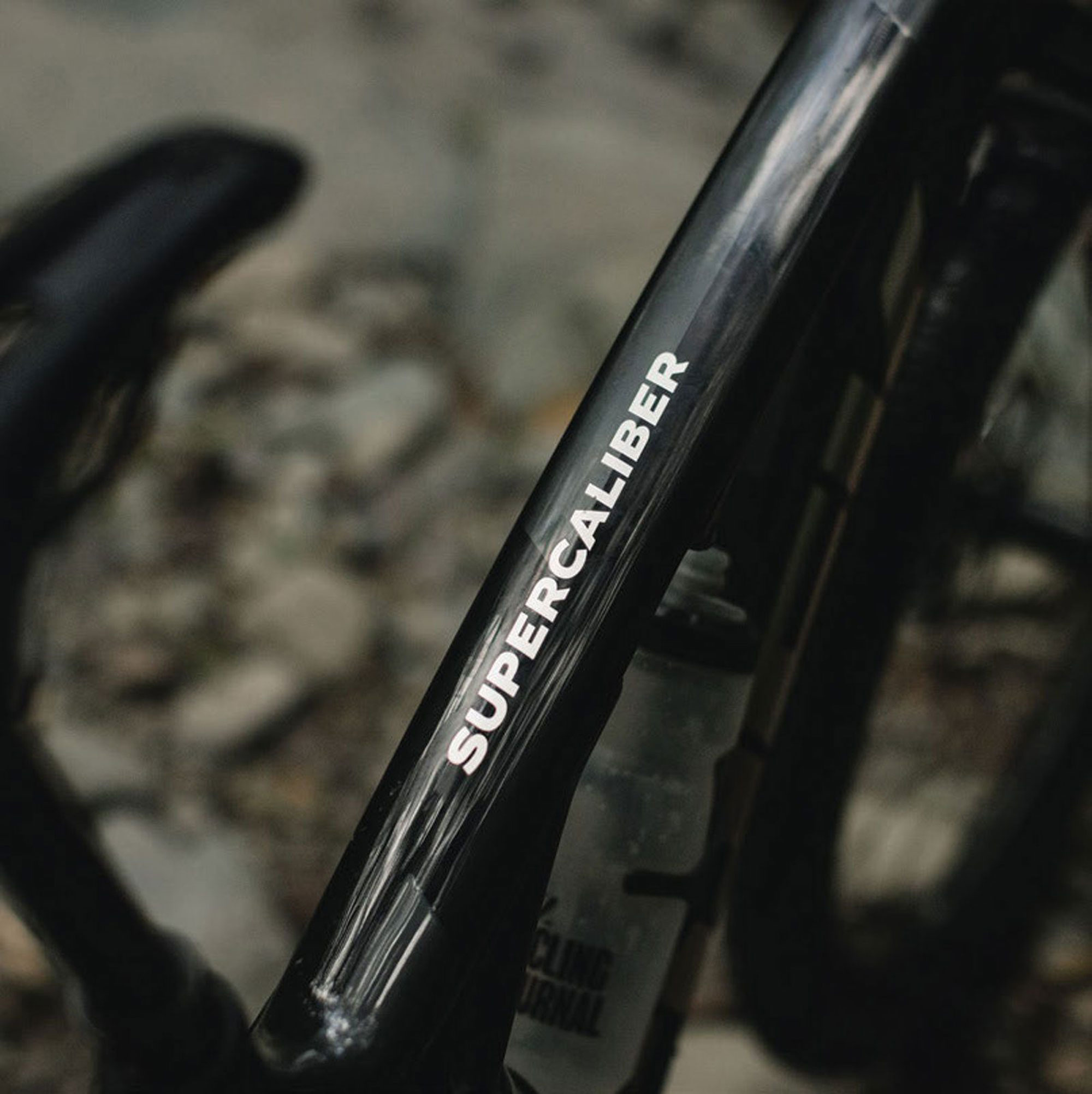
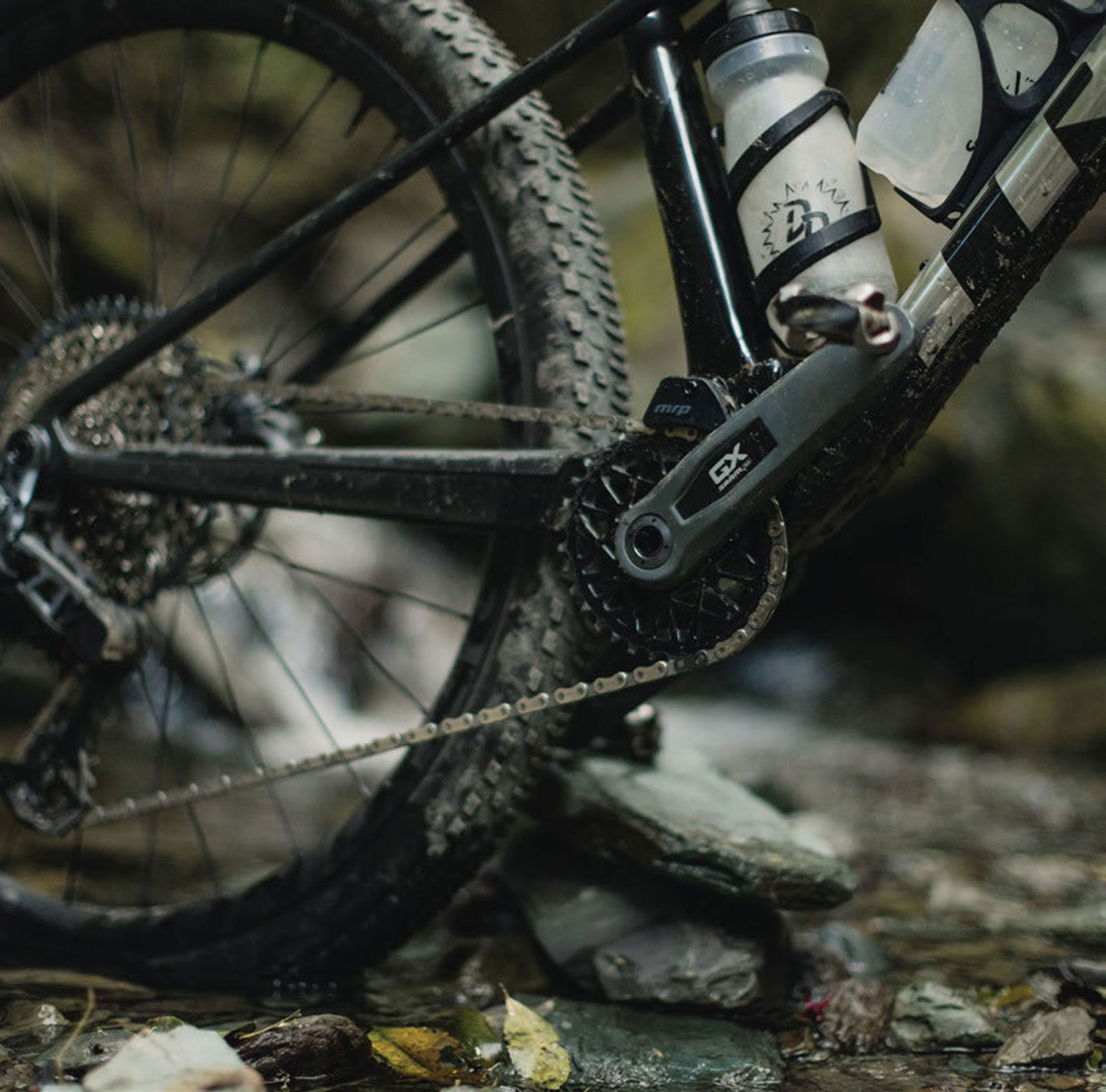
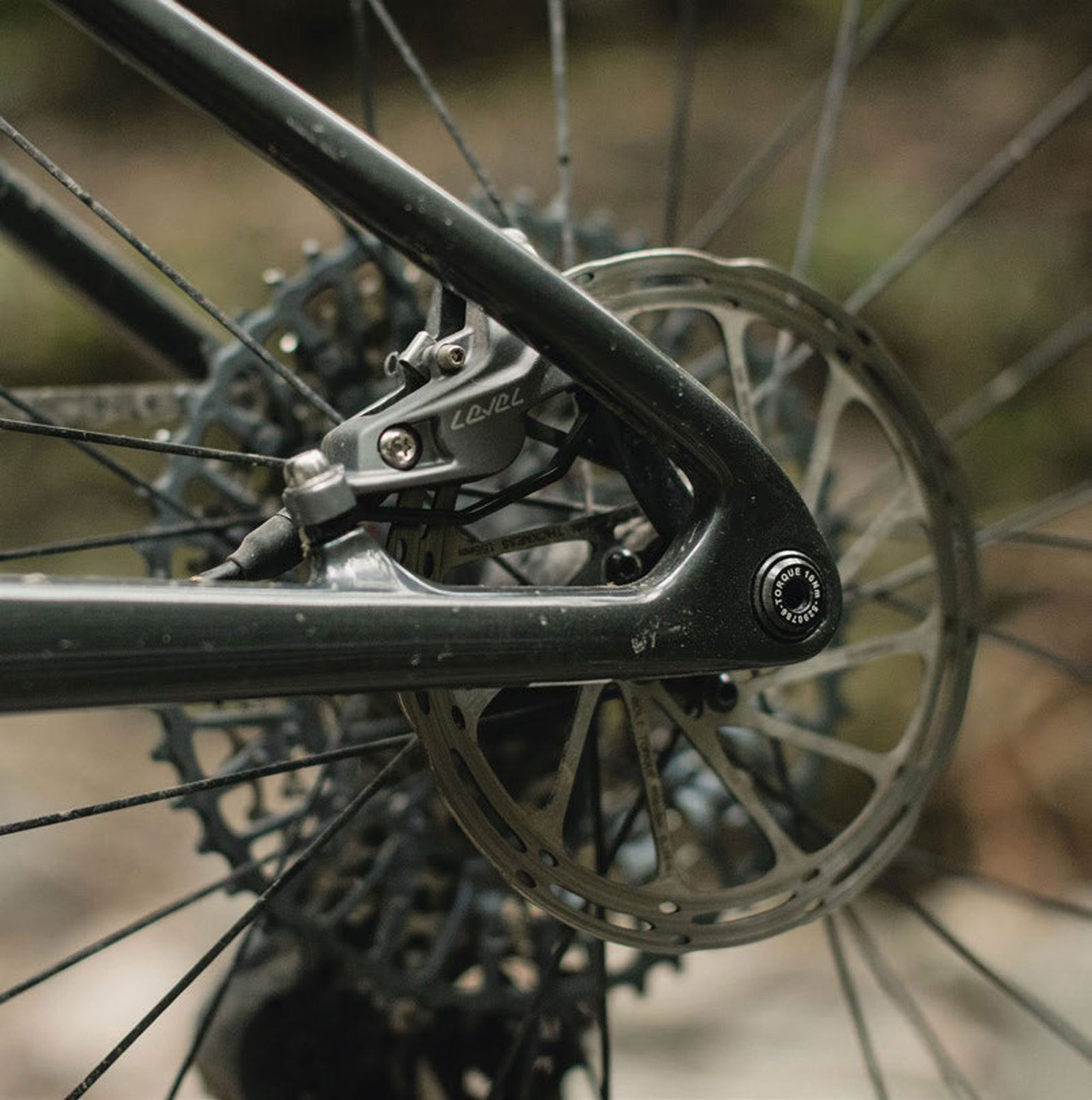
Both the SIDluxe shock and the SID fork have lockout cables running back to the new TwistLoc Ultimate remote lockout. This new TwistLoc blows the doors off the vulnerable, previous editions. A twist towards the rider to lock, and away from the rider to unlock with a positive click, audible and tactile -perfect. My only comment on this new remote is that the cables exit at 90 degrees from the unit, upsetting the clean lines of the Stealth brakes and cableless AXS shifter – somewhat unsightly compared to the clean brakes, but at least it works well and is trouble-free, so far.
A trait of the IsoStrut suspension layout – and hiding the shock away inside the frame – is that there’s plenty of room in the front triangle for water bottles. I was stoked to see a 900ml bottle fit comfortably on the downtube of the large-size bike, even with a regular cage. A 600ml fits comfortably on the seat tube, although I did need a side loading cage to make it work smoothly. Sure, it would be good to fit a 750ml bottle on the seat tube but at least you’re better off than many bikes with only a single bottle.
Our test bike was a size Large. At 176cm tall, Trek’s size chart would suggest I’m in the middle of the bell curve for their M/L size, at the top end of M and right at the bottom of the recommended height for a Large, so there is some cross-over available depending on a rider’s particular attributes; i.e. leg, arm, and torso proportions.
Surprisingly, the Large size didn’t feel too big and unwieldy for me, although I imagine the M/L’s 15mm shorter reach and consequently shorter wheelbase might have increased how nimble the already snappy bike felt. A minor tweak I made was to swap out the supplied 175mm crank for a 170mm length. This is a somewhat personal preference, but it does seem a lot of top-end riders are going for a shorter crank these days too. It’s great to see Trek speccing a 170mm crank on the Small and Medium sizes, although I do wonder if the M/L should also be fitted with these. It’s nice to see a 34-tooth chainring specced, and there’s room to fit an Anton Cooper-esque 38-tooth if your legs are up to the task!
With the sizing out of the way, it was time to get set up and ride! Consulting the Trek website, their Suspension Calculator gave me some baseline suspension pressures to tune from. The bike was pretty spot on with the suggested settings, but I preferred a couple of clicks slower on the fork rebound, and a click slower on the rear. At the suggested pressure, the IsoStrut-supported rear end sat precisely at 25% sag.
During its maiden voyage, I found the back end a bit harsh over successive hits compared to my regular, more down-country style bike with 120mm rear travel. This was no surprise as it’s a completely different style of bike, so I upped the sag to 30% for my next rides and found this to be nicer for descending but not quite as efficient while climbing, although the lockout did the trick here. My thinking is that around 30% sag is ideal for a long day on demanding, rugged trails, a ride where optimal climbing isn’t the goal, or a shorter XCO track with substantial rough technical downhill sections. For a smoother course, or a marathon-type effort with limited rugged sections, 25% or firmer would keep things efficient and lively, offering enough kush to keep things controlled on the descents, but lightning quick on the pedally bits.
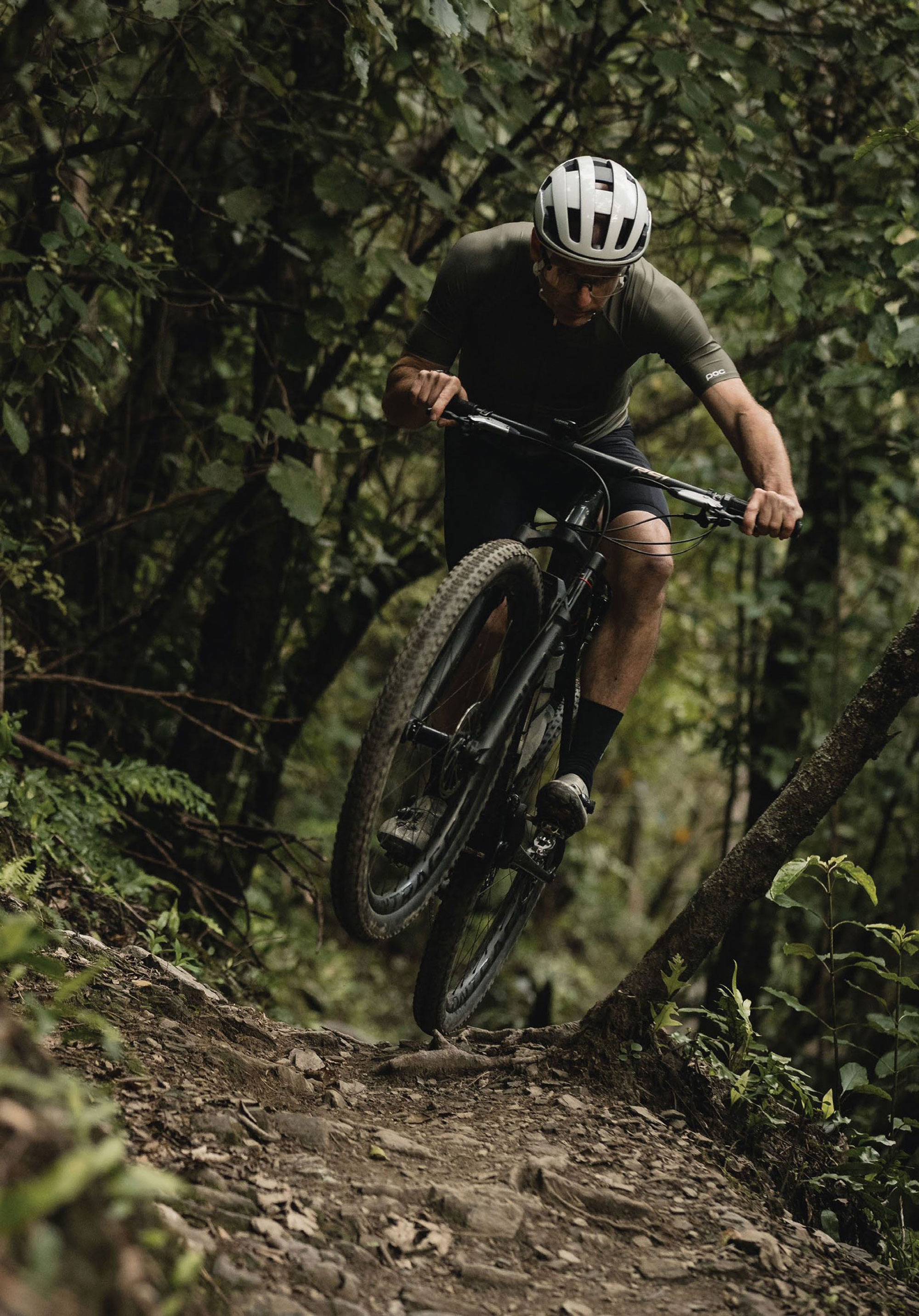
Pedalling efficiency is upped on the Gen 2, by a tweak in the main pivot position, moving it upward a touch and forward slightly. This seemingly small change has raised the anti-squat number considerably, meaning the suspension is less active while pedalling, absorbing fewer of your precious watts. The bike does really get up and go when you lay the power on!
The RSL one-piece cockpit is as polarising as a tyre choice. I’ve had people come up to me and slate the Bontrager one-piece bar/stem setup, and others approach me to tell me how much they like it. As far as the shape goes, I’ve found it fine and although different to what I’m used to, I adapted quickly. The Large bike gets a 750mm width bar moulded to a -13 degree 80mm long stem. The set-up is stiff, that’s no secret, but my gut feeling is bringing a more compliant bar to this cockpit party might change the bike’s handling a bit. The stiffness of the bars is in keeping with the overall stiffness of the frame and wheels, etc. So, while they might not be for everyone, I think given a few rides, correct suspension and tyre pressures, this cockpit helps bring the best out in the bike. I do wonder if the fact you can’t adjust the sweep of the bar by rolling it forward or back, relative to the angle of your arms, may mean that your arms sit at a different angle to the bars than optimal (due to overall setup). If you want to try a different length stem then you’re in for a new stem and handlebar too, but at least they’re simple to change with no crazy stem or headset cable routing here.
Trek’s mountain bikes are renowned for having short head tubes, and the Supercaliber is no different; 10cm on this Large, while XL gets a 12.5cm, and all other sizes a 9cm head tube. This allows riders to fine-tune their stem and handlebar height across a wide range. Go from pro-level slammed, to bike-packer high-rise handlebars with a simple swap of spacers. After my shakedown ride, I switched a spacer and dropped the stem 10mm from stock, putting a little more weight over the front end and seating me in a more comfortable pedalling position, without being too aggressive. I’ll likely drop another 10mm spacer out and lower the front end further as there’s plenty of room for adjustment and experimentation.
Being an out-and-out race bike it would be a waste to just take it out for some rides on familiar trails in an attempt to get an accurate gauge of how it rides. A rig designed to win World Cups is best tested in the exact scenarios where it’s designed to excel and be pushed towards its limits, something that’s not easily replicated outside of an actual race. With this in mind, I entered the inaugural Whangamatā Black Rock XC race. With 60km and 1800m of climbing, the 3-lap course was no joke. Granted, the bike is designed for shorter, punchier XCO-style races, but the reality is that, here in NZ, longer marathon-style events will likely make up a large portion of the race action a bike like this will see. It’s also likely to be popular with the bikepacking crowd, just as the Gen 1 was.
I had a good number of hours aboard the bike before the event, and was feeling pretty comfortable aboard this rocket ship, but actually putting it right in its element really gave me a true appreciation for just how good a bike of this level really is. Out of the start, we were tussling for the first single track, in and out of the saddle, avoiding a near pile up on the first corner. We were strung out entering the first single track climb. The SRAM GX Transmission is ideal in situations like this; whatever unfolds in front of you, you can rest assured that if a gear shift needs to happen, it will. I had no qualms firing through gears under full power, seated or standing.
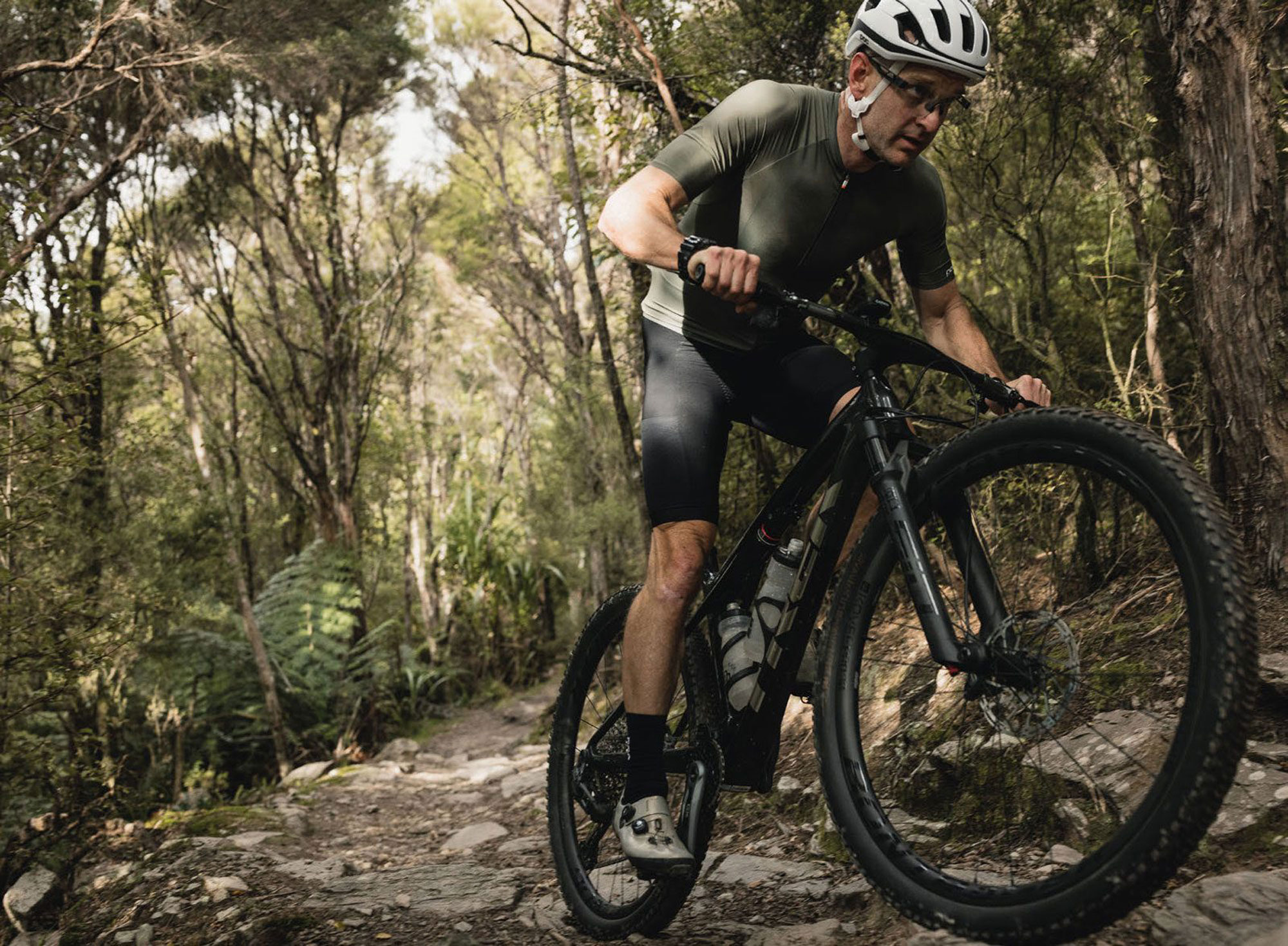
Most of the trails in Whangamata are clay-based and certainly pretty spicy in the wet! After some rain the day before, I was stoked to see blue skies for race day and, although the majority of the trails were either dry or close to it, enough moisture remained in the dirt, in sections, to make things unpredictable at times. At first glance, I wasn’t sold on Bontrager’s new Sainte-Anne RSL XR tyres. The central knobs are very closely spaced for rolling speed, but the shoulder and side knobs are widely spaced and low profile. I wasn’t expecting much from them, particularly in the damp. Surprisingly, though, they hooked up adequately thanks to the combination of said tread pattern, a 220 tpi casing, dual rubber compounds, and the ability to run low pressures thanks to their large 2.4” volume. Traction was surprisingly good and, even in the few truly slippery sections, the grip was predictable. There wasn’t really any section of trail I felt the tyres were majorly lacking, but they certainly excelled on dry hardpack and gravelled sections, maintaining speed really well. For a properly wet race, I’d be opting for something with deeper tread for sure. The tyre volume, coupled with the Kovee Elite wheels’ 29mm internal width, offered sure footing even under the heavy G-forces when railing some of Whangamata’s seriously good berms at full pelt -no tyre roll or sketchy moments.
There’s certainly something special about the feeling you get from racing a bike like this. When you really put the boot in and power up a short, sharp, technical climb, it just feels like every watt you’re putting into the pedals is propelling the bike forward; no flex, no suspension bob, just pure unadulterated forward momentum. One particular section at the Black Rock was a prime example of this; a climb through a section of forestry slash and up a sharp pinch back into the pines. Turning right into the slash, a majority of your speed was scrubbed off and you were presented with 100m or so of partially covered logs and scrap, creating steps and obstacles to navigate your way across, up and over. Rapidly laying down the power, the bike shoots forward, the transition hopping up a step to full-gas pedalling nearly instantly thanks to the Freehub’s 108 points of engagement. I’m a huge fan of the Bontrager hubs; simple and effective. The overall light weight helped me hop over obstacles and up over the final pinch – again, out of the saddle, under full power and on a loose clay surface. The bike was well and truly designed to dominate techy sections like this, and the momentum I could carry quickly extended the gap to the riders behind.
Climbing gravel roads, or smoother consistent- grade trails, is undoubtedly a strength of the Supercaliber. Its low weight, suspension kinematic and prime seating position combine to create deadly efficiency that helps you stay on top of your gear for longer. Coming off my longer-legged, heavier bike the difference was considerable and over the length of the Black Rock XC, climbing was where I made most of my gains in the field – most unlike me. With that said, it never gets easier… you just go faster! As efficient as this bike pedals, I found locking the suspension out on smooth sections helped get the most out of every pedal stroke, particularly when running the 30% sag, and there’s enough give whilst locked out to not beat you up too much.
Descending from the top of the main climb, we had the choice of two lines: to the left the A-line, a fall-line style section with no clear main line and a snake pit of roots crisscrossing the entire descent – and it was plenty steep. To the right side of the A-line is the B-line – a clean, digger-built, flow-style trail; it’s longer but faster and, overall, the time difference between the two lines is negligible. On the first lap, I took the left line. Having not pre-ridden any of the course, I wasn’t sure what to expect. This A-line was where I started to figure out what this bike is about on the downhills, and it highlighted that descending isn’t just about suspension travel. When it’s pushed, its minimal-yet-effective 80mm of travel has enough forgiveness to confidently hold a line. Aided by how stout the entire package is, and its modern geometry, the bike holds a line well and is balanced and stable while descending. No wet-noodle, flexy XC frame here. In these exact scenarios, I’ve ridden longer-travel bikes which handle much worse and suck your confidence by flexing and twisting under the heavy braking and the hits they’re taking. Situations like this are where the stiffness of the one-piece cockpit shines; a distinct lack of flex helps you keep things pinpoint and accurate. On this descent, I was thankful for the dropper post. It’s 150mm travel allowed me to get the saddle right out of the way on the steeps – props to those pro guys who still run fixed posts on gnarly trails! My only gripe on the Bontrager dropper post, is that the remote doesn’t integrate well at all with the SRAM brakes. It functions fine, but the clamp does interfere with the Stealth Brakes master cylinder, limiting how much adjustment you have with the remote. I couldn’t quite get it where I wanted it, but made it work.
For the laps following the first one, I opted for the B-line: a smoother, safer option while fatigued. This line was the highest speed section of single track in the race and gave a great indication of how the bike was at speed. The entire package felt solid through the upper highspeed berms and predictable off the jumps that followed. Further down the descent, however, some choppy gave a real-world example of the shortcomings of short travel. Under heavy braking, and through a section of braking bumps, the rear suspension felt somewhat harsh, causing the tyres to break traction and skip across the tops of the bumps. It wasn’t a big issue as this was basically a straight section of trail but, if it was much wetter, the lack of traction could have been a real issue coming towards the corner at the bottom of the section! This situation does highlight how the bike is bred more to take the place of a hardtail than be a supple descending machine – the suspension travel certainly has a damped feeling, as it needs to be with only 80 millimetres of it.
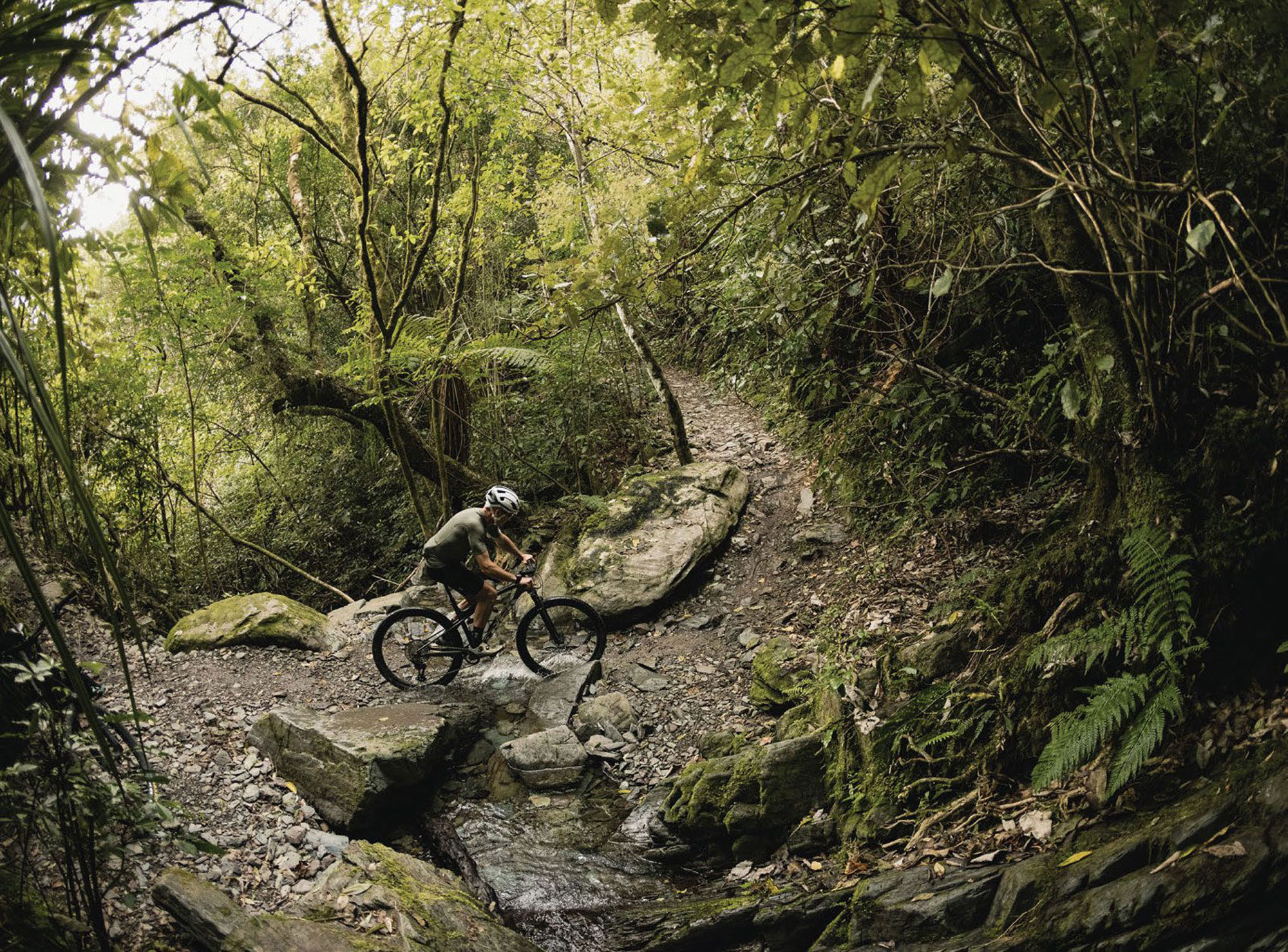

On the subject of braking; I was glad to have some time aboard SRAM’s new Level Bronze brakes, particularly their new Stealth levers. I’ve never been a huge fan of SRAM’s XC-oriented brakes, the lever feel was hard to get right and once you finally achieved a good, powerful feel, it only lasted a few rides then you needed to tune them again. Touch wood, but so far I’m impressed with these new units. The lever shape is familiar, but the feel when braking is more positive than previous and overall there’s plenty of power on offer when needed, if they’ve sorted the longevity issues these are a winner.
A small, partial floating brake mount is used on the rear, feeding the braking force to the chainstay and rear axle, keeping the braking forces from interfering with the flex in the swingarm. This brake mount seems to work effectively, but there is more torsional flex under braking than there would be from a traditionally mounted calliper. This doesn’t appear to affect the braking power, although at times it does affect how the brake feels. The front brake has a 180mm rotor stock, which is welcome, as many XC bikes are fitted with 160mm rotor up front. The rear rotor is 155mm stock, the max size allowable being 160mm. I’d personally like the ability to upsize rotors on the rear; giving heavier, real-world riders more stopping power, and helping slow down fully laden bikes when loaded for bike-packing, although it looks like there’s simply no clearance to do so.
The Supercaliber gave me an appreciation for how good bikes are getting these days and highlighted how it’s no one thing that makes a bike like this excel, but the sum of everything; frame, components, and geometry. The engineering team at Trek appear to have designed the bike as a whole system, with all parts complementing each other rather than designing a frame and haphazardly speccing it out. Had any of the elements been lacking I think the experience could be different.
The Whangamata Black Rock race was an awesome experience and, with its varied terrain, was a great way to put the Supercaliber under real-world review alongside training on it in the buildup. Although the Supercaliber has been designed more for the punchier 1.5 hour efforts of World Cup competition, it was well suited to the endurance-type effort of the Black Rock. If you’re looking for a race bike for any breed of XC race here in NZ, the Supercaliber would sure do the trick – don’t be put off by the small travel number as the geometry and handling well exceed bikes of longer travel.
If it were mine: I’d ride the M/L size, throw a set of 170mm cranks on there, have a set of gruntier tyres for wet racing, and try a standard stem and handlebar to see what difference there is. I’d fit a dropper remote compatible with SRAM’s brake lever clamp and a handlebar-mounted rear vision mirror so I could watch my competition as they disappear behind me!
Unfortunately, this bike removes any excuse for poor performance but, at least nothing is holding you back from that podium… aside from your own fitness and skill.
That’s a big tick from me on the Supercaliber. It’s not perfect – but it’s pretty damn close. The team at Trek might have a hard time prying it from my greasy mitts!

Legend of the Mammoth est. 2013
Words Lester Perry
Images Cameron Mackenzie
In recent years, Nelson has boasted the highest number of sunshine hours in a calendar year. It duked it out for the title with the Taranaki region in 2022, but lost out to not only them but to the Bay of Plenty, too. If second place is the first loser, what’s third place?
Sure, it’s still a podium finish but not necessarily something to write headlines about. Nelson’s ‘sunshine-hours’ crown is gone for now, but residents can rest easy that they have plenty of other accolades to sing about. It’s not just the big yellow orb in the sky bringing visitors to the area and, while the overall vibe and culture could be compared to that of Taranaki, there’s one major feather in Nelson’s cap that the ‘Naki can’t come close to: mountain bike trails. We’re not talking about the “mountain biking” your uncle and aunty do on the weekends aboard their folding e-bikes (although they have that too), it’s Nelson’s intermediate and advanced trails that bring those in the know to the hills behind the sunny town.
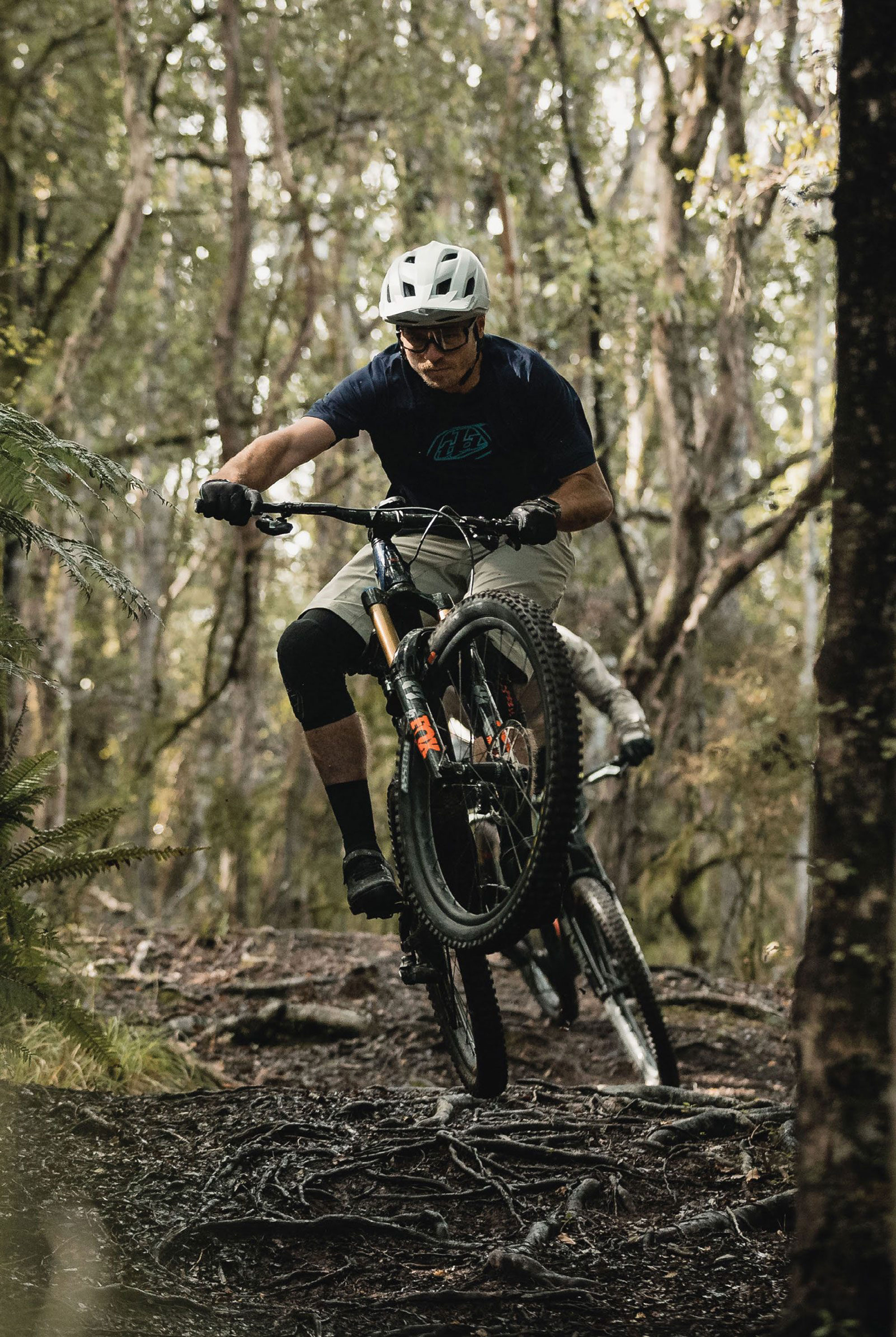

TOTAL DISTANCE: 58KM 2017
“THE MAMMOTH EVENT HAS BEEN A FIXTURE IN ONE FORM OR ANOTHER ON THE NMTBC CALENDAR SINCE THE EARLY 1990’S WHEN THE EVENT WAS A LARGE 40 - 50KM CROSS-COUNTRY LOOP; THE COURSE KEPT SECRET UNTIL REGISTRATION ON THE RACE MORNING.”
Arriving in Nelson, the relief of seeing our bikes being unloaded from the tin bird was short-lived, and shattered by the wide-eyed, confused look on our shuttle driver’s face, giving us a glimpse into what was about to unfold. Unfortunately, after some miscommunication and a major mix-up we were sent a small taxi to transport our three bikes (there were two of us) and an additional seven large bags (don’t ask) to our accommodation in town. With no taxi vans available in the area, we were left with two options -either load all the gear into multiple small taxis or rent an over-the-top expensive van for the short trip to town. Ordinarily, we wouldn’t need a vehicle in Nelson as, if you’re staying in town, the trails are just a pedal away and within a 15 minute walk you can get to anywhere worth going. So, renting was off the cards. Fortunately for us, a keen airport employee saw our plight and let us in on a hot tip: a public bus would roll in at any minute, it would likely be empty, and for the gargantuan fare of just $3 each we could be dropped to a stop just beside our destination. Sure enough, right on cue, the city bus service came to our rescue in one of their fancy new electric buses and left us with enough money in the coffers to sample some of Nelson’s finest hops later in the day. With a date for the Mammoth Enduro penned in the calendar for 23 -24 March 2024, and a few days free in early spring, it was the perfect excuse to head south on a quick trip to experience some of Nelson’s finest. We weren’t strictly hunting for time on the trails, but for a bit of chilled downtime while not on the bikes too. Chasing some local knowledge, we hooked up to ride with Nelson local and winner of the 2016 Mammoth, Kieran Bennett, and local fast-lady and Santa Cruz NZ representative, Amanda Pearce, as well as total frother, Tayla Carson, Nelson MTB Club’s (NMTBC) event portfolio head.
The Mammoth event has been a fixture in one form or another on the NMTBC calendar since the early 1990’s when the event was a large 40 -50km cross-country loop; the course kept secret until registration on the race morning. Club stalwarts, Bryce Buckland, Mike Gane, Andrew Scott and co. headed the event. Unfortunately, thanks to the rapid evolution of the event space, and the sheer number of events on offer by 2010, numbers had dwindled, and an injection of new energy was needed to keep the event alive. Chris Mildon ran it in 2011 as a big loop XC event with a smaller loop option in Sharlands, the last time it ran in that format. Andrew Scott tried a Rogaine format in 2012 but that didn’t really get any traction with entry numbers either.
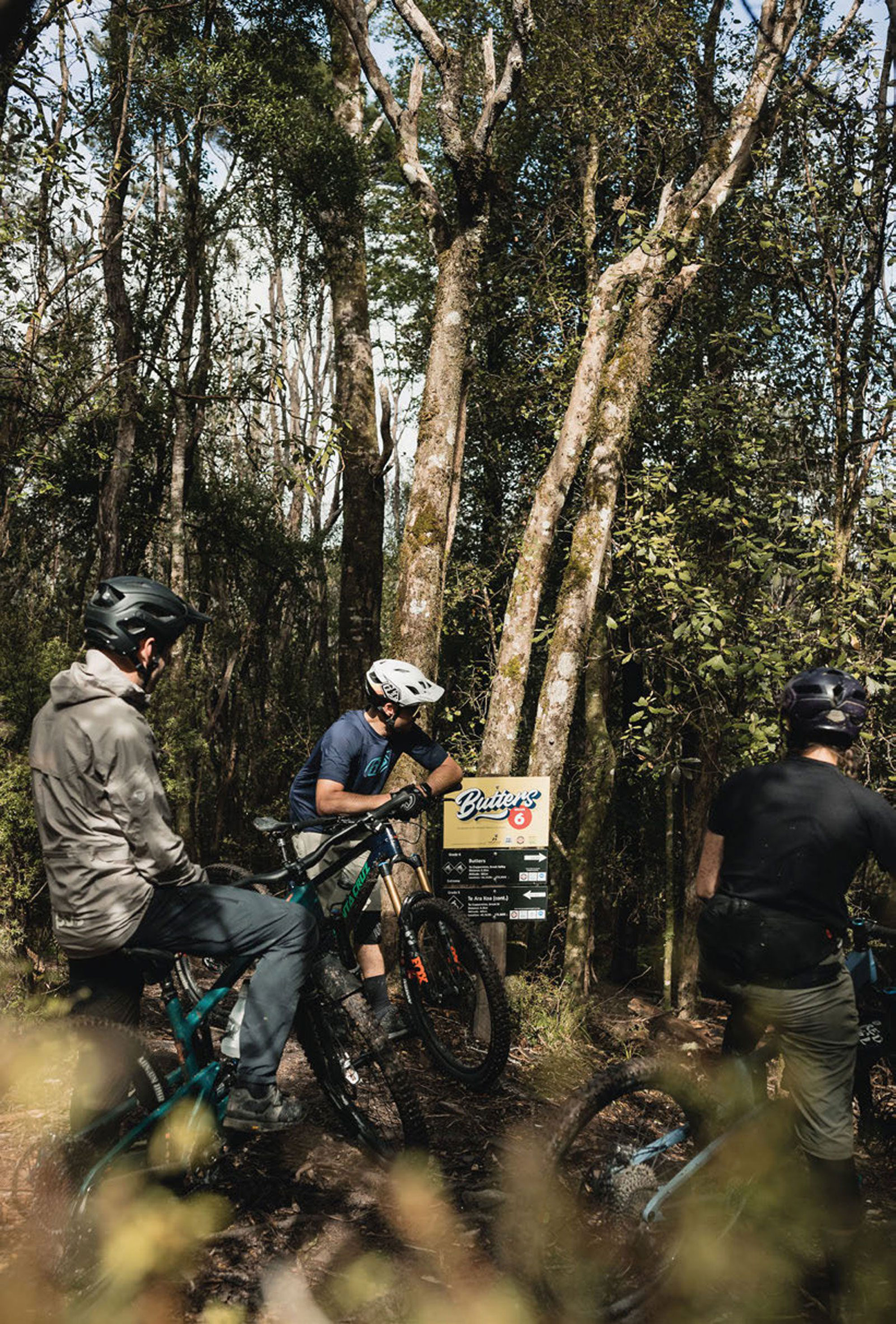

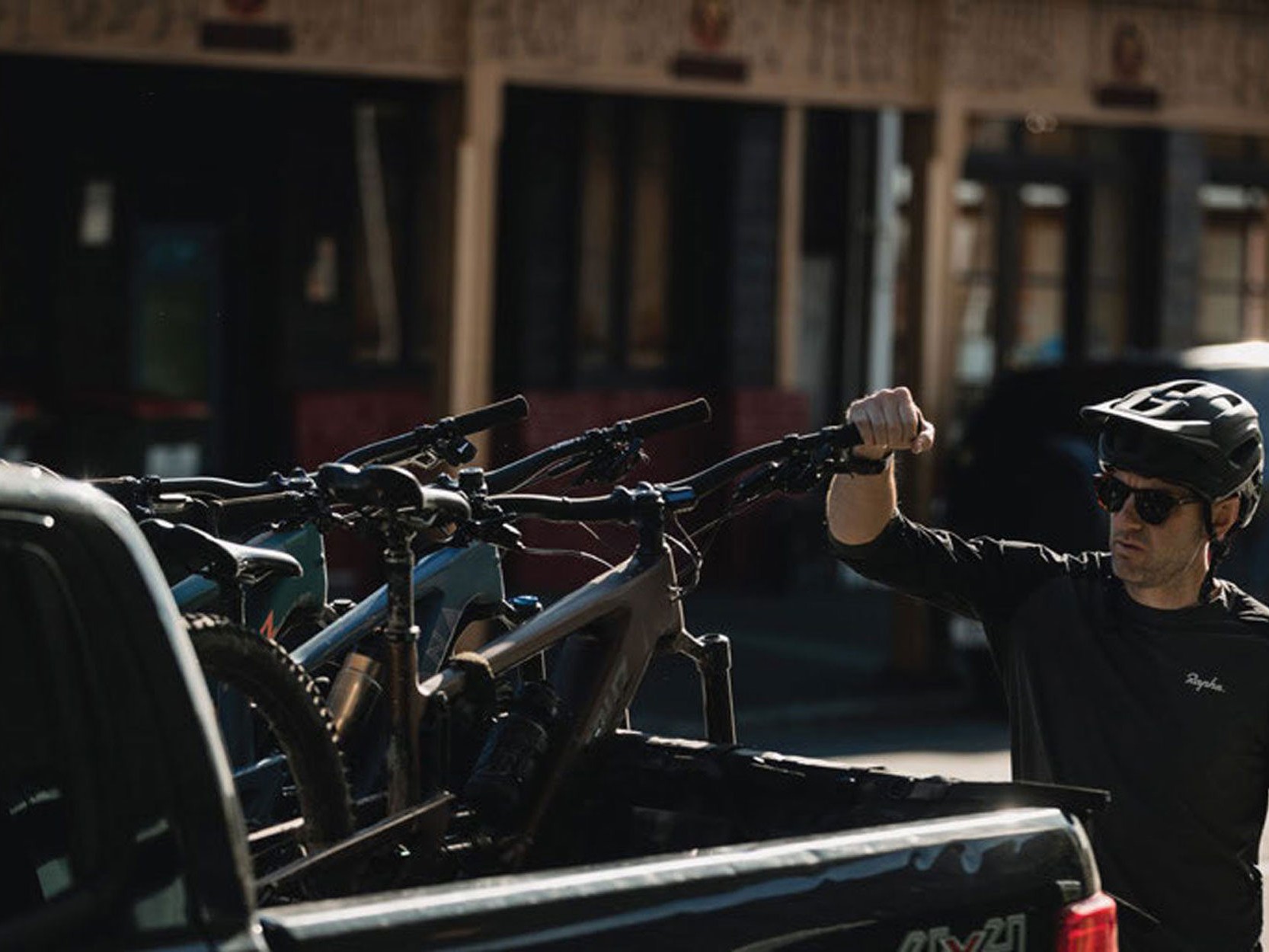
Come 2013, riding in the area was becoming increasingly Enduro-focused and, with an eye on what was happening in the discipline globally, the Nelson MTB Club grafted the Mammoth name onto a fresh -and epic -Enduro event. The Mammoth Enduro was born. With four hard stages – Codgers, Waahi, Takaaro, and Sharlands -no shuttles, and big liaisons, this is proper Enduro. The event has remained in this format since, with the addition of more stages and, on occasion, some shuttle assistance. The 2013 race attracted a host of local talent and set the tone for Mammoth’s to come. The longest of the four race stages ended up being just shy of 18 minutes for the eventual winner –local legend and trail builder, Kurt Lancaster who by race end stood atop the men’s podium. Meg Bichard showed her pace by being the fastest woman and showed the class which took her to compete in some of the world’s toughest Enduros.
By 2016, Mammoth had earned its title as the most demanding Enduro race in the country, with then three-to-six-minute long stages across two days. Taking the start line were a host of the country’s top riders, many of whom had spent seasons racing internationally. Justin Leov (former EWS and DH Pro) battled local downhiller, Kieran Bennett (ex-international DH rider) for the win. Bennett eventually took the victory by just five seconds. Loui Harvey was just 30-odd seconds back in third place. The women’s field traded blows over the weekend and, eventually, 90 seconds separated the top four: Meggie Bichard, Anja McDonald, Sasha Smith and Amanda Pearce – testament that Nelson had attracted a strong and competitive field.
By 2021, the EWS was in full swing around the globe, and NZ boasted a handful of leading Enduro talent, some of whom call Nelson home. NMTBC had put in a successful bid to host an EWS round in 2021, and 2020’s Mammoth was pegged as a qualifier round and warm-up of sorts for the following year’s big event. The race attracted the who’s-who of New Zealand Enduro. Names such as Eddie Masters, Charlie Murray, Rae Morrison and Cole Lucas lined up against a host of local talent and keen riders from all over NZ. One savvy racer had stashed a six-pack under the bridge at the base of 629 during practice, providing a welcome pit stop for a few riders mid-way through the sweltering race day.
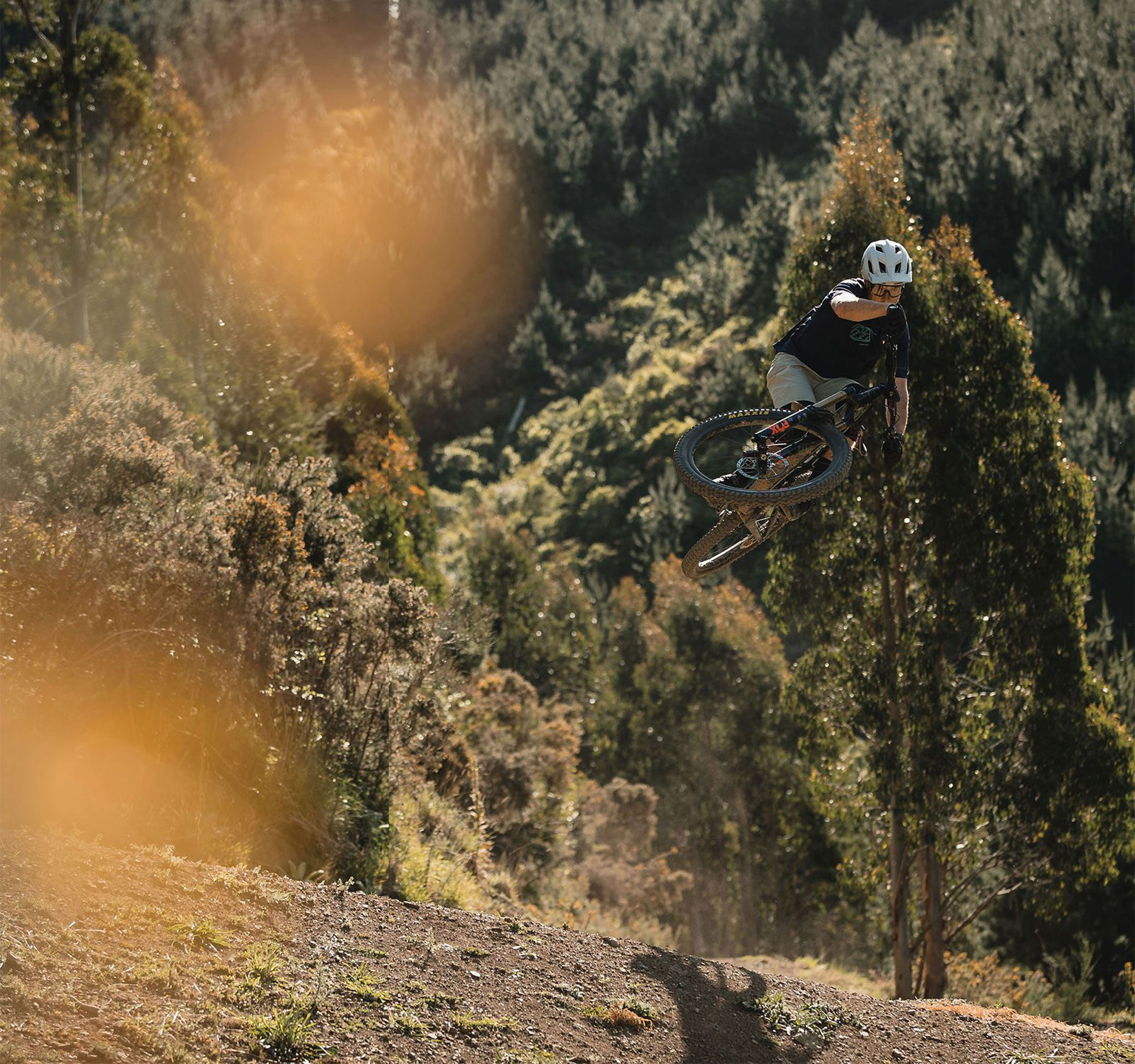
“COME 2013, RIDING IN THE AREA WAS BECOMING INCREASINGLY ENDURO-FOCUSED AND, WITH AN EYE ON WHAT WAS HAPPENING IN THE DISCIPLINE GLOBALLY, THE NELSON MTB CLUB GRAFTED THE MAMMOTH NAME ONTO A FRESH - AND EPIC - ENDURO EVENT. THE MAMMOTH ENDURO WAS BORN.”
Old mate Covid-19 ruined the party, putting an end to the club’s 2021 EWS dream, leaving months of planning scrapped. Even after a reschedule, multiple factors have meant Nelson’s EWS hopes have faded for the time being. Fortunately, NMTBC resurrected the Mammoth for 2022. Run under the Covid-19 framework, the event was restricted to just 100 riders. A scroll through the results confirms the event again attracted most of NZ’s heavy-hitting Enduro racers to its legendary course. Covid restrictions couldn’t kill rider’s enthusiasm for an epic couple of days racing. After coming through a turbulent, and somewhat disjointed, few years with their events and Covid now well and truly in the rearview, the NMTBC is working on a plan to alternate Enduro events yearly between the Mammoth and its little sibling, the Aorere Enduro. The Aorere will have fewer stages and friendlier liaisons, making it the ideal stepping stone to the Mammoth.
Reminiscing on the event’s history got us hyped to sample some of the trails previously raced, so we hopped on a shuttle with Gravity Nelson to the top of Te Ara Koa, Fringed Hill, to ride the now famous “Butters” – a trail 2.2km long that drops some 500+ vertical metres. Named in memory of Nelson MTB Club Member, Bernard “Butters” Simmonds, the trail opened in 2021 and quickly became a favourite of locals, and now sits in lore alongside legendary trails like 629, Peaking Ridge, and Whaimana. Butters was built with assistance from the Santa Cruz Bicycles ‘Pay Dirt’ fund’, which gave an injection of funds to help get the build done. Off the back of this, Hyperformance Hardware, Santa Cruz NZ’s distributor, have committed to help keep the good times rolling by assisting in funding maintenance of the trail for the coming years. Morning mist clung to the trees as we dropped into Butters, with the overnight rain making the roots slippery to begin with. A few mellow turns to adapt to the greasy conditions and we picked our way through the off-cambered corners up top, avoiding the Black Snakes (roots) which were trying to take our wheels out from under us. As the gradient tipped, the fun just increased as a few rocky drops and chutes were interspersed with amazing flowing turns and floaty jumps. Lower on the hill, we broke loose of the fog and popped out into a blue sky day; the trail was dry and we made the most of the benched-in traverses between the lower steep dropping turns. These are what give Butters its Grade 6 rating; most of the trail is realistically Grade 5, aside from a few crux points or steep sections, so keep your wits about you – speed under control and the trail is more than manageable.
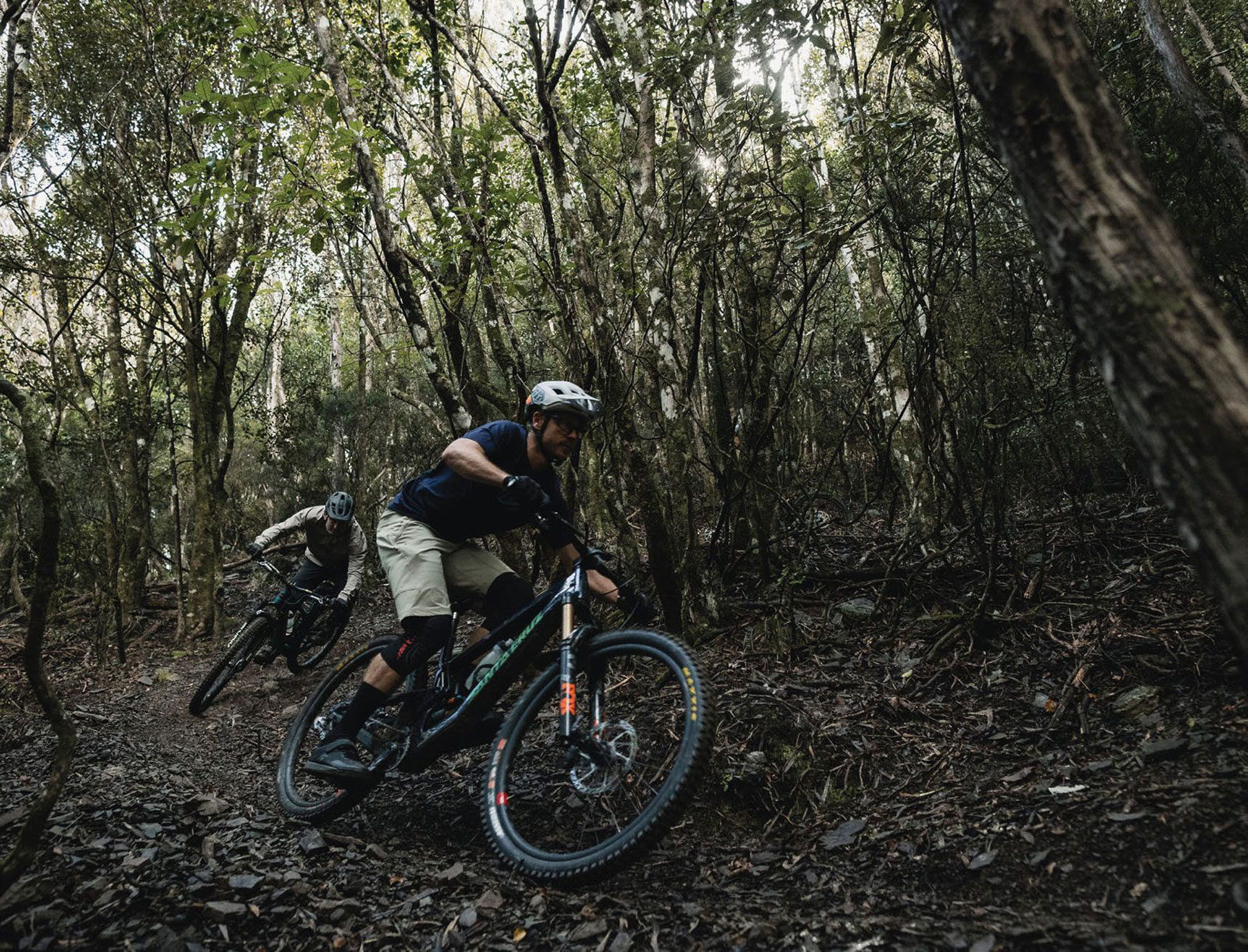
A quick pedal back to town and we headed for Tozetti, a local bakery-turned-cafe. All manner of ‘cabinet’ style treats were available, as well as an extensive menu. After re-caffeinating and a hearty lunch, we turned out sights for Te Ara Rere o Koata (Koata Rere) – “The flight path of Koata” -Nelson’s latest jump trail. Constructed by Queenstown’s jump-building experts, Elevate Trail Building, the 1.4km long trail features expertly sculpted jumps and berms of varying size and shape the entire way down. Most hits on the main line are rollable and multiple larger non-rollable side hits make this jump line perfect for anyone looking for air time. The trail likely won’t appear in a race any time soon, but it’s certainly worth cutting some laps if you’re in town for a few days.
After we realised our whips were weak and we’d exhausted our air miles, we headed for Two Thumb Brewing, hoping to spend the evening dining in the sun while sipping some fine brews. Unfortunately, it wasn’t to be, as they weren’t open on Mondays. On to Plan B. A short walk later we arrived at The Freehouse, a destination with a massive array of craft beer and simple food. If you know your Nelson Sauvin from your Citra, or your Weizenbier from your Gose, or you’re just keen to try something different, head for this converted chapel – it’s certainly one to put on your must-do list when in the area.
The next morning, after a solid feed and perfect coffee at Victus, we walked across the road to Gravity Nelson, loaded the shuttle and headed up for a lap of ‘629’. As we drove through the Maitai Valley, I checked the Trailforks app to see where we were headed and was astounded by how many trails were nearby. Within a 15-minute drive of the city centre there are a huge number of trails, many of them Grade 4, 5 and 6, yet when you’re riding them you feel like you could be deep in the backcountry somewhere. I’m positive there’s no other city in NZ with this volume of lengthy technical descents so close to town – so close in fact that from some you can roll with barely a pedal stroke from the bottom of the trail straight to the pub for après.
NUMBER OF STAGES: EIGHT 2020
“BY 2016, MAMMOTH HAD EARNED ITS TITLE AS THE MOST DEMANDING ENDURO RACE IN THE COUNTRY, WITH THEN THREE-TO-SIX-MINUTE LONG STAGES ACROSS TWO DAYS.
TAKING THE START LINE WERE A HOST OF THE COUNTRY’S TOP RIDERS, MANY OF WHOM HAD SPENT SEASONS RACING INTERNATIONALLY.”
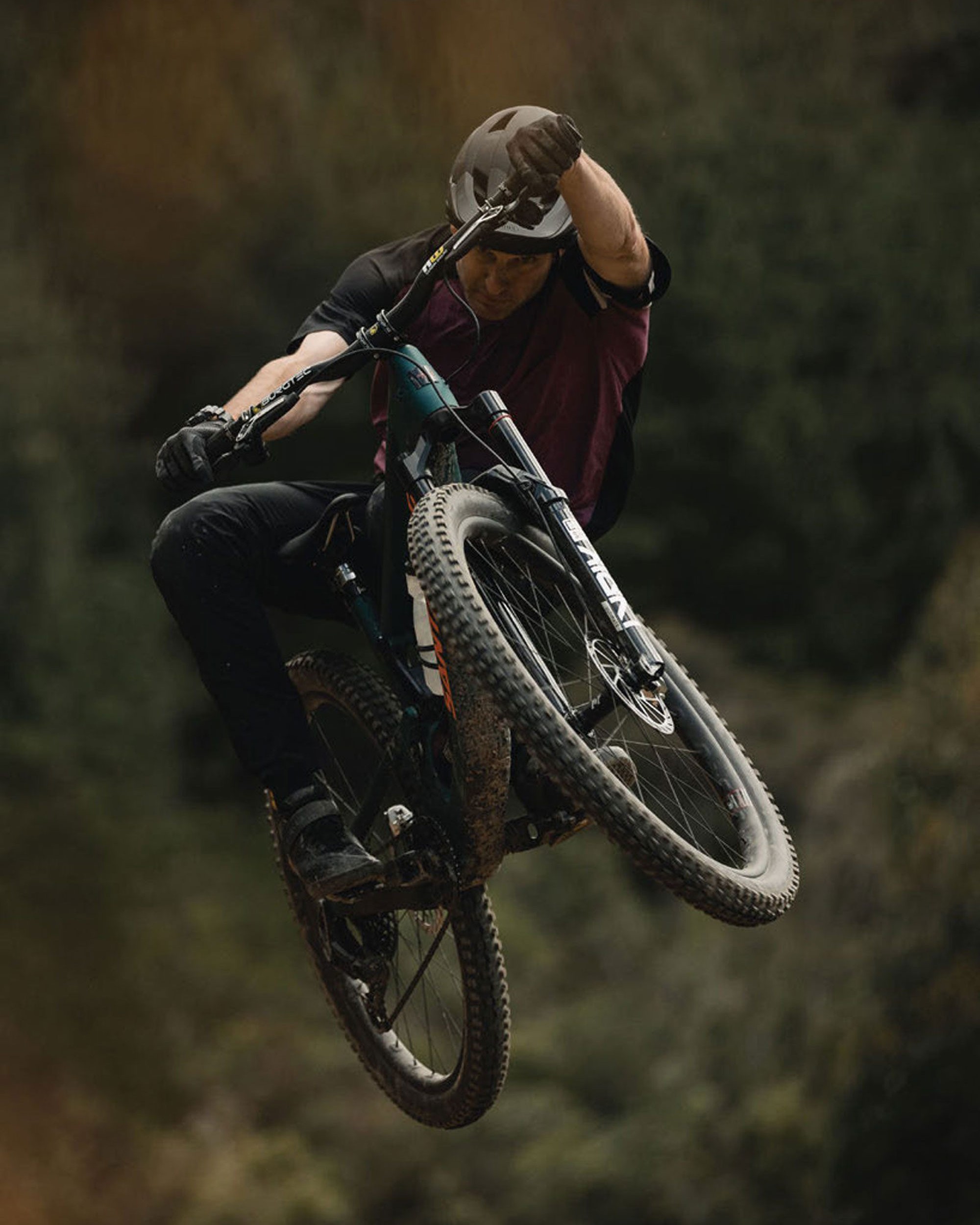
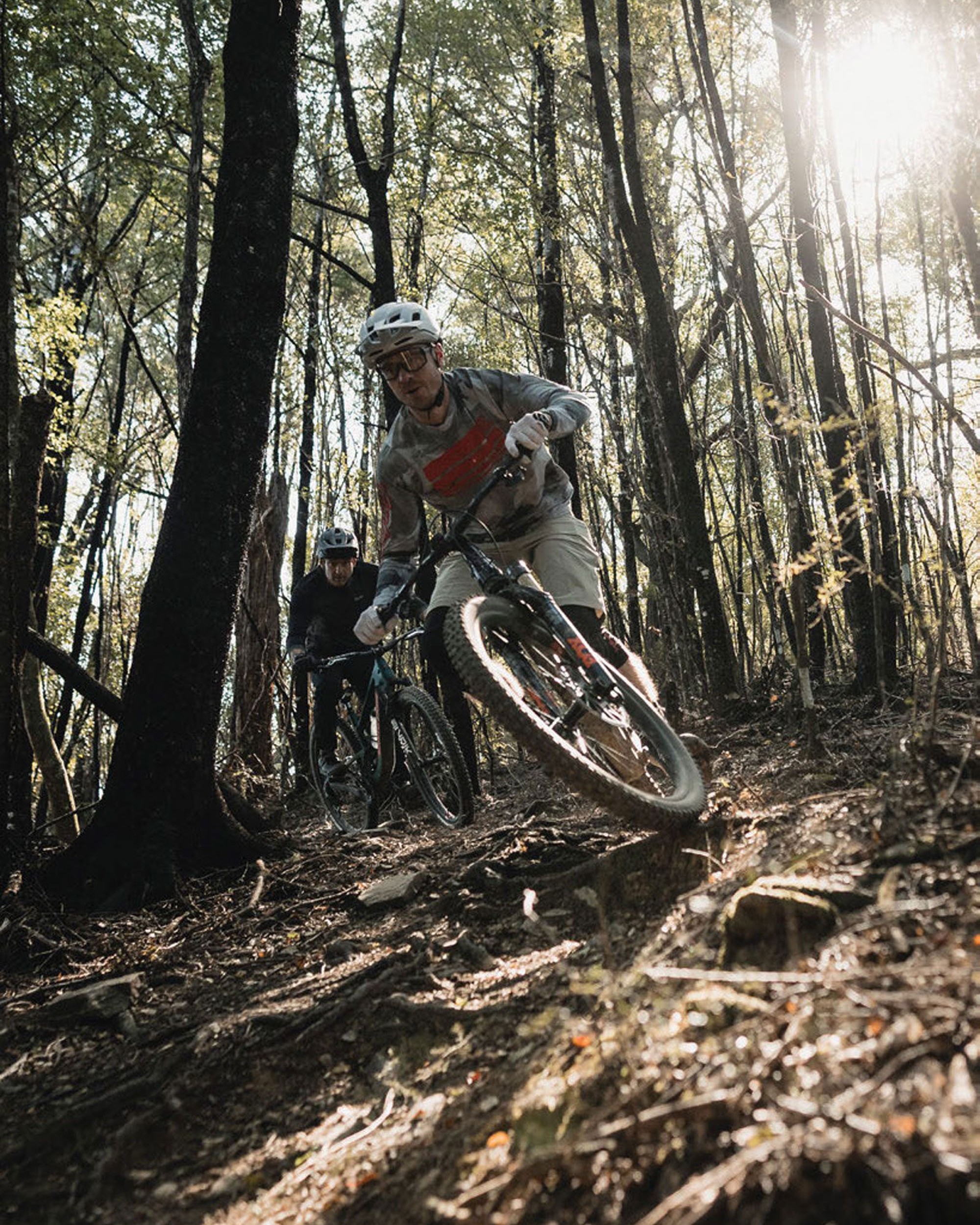
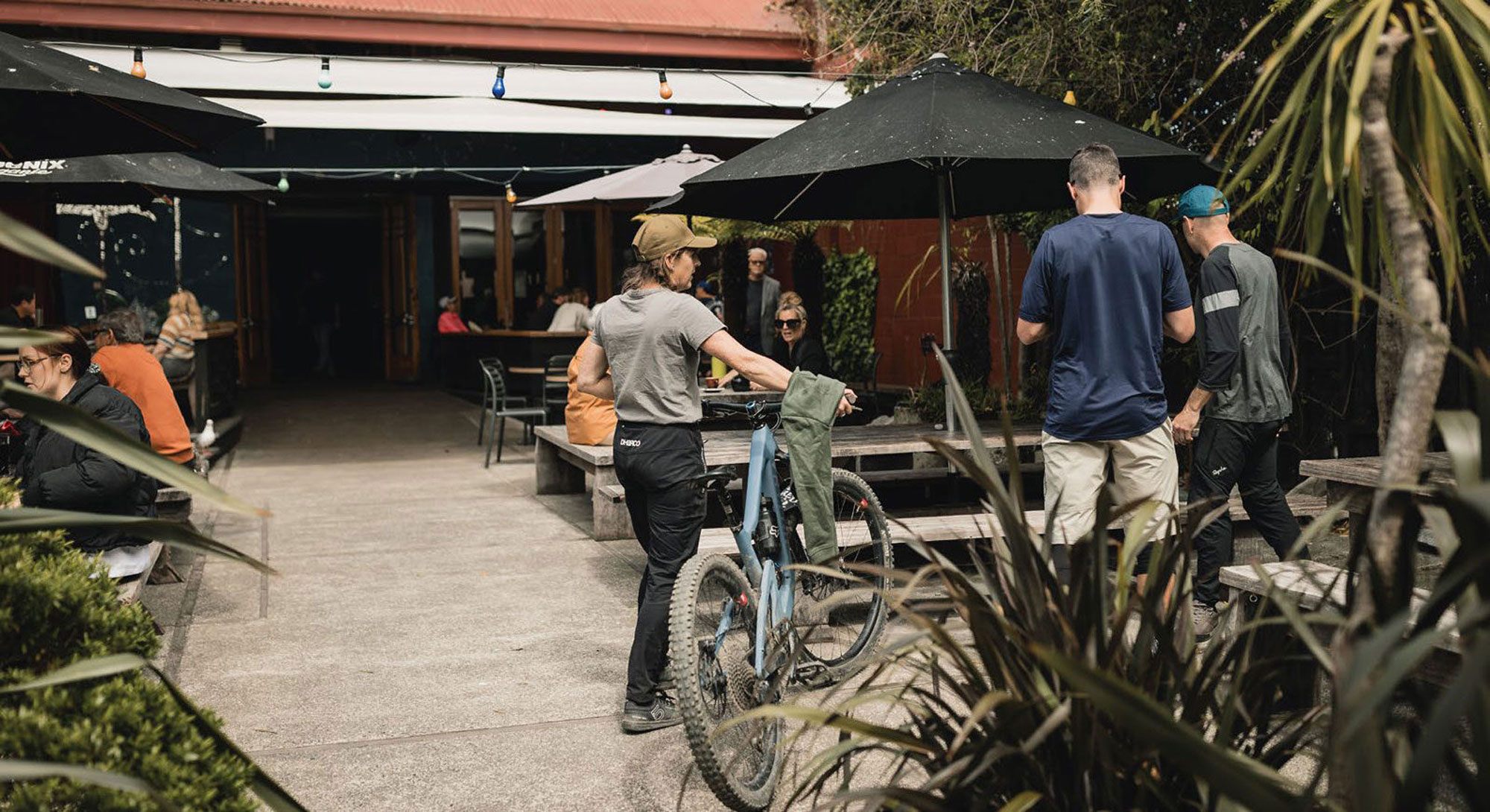
From the peak of the access road, ‘629’ drops into the bush and it’s “game on”. After just a couple of turns, you’re over some roots and straight into steep, loose sections – it’s spicy no doubt. Fortunately, just like Butters, the few crux moves are broken up by some mellow sections, allowing you to recompose, let your arm pump subside, and prepare for the next stretch of tech. Again, several steep, dropping turns are key sections, although with catch berms where required – it’s all pretty achievable if you keep a lid on your speed; release the brakes and things can quickly get buck-wild! Lower down, under pines, the trail mellows out for a period, and some fun flow takes over before dropping through native once again, eventually spitting you out on the banks of the Maitai River, a perfect spot to get your cramping arms working again with a mid-ride dip – ideal after the 524 vertical meters you just dropped.
Riding from 629 back out the valley, we came to Amanda’s car. She cracked the boot and produced a chilly bin full of ice with some of Two Thumb Brewing’s finest nestled inside – a hoppy IPA brewed with ingredients grown not far from Nelson’s famed trails. For something a bit less intense, Two Thumb has brewed a beer specially for the NMTBC; ‘Single Track’ is a session IPA available at Two Thumb Nelson, perfect by the glass for a post-ride chill – or you can take some home in a rigger for later… maybe both?! For every pint poured, Two Thumb donates to the Nelson MTB Club, how good! We park up beside the river to enjoy our beer and reminisce on just how damn good the trails we’ve ridden are – we’ve not even scratched the surface of the area but the stoke is high!
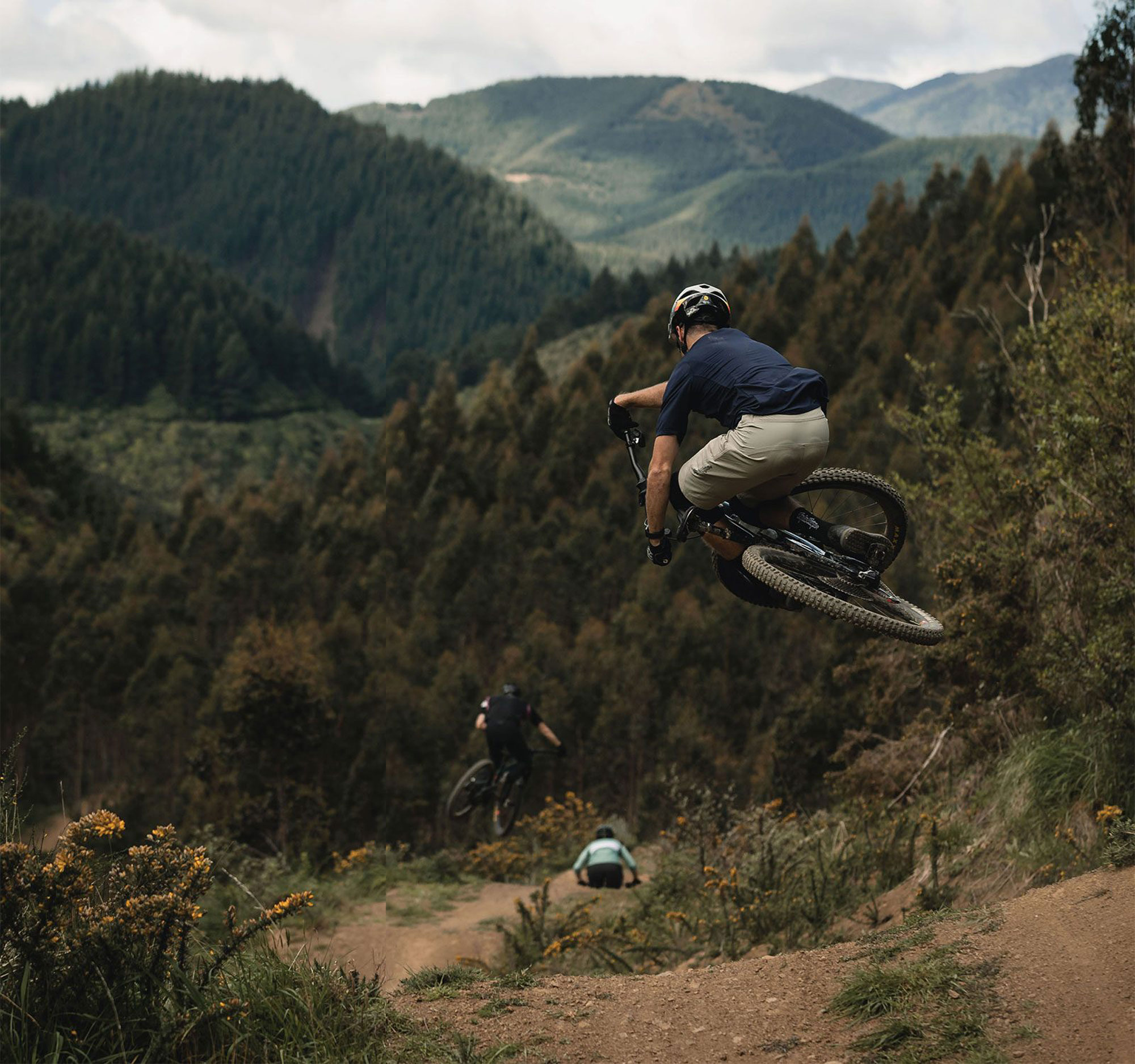
Nelson’s technical trails are a great way to stretch your ability and force you out of your comfort zone, ultimately making you a better rider. Thanks to smart trail building, the reality is that provided you’re in control and on course, most of the technical sections are doable given some caution and knowing your limits. There are two things to leave at home before riding some of these trails for the first time, though: ego and pride. Both could see you take a spill you could have otherwise avoided. Ride within your limits and don’t be too proud to walk a section if need be.
NMTBC is full of passionate people who run a slick operation, and their events always attract a tonne of locals but also a whole host of riders from around NZ who come to sample some epic racing and enjoy the town. Many come days early, or stay on after the event to ride what are truly some of NZ’s best trails in one of the most chilled towns in the country. Whether you’re gunning for the podium, or happy to just make it around the course, NMTBC events are always a great time both on and off the bike. Their event villages are hard to beat, and with quality food and coffee on offer the post-race vibes are always high, really adding to the community feel of the event.
For now, the Mammoth ‘24 course is filed away in the minds of a select few Nelson Mountain Bike Club committee members but, one thing’s for sure, they plan to uphold the legend of the Mammoth Enduro.
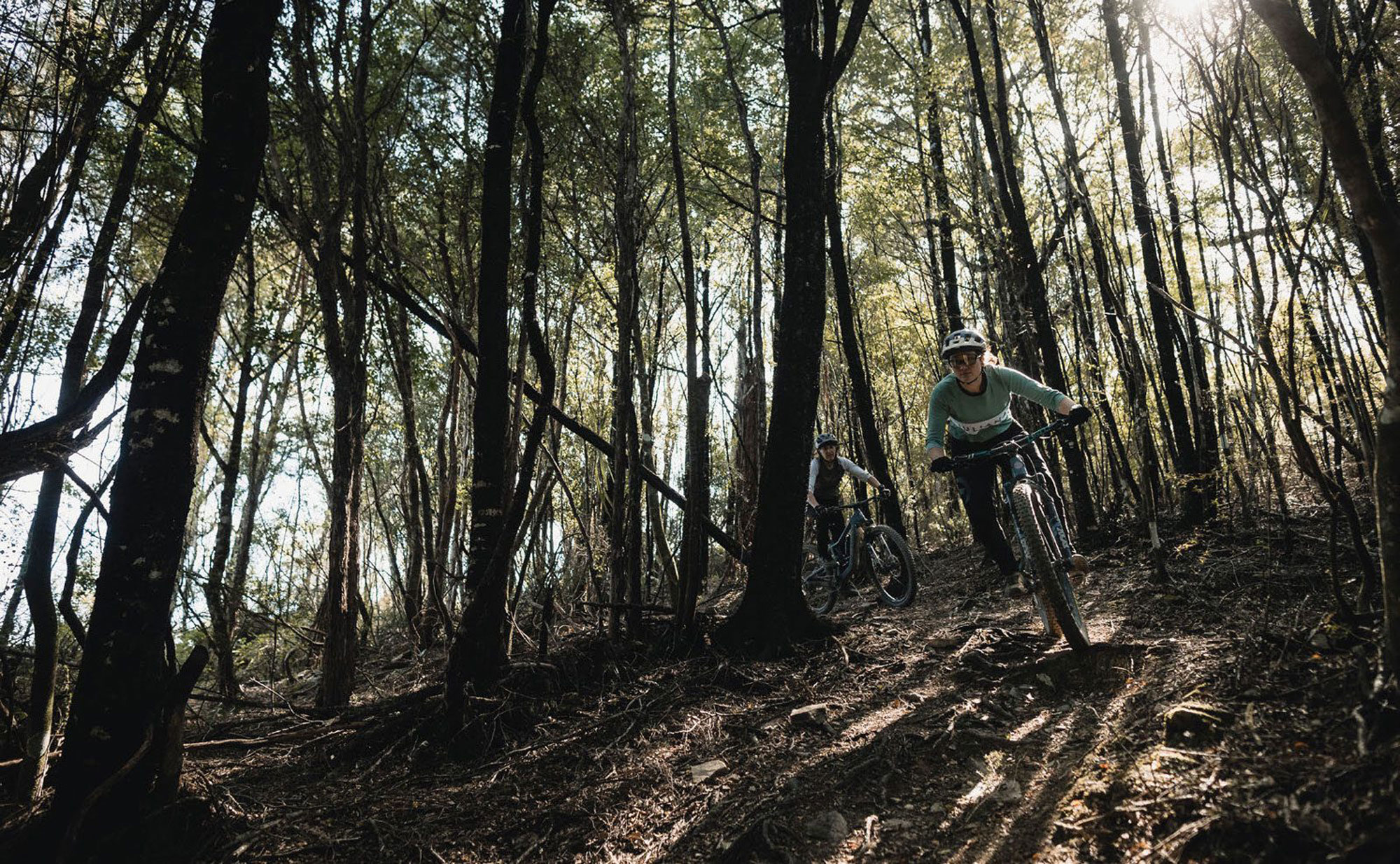
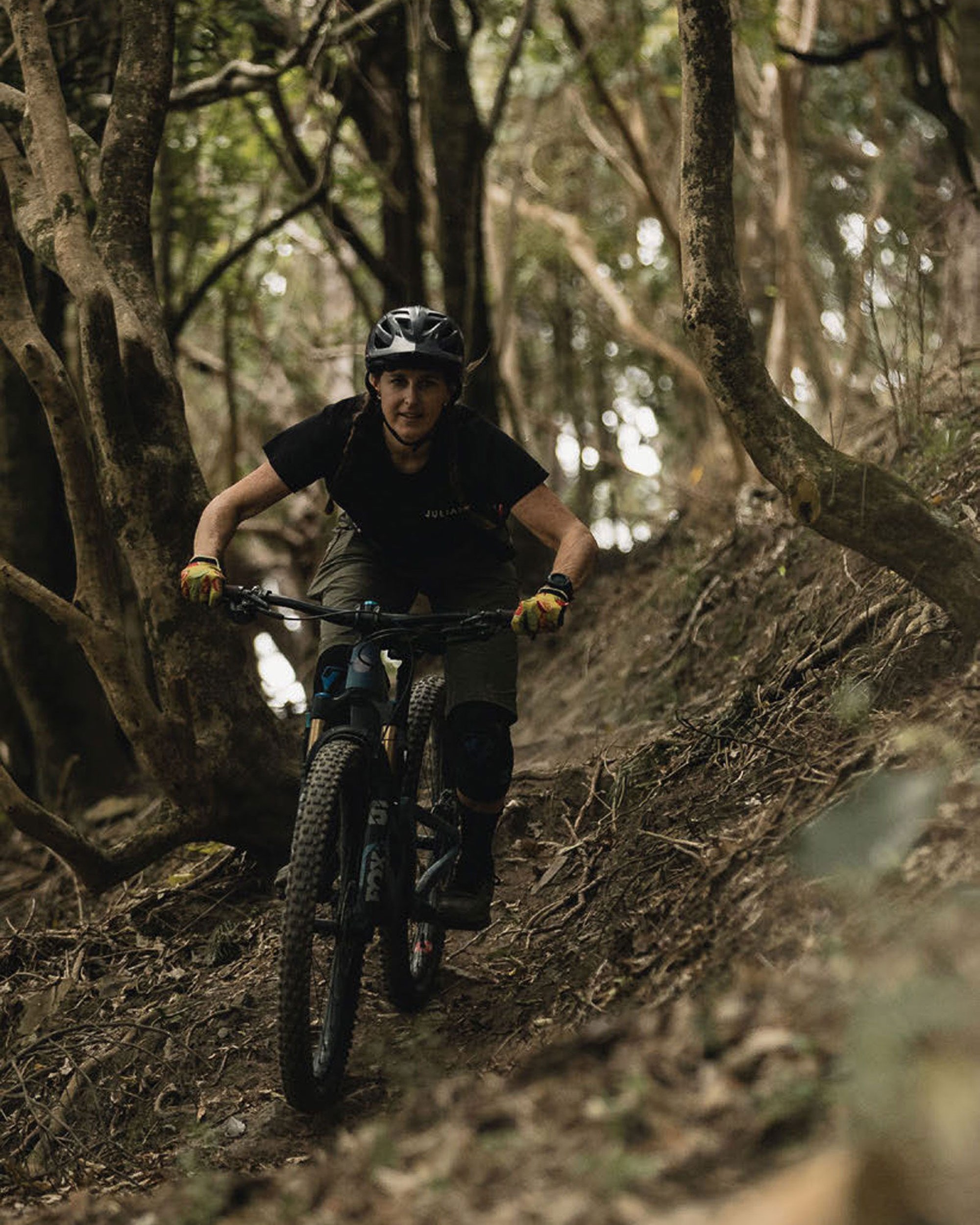
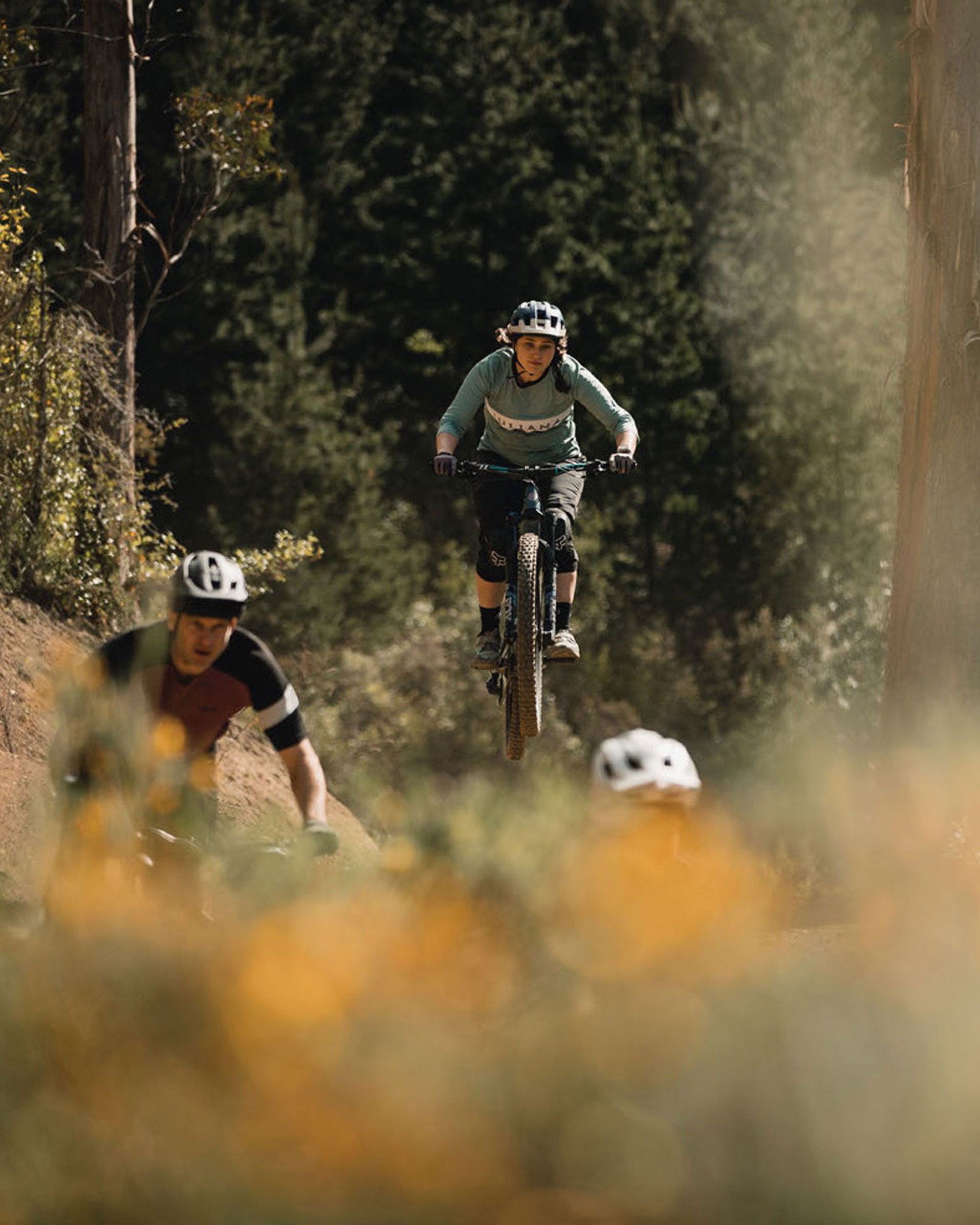
METERS OF DESCENDING: 1500+ 2022
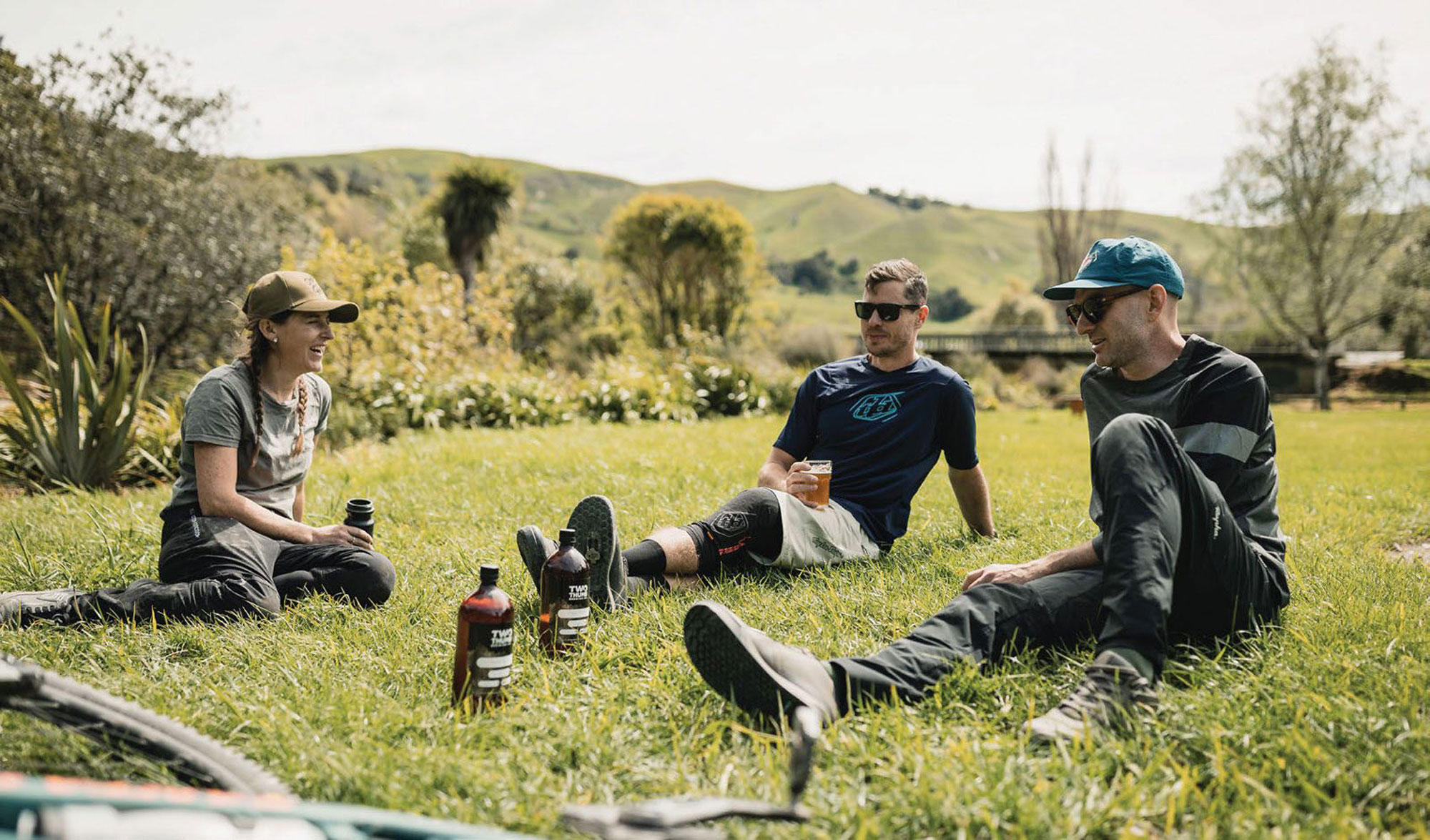

Welly on a Good day: They say you can't beat it.
Words Kelsey Timpany
Images Cameron Mackenzie
When people think of Wellington, the first thing that comes to mind usually isn’t ‘Mountain Biking’. Similarly, when EMTB-ING mentioned, most don’t immediately associate it with Wellington.
For someone who has based their mountain bike experiences around the meccas of Whistler, Queenstown and Rotorua, Wellington has never been on my radar as a biking destination – let alone on an eBike. When the opportunity fell into my lap, to sample Wellington’s trail network on a Pivot Cycles Shuttle LT, I was in.
Wellington – known for its tight, windy streets, tucked away cafes and bars, bright weatherboard villas perched on steep slopes and wind that blows right through your bones – is far from what an uneducated visitor would describe as a mountain biking playground. The best part, I soon learned – amongst the cool hummings of the city – are three quality mountain bike zones, that tick all the mountain biking boxes. Steep and tight; fast and flow; jumps and views; technical root chunder – and with most good networks leading directly to a pub or cafe.
MAKARA - POLHILL - MT VIC.
The mission: ride and sample as much of Wellington’s goodness in the space of an afternoon and on one battery charge. Easy.
The team of choice: Latham Collet, local Wellington shredder, fresh off his first season Privateering in Europe. Latham is your classic Welly young gun: heaps of style, fit as anything from the Wellington streets, and a tidy mullet. Cam McKenzie was tasked as day director and responsible for finding the trendiest bars and cafes – although Latham’s recommendation of a Brumby’s smoko was probably a highlight.
Our choice of Pivots played a valuable role in our Wellington mission. I opted for the Pivot Shuttle LT, a formidable machine that promised to deliver stability and control with playfulness on the zones we were about to explore. Latham, on the other hand, went for the Pivot Shuttle SL, which he reckoned felt exactly like his trail bike, with the convenient battery assist to take on the windy Welly roads.
It started like any other Wellington day: wet and windy. We had to pivot (pun intended) our plans drastically to avoid the torrential downpour. Cam and I put our heart rates in the red zone from one too many decent coffees at Cafe Neo, and did the classic pre-bike faffing at Pedal Project, where Latham conveniently works. The heavens parted and we were finally on our way to explore the cityscape.
First up was Makara Hill, a zone known for its tight singletrack against the backdrop of native bush and panoramic views. The usual 45-minute climb from the city was quartered thanks to boost mode and it felt like we were on top of Wellington in no time at all. On a good day you can see the South Island, and the start of the snowcapped Southern Alps, however, today we could only see as far as each other. Despite the morning’s weather tantrum, it was impressive to see many Wellingtonians out enjoying Makara Hill – doused in mud and wrapped up – as though it was a normal day. The weather definitely makes you tougher around these parts of the world and that was apparent from the hardy riders on the tracks.
Anticipating muck, we were pleasantly surprised to find the trails rode epically when wet. We were treated to tight singletrack, with natural side hits that started exposed and ended in dank native bush. Here, the Pivot Shuttles showcased the ideal blend of power and playfulness, especially for Latham who was throwing the LT around like it was his Firebird. Makara set the tone and pace for the afternoon; we were all stoked and excited to unlock the other zones. A quick pit stop at Brumby’s bakery to smash a mince and cheese pie, and we were on our way to zone number two: Polhill Reserve.
Smack bang in the heart of Wellington, this was just a convenient quick link away on the eBikes, through the city streets. There is nothing more satisfying than riding on a busy street, matching the traffic speed – convince me otherwise. The Pivot Shuttles were up for the job, getting up to effortless speeds of 50km whilst winding between cars and traffic lights. The reserve’s mountain bike trails, with their natural terrain, winding routes, and technical challenges, was another exciting opportunity to put the eBikes to the test. The Shuttles allowed us to navigate the terrain with ease but also punish the corners and chunder with playfulness and ease that truly defines Polhill. Latham and I had another sweet session of ripping corners, navigating steps, steeps and rocks, and finding the little hidden trail relics such as baby dolls and car parts, that make Polhill iconic.
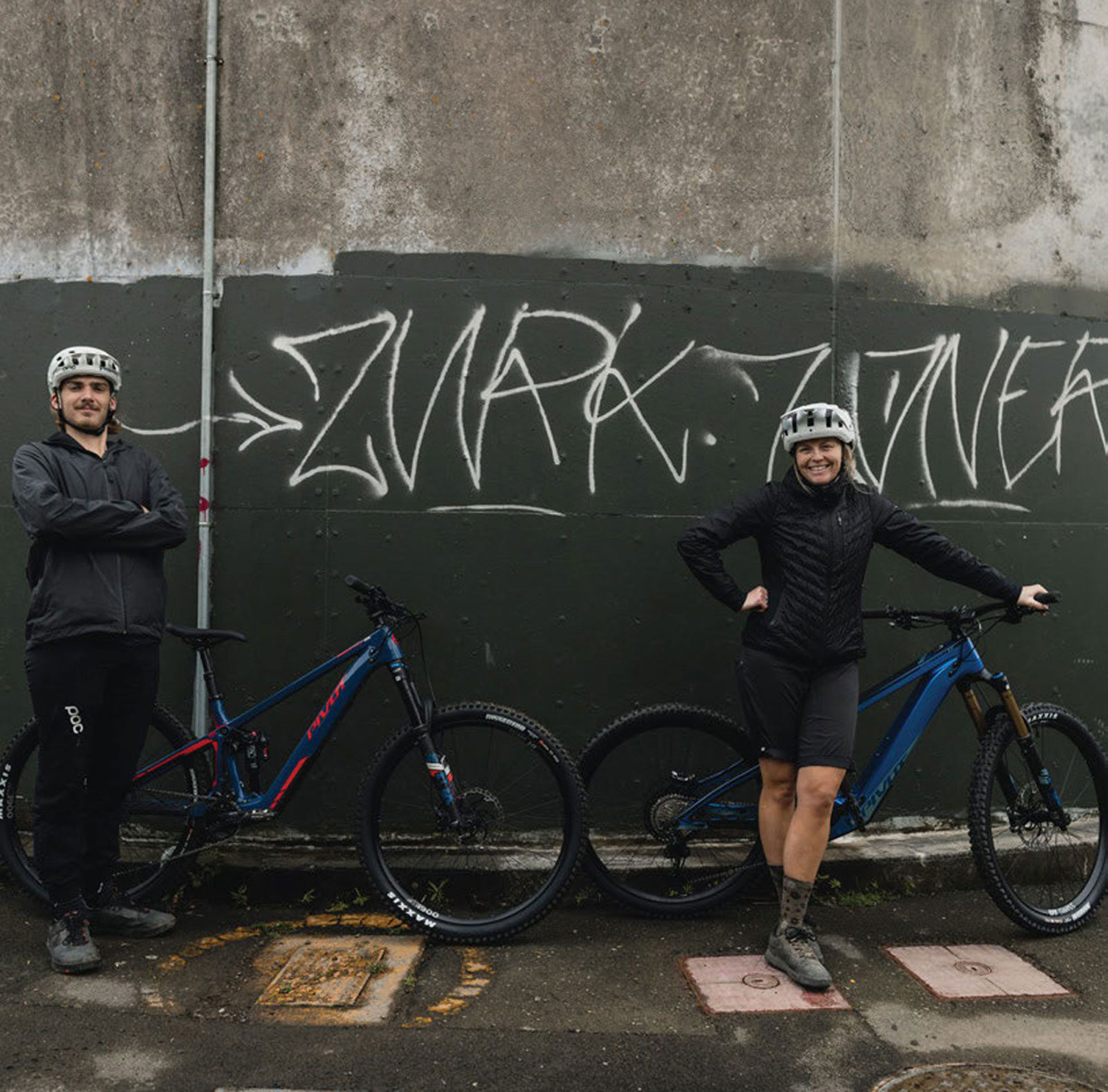
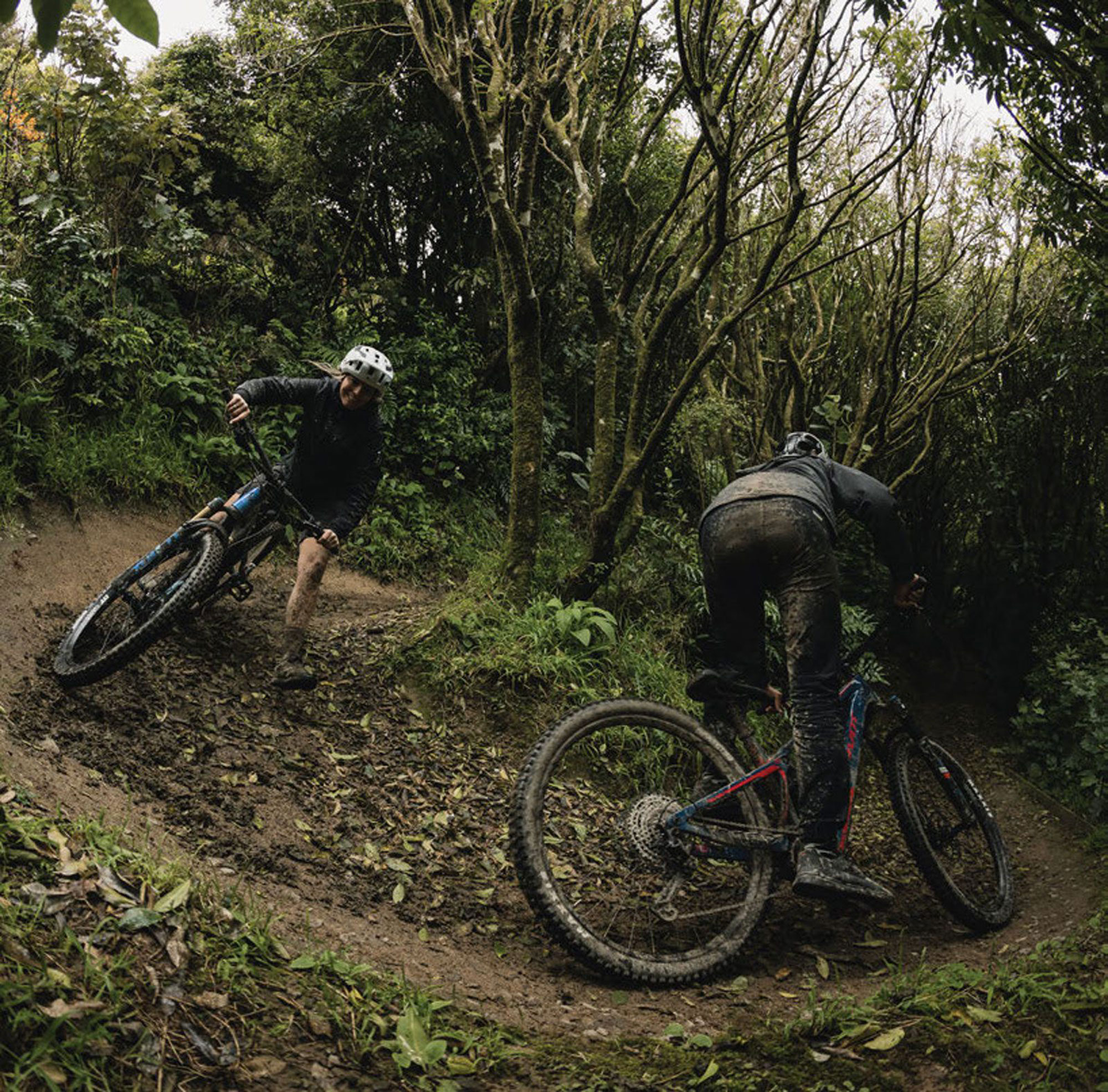
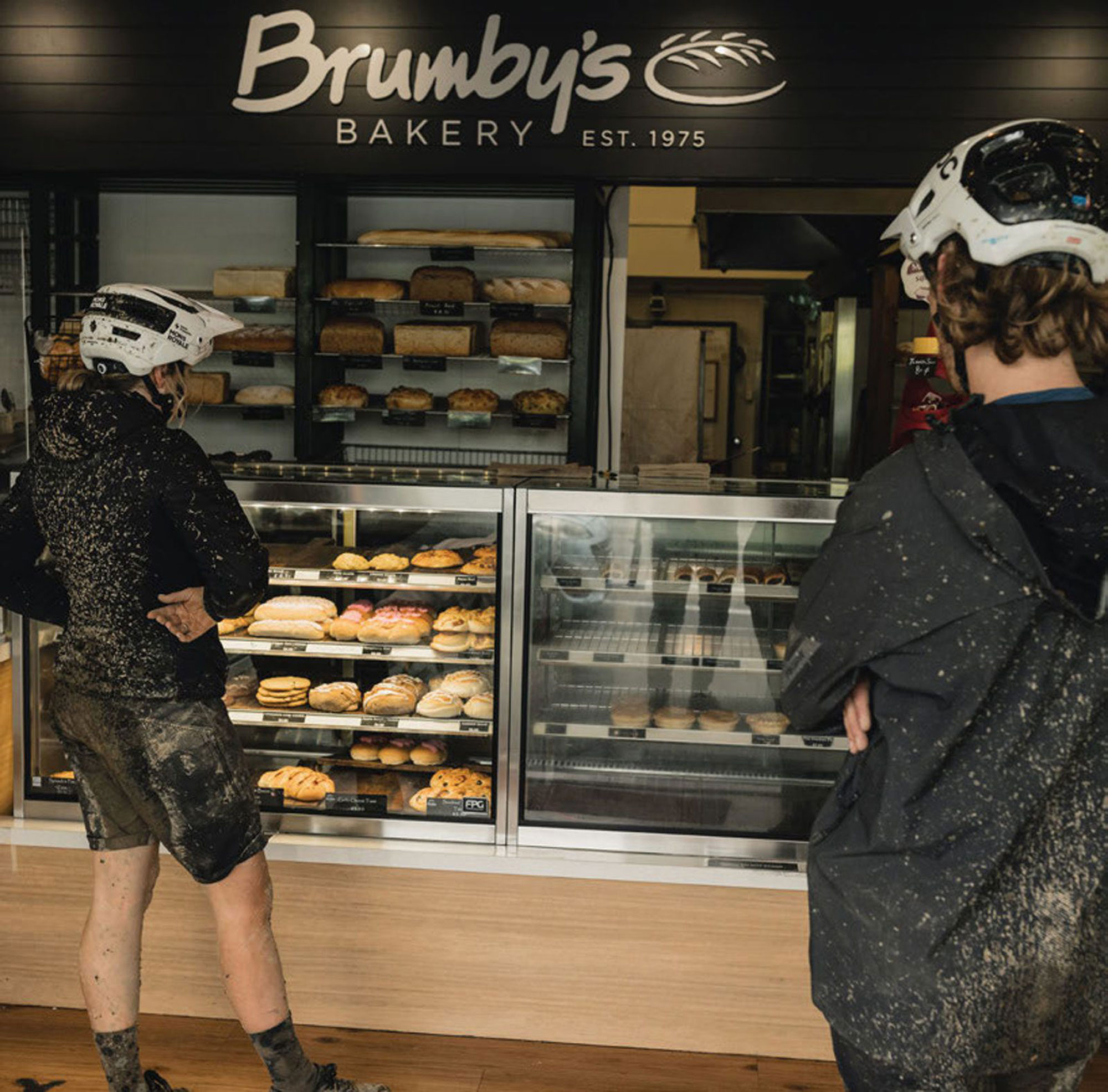
“WE WERE TREATED TO TIGHT SINGLETRACK, WITH NATURAL SIDE HITS THAT STARTED EXPOSED AND ENDED IN DANK NATIVE BUSH.”

We found some jumps that the local kids have been labouring on over the winter, lined with shark fins and drops, that I admittedly was too much of a baby to try. Latham held down the fore, and greased them all with style and ease. For an onlooker, no one would suspect he was actually on an eBike. It was awesome to see the love and care put into these jumps by the grommies, and a testament to the quality of shredders coming out of the city.
After exploring two zones, it was well and truly time for a beer. Luckily for us, Polhill Reserve trails basically pop you straight out to Garage Project, one of the top tier craft breweries in the city. Cam and I went for classic hazy styles while young Latham – who is still on his beer journey – opted for a sweet tequila sunrise vibe. He’ll get there eventually. The taphouse was a melting pot for students, hipsters, professionals – and filthy mountain bikers like us. No one batted an eyelid at our mud-crusted faces and bums.
With refreshments annihilated and tanks full, it was time to hit Mount Victoria, or the Big V, but not without a few urban hits for Latham. Stairs? Who needs them when you can jump them on an eBike? The Shuttle LT battery had only dropped one bar despite already covering 1500m of climbing over four hours. With a couple of hours of daylight left, it was time to really put the eBikes to the test and see what juice we could suck out of them.
“STEEP AND TIGHT; FAST AND FLOW; JUMPS AND VIEWS; TECHNICAL ROOT CHUNDER - AND WITH MOST GOOD NETWORKS LEADING DIRECTLY TO A PUB OR CAFE.”
Mount Vic proved to be the most technical and challenging riding of the day. Latham led us directly to the wettest, steepest roots -proud to show us Wellington’s finest chunder. Despite the wet and buttery clay, Latham owned the lines and greased them with ease. We sampled the jump line with good sized tables that flowed really well. The best part is you can lap the jumpline on the road and fill your boots with airtime – double points on an eBike! By the time we were finished with Mount Vic (well, it actually finished me) it was dark and most definitely time for a well-earned feed. Wairoa Brewery in Hataitai was the natural choice, where we were welcomed by another cool Welly bartender and a group of ‘fun mums’, whose decibels were increasing with each round. We demo’d some Burger Fuel in the brewery and debriefed about the epic afternoon that was had. Bellies full, legs medium-rare-tired, arms exhausted, and in complete darkness, it was time to cruise back to where we left the cars -at the bottom of Makara. No problem with batteries, with enough juice to weave through traffic and city goers gearing up for a boozey night in the city. A highlight was witnessing Latham’s cat-like reflexes when he nearly crashed into a street sign at full speed.
I came to Wellington with a neutral attitude about what our mission had in store, albeit with a hint of skepticism that the city could meet all my expectations for a mountain biking adventure. My eyes have well and truly been opened to the world of eBiking; the volume and quality of riding that can be achieved in one wet afternoon, while maintaining a high standard of excellence and sophistication. Teamed with an epic crew of Latham and Cam, the seamless blend of eBikng meeting epic Wellington trails is absolutely one for the books.
Welly on a good day: they say you can’t beat it. Welly on a typical day and with an eBike, I will wholeheartedly back that you can’t beat it.
THE TAPHOUSE WAS A MELTING POT FOR STUDENTS, HIPSTERS, PROFESSIONALS - AND FILTHY MOUNTAIN BIKERS LIKE US. NO ONE BATTED AN EYELID AT OUR MUD-CRUSTED FACES AND BUMS.
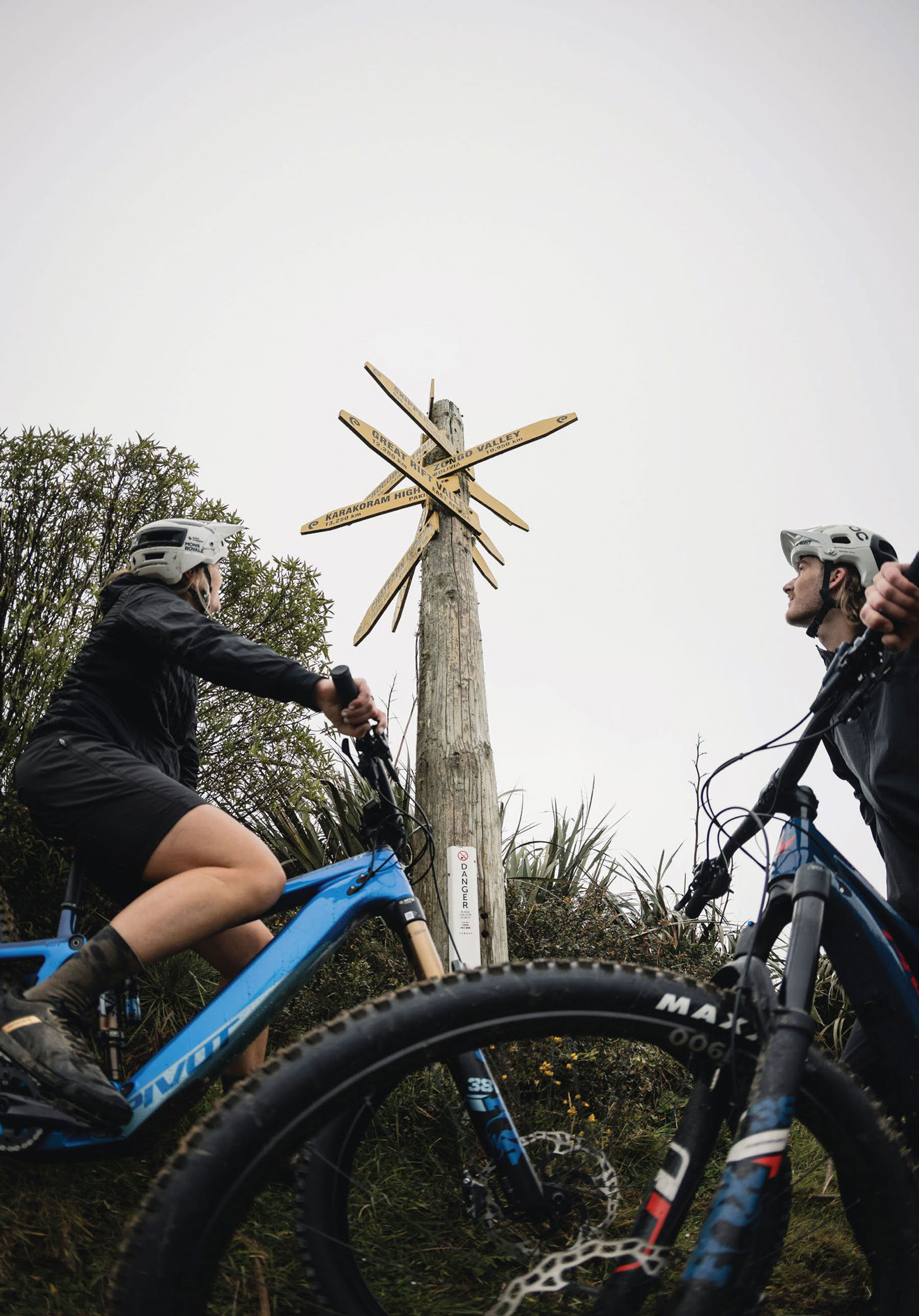
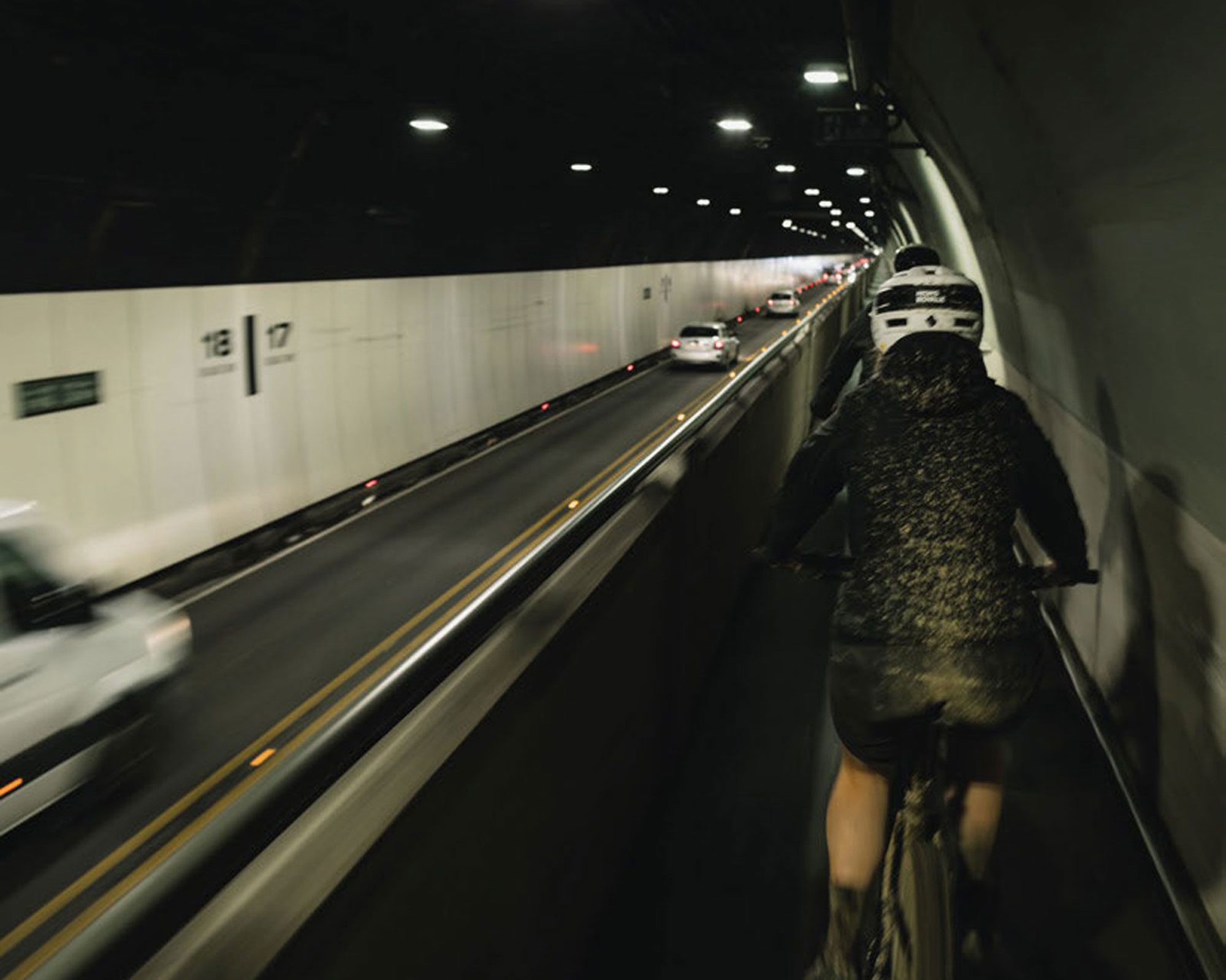
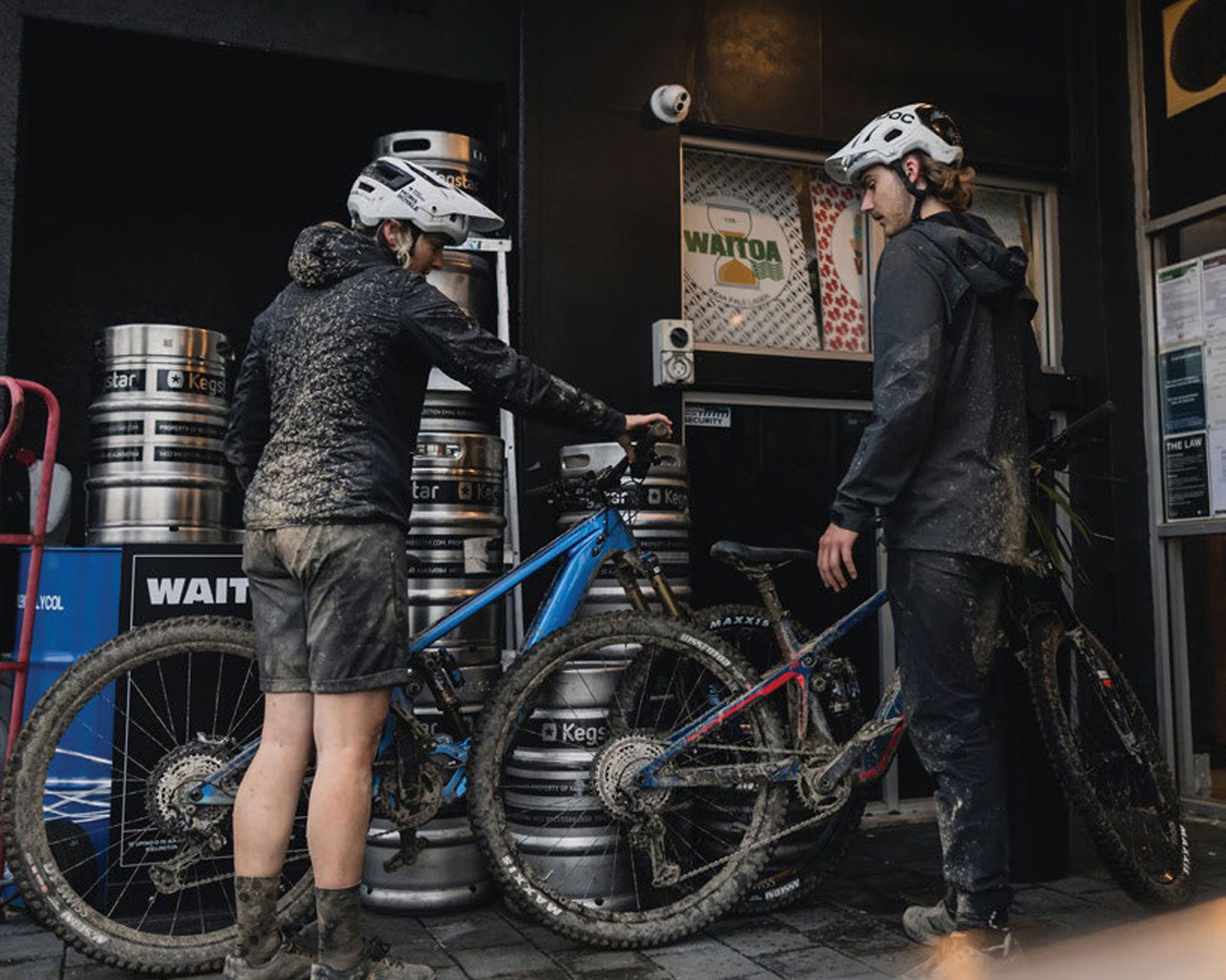
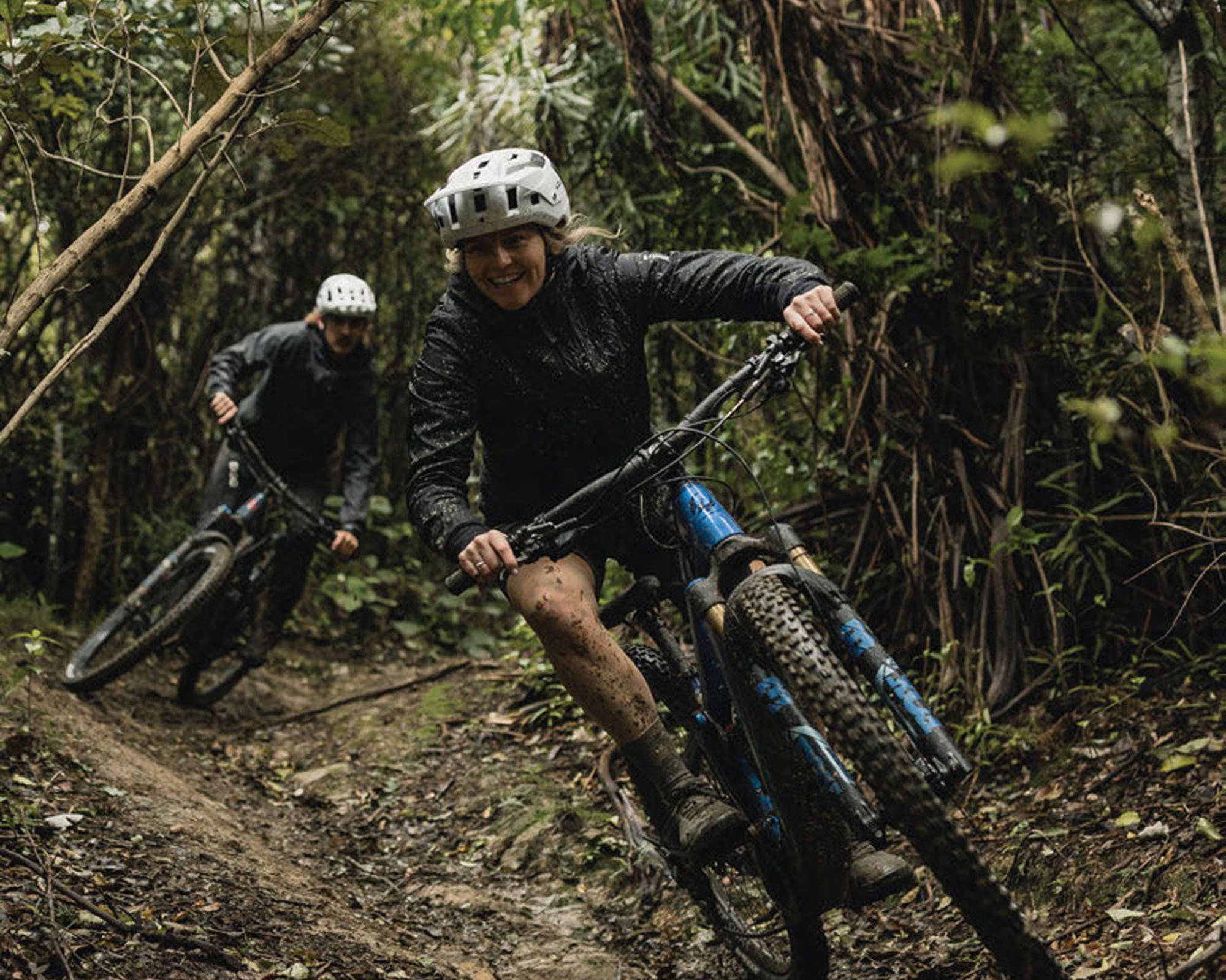
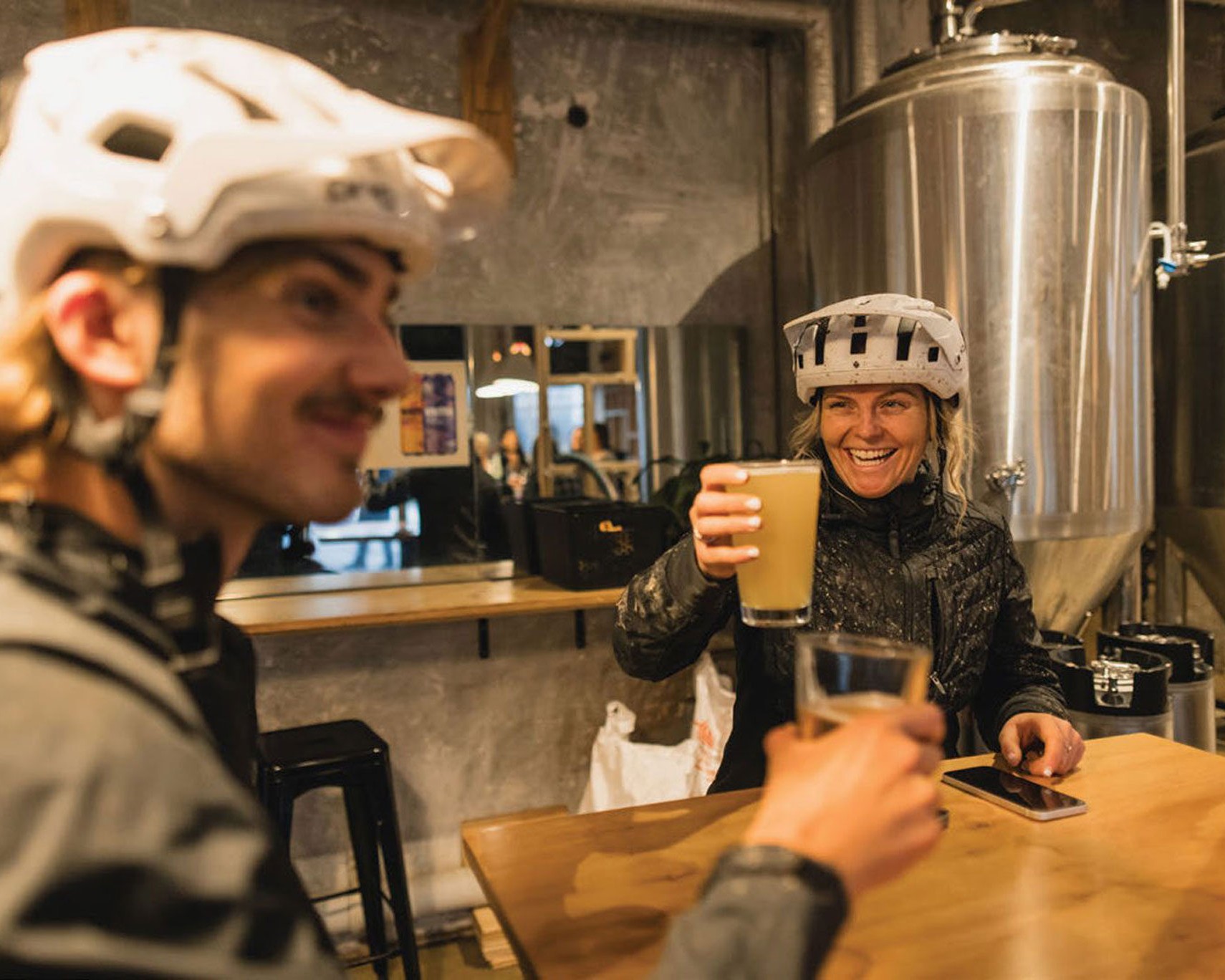

Musings Issue 110
Words and illustration by Gaz Sullivan
“What I saw when we went for a day in Taupo was mind-boggling…”
We live in Rotorua. We came here for the forest, the trails, the lakes, and the space. It’s great to be able to go to the trails whenever the mood strikes me, which is most of the time. Many visits to the same place do not take the shine off – for me, anyway.
Even so, sometimes it’s good to go somewhere else and, for us, that is often Taupo.
Just north of town is a small, but beautifully formed, mountain bike park everybody calls Craters.
The trails surround a thermal area that was created as a side effect of the bores that drive the Wairakei thermal power station. It is called Craters of the Moon, and that is a fair sort of description of the place.
We have been riding there since the late 1980s, and the trails have evolved, slowly increasing in length and variety.
Craters has a character of its own. With a few exceptions, the trails are narrow and have a carpet of pine needles that results from fairly light traffic. There is not much elevation available, but the builders have been very creative with their use of what they have.
The thing that sets Craters apart for me, is the connectivity of the place and the way it is integrated with the trails that run along both sides of the Waikato River. A rider can set out from town – and I mean the centre of Taupo city – and ride singletrack to the mountain bike park. Then, they can ride trails for hours without having to ride any forestry road at all. The trails are not very technical, but they are fun – and there are places hidden away in Craters that are downright amazing.
A trail drops into a tight little canyon with a waterfall tumbling out from under a tangle of huge boulders, and I take the same photo of my bike parked next to it every time I visit. Can’t help myself. Another follows a different canyon past cliffs on one side and a precipitous drop to a thermally heated stream on the other. Climbing singletrack rewards riders with big views of mountains and lake. It’s easy to clock up 50 kilometres of continuous trail in an outing, maybe many more. I always run out of gas before I run out of options.
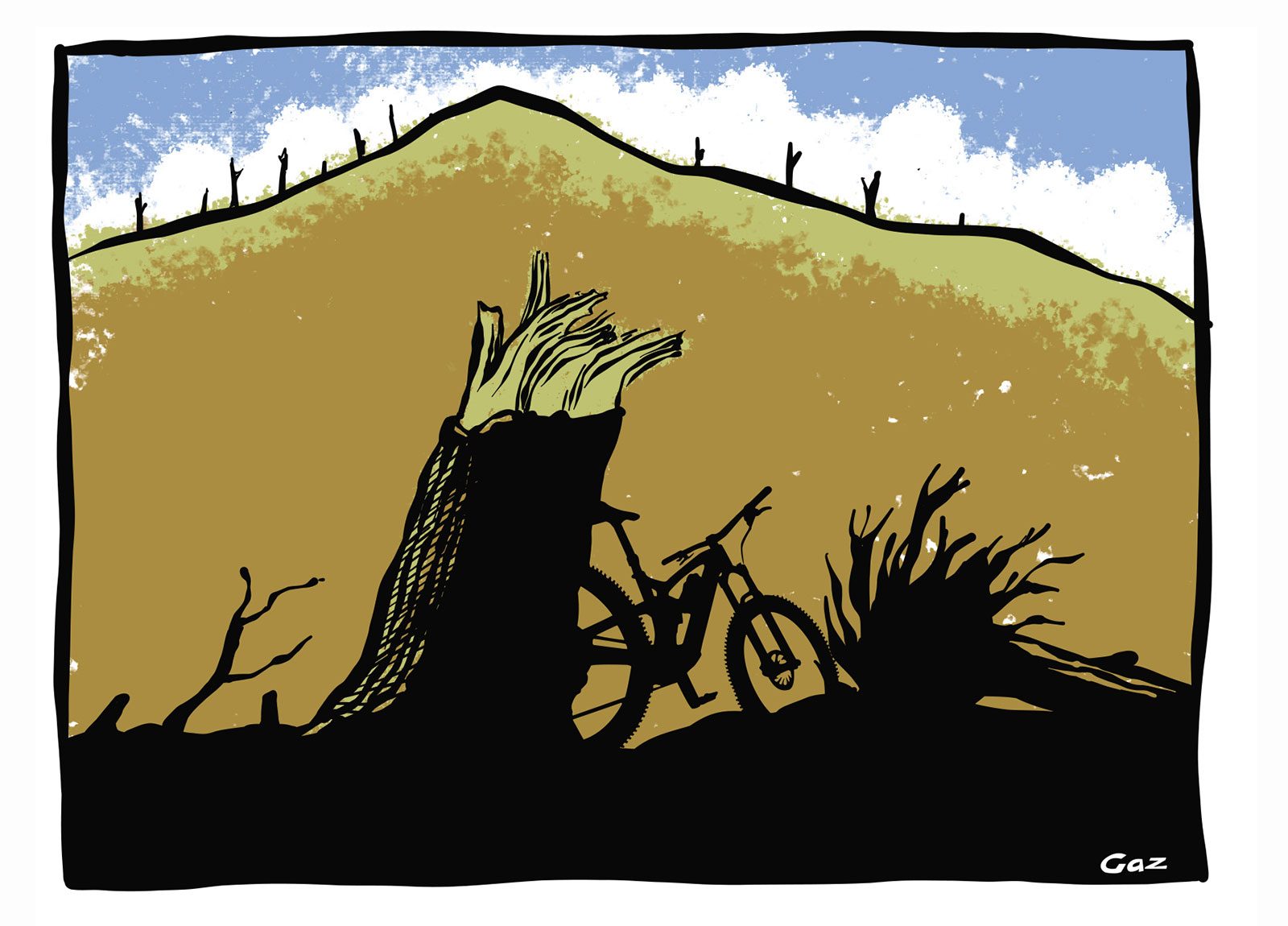
The Hub is a well-designed carpark with a cafe directly opposite. It sits one flat white and a muffin from town, and has a nifty underpass taking riders under the main road into Taupo – and the trails beyond.
Well, it did until Cyclone Gabrielle visited. The underpass is there, but Craters is closed. The carnage and heartbreak caused by that storm is well documented, and it may sound petty to be talking about the damage to a mountain bike park when so many people have lost everything, but what I saw when we went for a day in Taupo was mind- boggling. For those of us who dodged any of the serious effects of Gabrielle, it is a sobering snapshot of what happened.
The park was closed when we visited, and it will be for a long time. Could be six months, maybe more. The friendly woman in the Hub Cafe reckoned there were 15,000 trees down. The hill that is visible from the Hub looked like an active logging site, nearly every tree on the exposed slope facing the highway was laying on the ground. Areas further south had trees uprooted, trees snapped off halfway up, or split down the middle. It is an unbelievable mess, and under it all is a lovingly nurtured network of trails.
The ride down the river, past Huka Falls to Aratiatia and back along the other side, has reopened and so that is where I went. It’s bizarre how some trees stand, completely undamaged, right next to a tangle of trunks and branches that are torn and smashed.
Like most places we ride, the trails at Craters didn’t make themselves. They were built by the usual combination of passionate volunteers, people drafted in to help passionate volunteers, and – on a few sections – commercial trail builders. It took decades of applied enthusiasm because, while new stuff was being created, the existing stuff had to be maintained. Again, like most places we go to ride.
Some of the places we go, that are shared with commercial foresters, get periodically wrecked by harvesting – but that is the deal. We know that going in. We try to get started in young trees, to get maximum bang out of our thinly stretched buck.
When a weather system lays waste to a whole trail system in one go, those plans become meaningless. The work in front of the Taupo team is huge – a restoration job that won’t really start until the forestry crews have done what they can to make the place safe to enter.
One thing you can be sure of: it will re-open. The same enthusiasm that built Craters, will rebuild it.
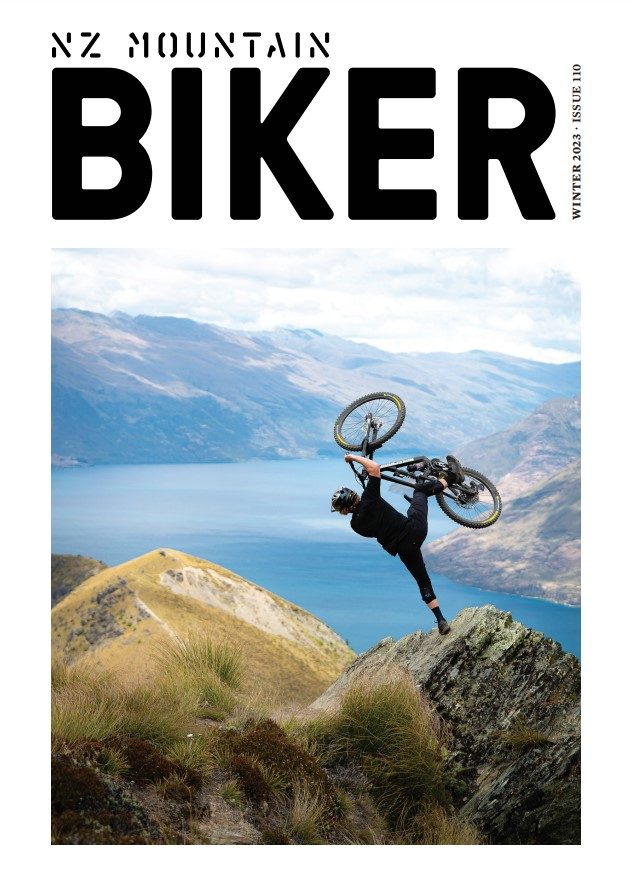
Bosch eBike systems take digital theft protection to a new level
Words: Alex Stevens
Ebike sales have been on the rise for the last few years and, unfortunately, so have eBike thefts. Chances are you saw the recent story about one particular enthusiast who was so keen to get his hands on his dream bike that he broke into his local store and pedalled away on a $17,000 rig.
Once upon a time, a lock and chain used to be enough to deter potential thieves. Now it seems our prized possessions are not safe even when locked away inside a shop with a burglar alarm system. The bike thief did forget one important thing: the charger. The store owner is hopeful this might be his downfall and buying a new one might be how he gets caught. Fingers crossed.

There is actually one system which could have helped save the day here, or at least led to a speedy retrieval of the stolen bike. Bosch’s new eBike Alarm function provides more safety and better protection. The alarm is able to tell users the location of their eBike and sounds an alarm in the event of suspicious movements.
We tested it and can confirm that ‘suspicious movements’ include moving the bike just a couple of centimetres when you’re in the middle of servicing it and forget that the alarm is enabled. We were treated to an ear-piercing screech that would surely be enough to deter even the most determined thief. If, however, the eBike is stolen, you would receive a push notification on your smartphone along with location tracking via the eBike Flow app.
After a one-time installation via the eBike Flow app, your smartphone serves as a digital key. If you switch off your eBike, eBike Alarm activates automatically. There’s a two-stage system to the alarm and the smart motion detector can tell whether your eBike has been moved a little or a lot. In the case of slight movements, the eBike system emits several short warning tones as a deterrent.
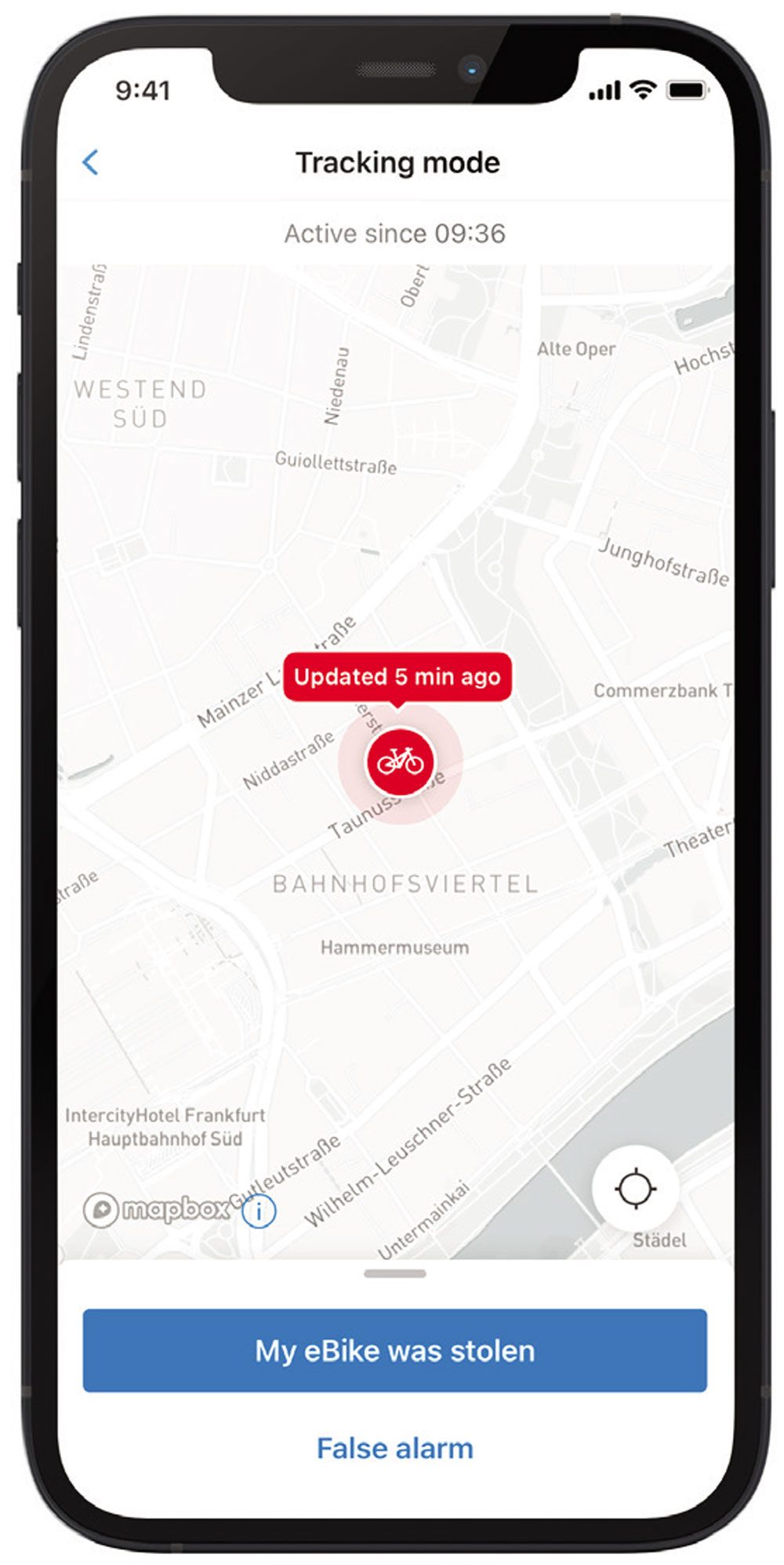
If the eBike is moved a lot and the matching digital key, i.e. your smartphone, is not nearby, it sends out a loud alarm tone as well as a notification to the smartphone. To use eBike Alarm, the eBike Lock feature must be activated in the eBike Flow app and the new ConnectModule installed on the eBike by a specialist dealer. It can be installed on any Bosch Smart System-equipped bike. The paid component is installed on the eBike and contains a radio and GNSS module, a separate battery and various sensors. You can only use eBike Alarm after installing this component.
Users who decide to purchase a ConnectModule, receive eBike Alarm for twelve months at no additional cost. After that, they can decide whether they want to continue using the digital service at a fee – eBike Alarm is not charged for automatically.
After the free trial year, the feature costs 4.99 euros per month or 39.99 euros per year. The subscription is charged in euros since Bosch is based in Germany, but the service is available further afield, including Aotearoa.
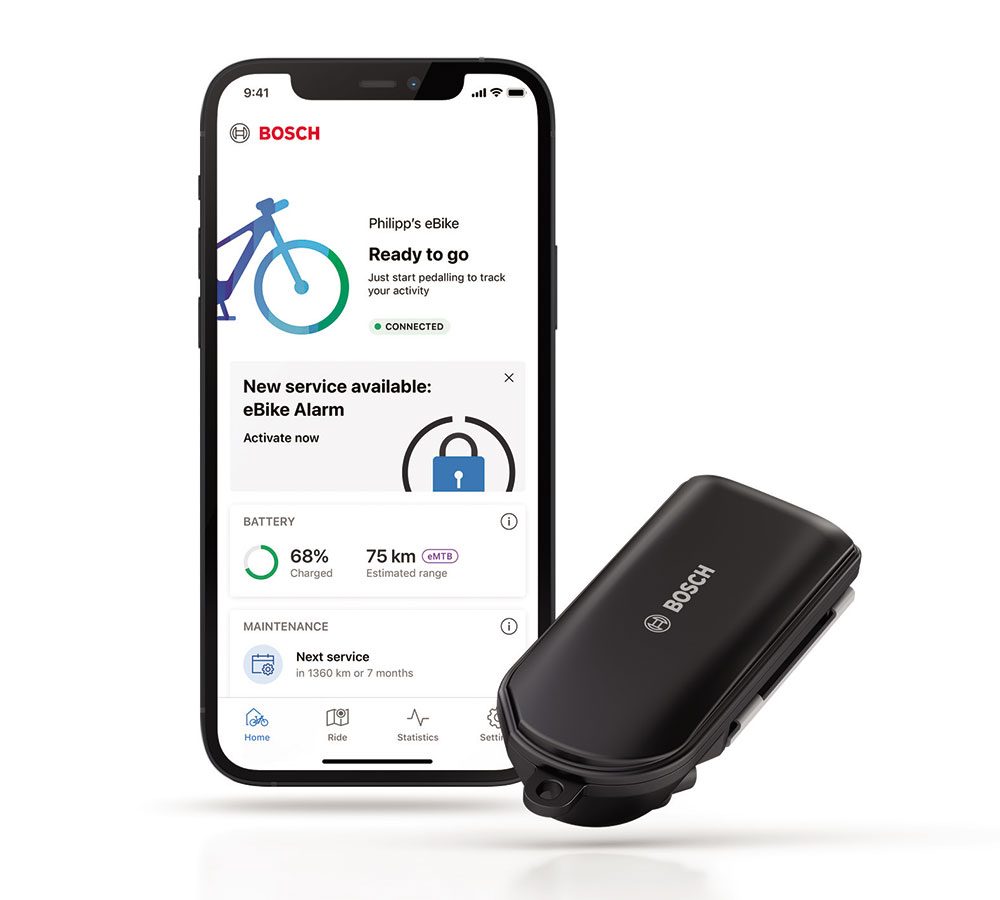

Bike Review: Trek Rail 9.8
WORDS: GAZ SULLIVAN
DISTRIBUTOR: TREK NZ
RRP: $12,999
I am not privy to the think tank at the centre of Trek Bikes, so what follows is pure guesswork, but here goes: Nearly two decades ago, Trek broke ranks and named their flagship trail bike after the top category of that very American petrol-head sport of drag racing. From its very beginnings, in the 1940s, the simple competition between two vehicles over a standing start quarter mile has been a technical arms race. And, the first thing those early hot rodders did to get an advantage over the guy in the other lane, was to figure out how to use something more volatile than pump petrol into the engine.
The stuff they focused on is nitromethane. Various amounts of it definitely makes more horsepower. Mixed with a number of other ingredients to make engines start reliably and not tear themselves apart immediately, nitro was called ‘the poor man’s supercharger’. Then they added superchargers, and squeezed phenomenal power out of a V8 motor.
To differentiate the entrants running on regular petrol from the engines running on anything else, a category was added to racing classes called ‘Fuel’.
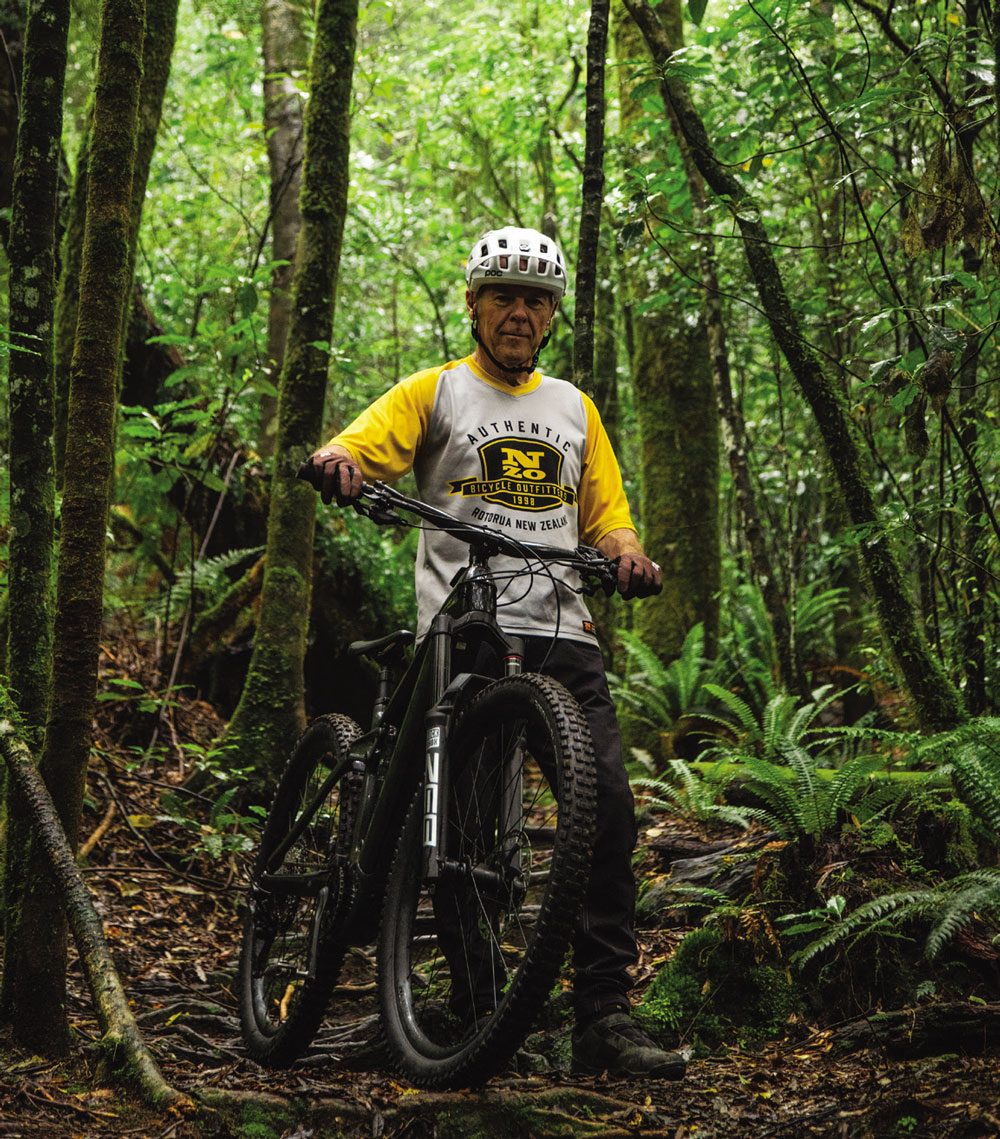
If there was any doubt that Trek was referring to nitro when they named the Fuel line, they dispelled that by adding a model called Top Fuel a few years later: that is the name of the blue ribbon event of drag racing, the fastest, most explosive, and most specialised class of the sport.
The first dragsters were simple contraptions, usually a 1930s Ford with the body removed and the engine set back toward the rear of the vehicle, and some sort of crude accommodation for the driver, aft of the engine. Because the main members of the chassis were frame rails, the cars become known as ‘rails’. As things got more sophisticated, and custom-made machines were fabricated from lightweight tubing, the name stuck. The fastest things on a drag strip were rails.
When Trek launched its flagship eBike, they slapped the name ‘Rail’ on the top tube, further cementing my belief that any other possible meaning associated with the name could be ignored: it was another tip of the hat to the dragsters.
The latest incarnation of the Trek Rail is the third iteration of a simple design, based on the time-proven system shared by the Fuel and the Slash. Like its four-wheeled namesake, the design is fairly brutal and unapologetic. No attempt is made to hide the Bosch power plant, and the Rail 9.8’s massive 750 watt battery is an obvious part of the bike’s architecture, not really hidden in the gargantuan down tube. It’s an obvious eBike, and wears its heart on its sleeve.
To further connect the bike to its hot rod DNA, is a sparkly metallic ‘prismatic’ paint job and big decals that look like chrome.
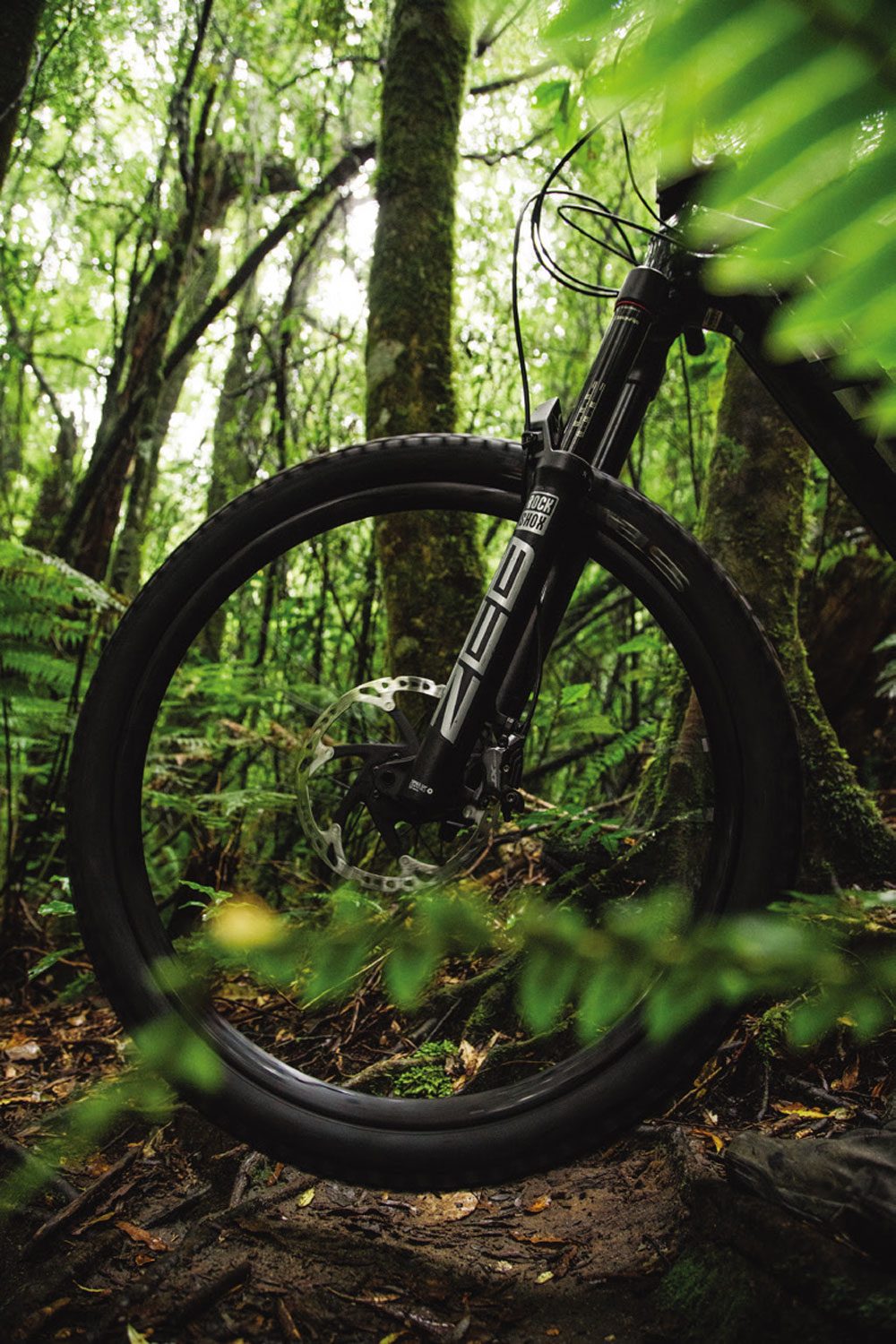
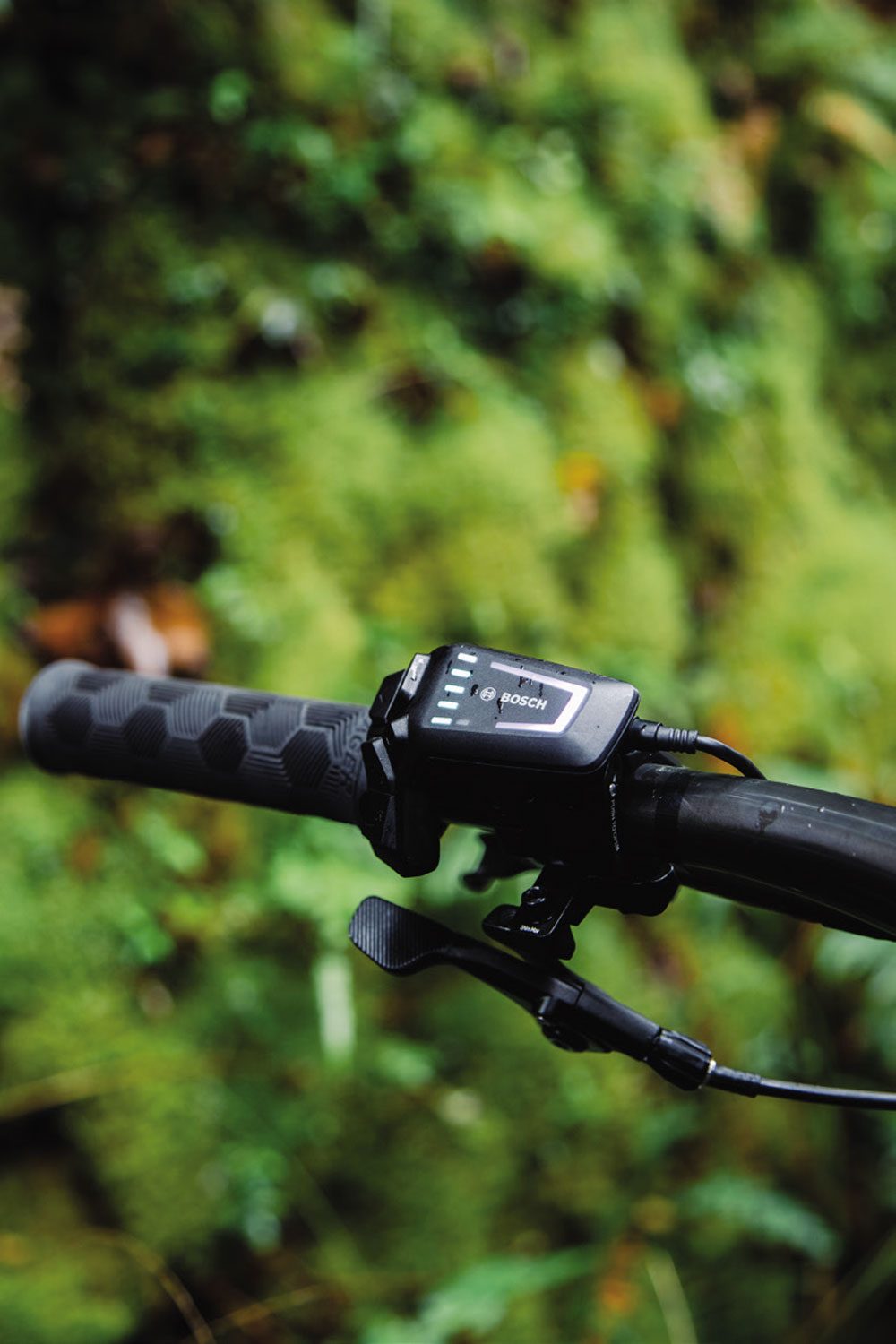
Out of the box, the 9.8 has an epic set-up. A full carbon frame offers 150mm travel and is teamed up with a RockShox Zeb fork, providing 160mm travel up front. It comes with a tough Bontrager 29 inch wheelset that stayed true and gave no trouble over a three month review period where I clocked up over 1100kms on the bike. It is possible to mulletise the bike with the assistance of a Trek dealer to make the necessary adjustments to the Bosch system for correct speed readings and power output. Mostly Bontrager components wear a full set of Shimano XT shifters, drivetrain and brakes.
Geometry is aimed at going fast on trails: a head angle of 64.2 degrees in the low setting of the adjustable rear suspension flip chip Trek calls a ‘Mino-Link’, and a longish frame reach of 45.2 cm.
The Bosch Performance CX Line motor has a reputation for reliability and, on the trail, it was surprisingly quiet compared to other eBikes I have shared rides with. The Bosch motor does emit a fair amount of clatter on downhills, however.
The details are nicely handled, a removable battery has a pop-out handle for carrying it indoors for charging, or to keep it safe while your sled is hanging on the back of the truck. You can access the internal cable routing while the battery is out. The bike has a neat little flap over a charging port on the seat tube, so you can charge it while the battery is installed.
Charging takes quite a few hours from low to full charge, but is worth the wait once you get on the trail. The battery is a seriously well-endowed source of grunt.
Last year, I was lucky enough to write up a NZ Mountain Biker review of the Trek Fuel EX e, and I was amazed by how much I liked the e-assist. I reckoned the Fuel EX e was the ideal bike for a mountain biker, with a bit of fitness and experience, looking to go a bit further or squeeze more trail out of a busy schedule. Now I can directly compare the EX e to the Rail, and I think that still holds true.
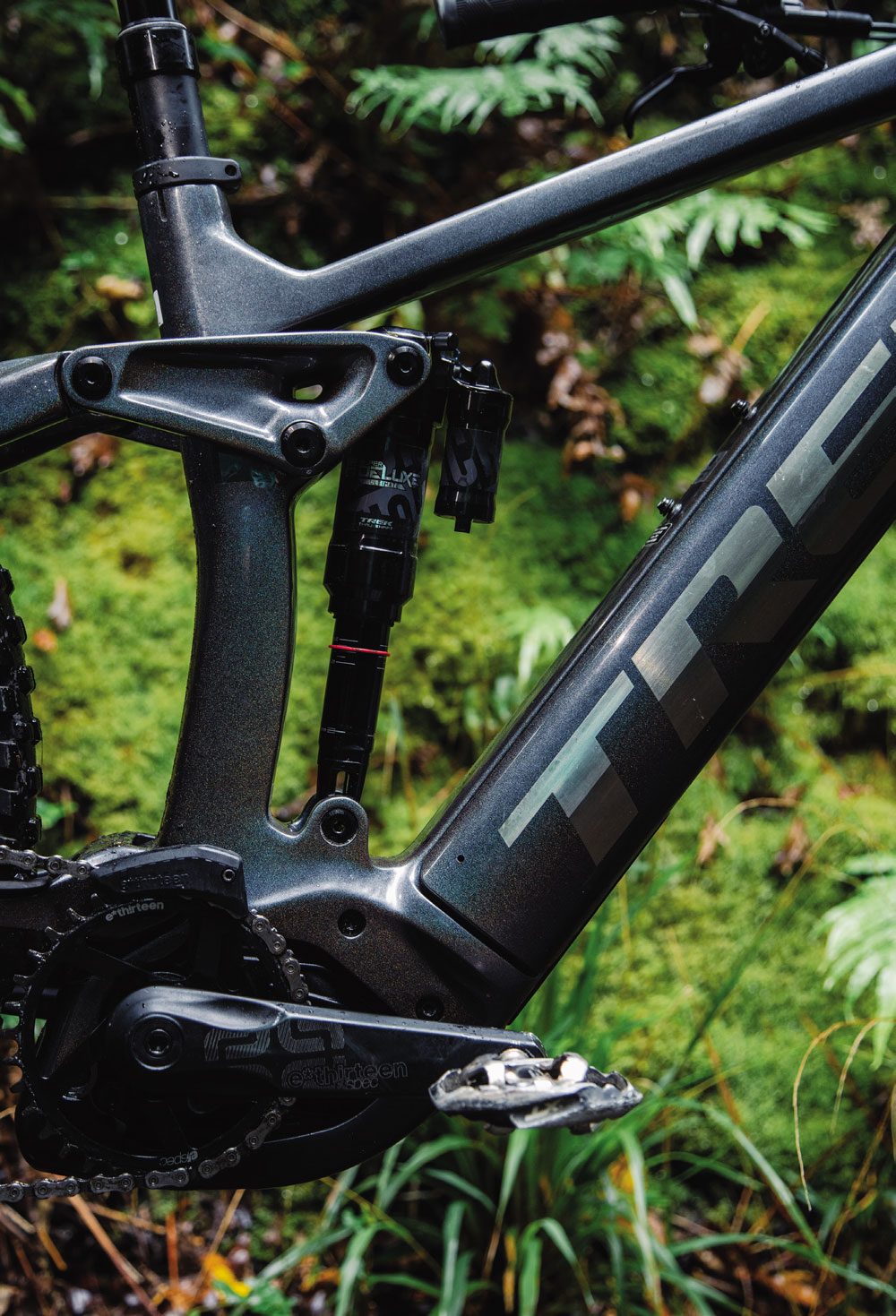
The Rail can take anybody to the top of just about any climb with comparative ease. But, put it in the hands of a rider with a bit of fitness and experience, and riding it becomes a different sport.
The brute power of the bike is amazing. I found myself looking for very steep things to ride up. At 85nm of torque it isn’t the most powerful bike available, but I am not sure more power would be much use – it’s fun figuring out how to dole out the horses without overcooking the available traction.
The range of the bike is equally impressive. My last outing before the sad day I had to hand it back was a case in point.
I rode 62.6kms, climbed almost 2000m, and averaged over 20km/hr. Most of that was on-trail. There is no way I would have chosen the route I took on my pedal bike, and if I did I would have been out for a very long time.
The Bosch Smart System – which the 9.8 shares with the XTR 9.9 Model – is a slick and feature-packed interface with the bike’s power system. A clear readout panel sits on the top tube. A neat little cluster of buttons sits out by the left grip, with on/off on top of the cluster, two buttons for moving through the display options, an ‘ok’ button – which also acts as a scrolling button for the display screen – and two buttons for choosing the power mode. In addition, the control cluster has a colour-coded LED graphic that lets you know what power mode you are in. More on that later!
There is a lot of information available via the display. The first screen shows battery percentage, power mode and current speed. Toggle the selector through the screens and you get similar info in more detail: larger readouts of battery level, distance covered this ride, distance remaining at current power mode, current and average speed, current and average cadence, and much more.
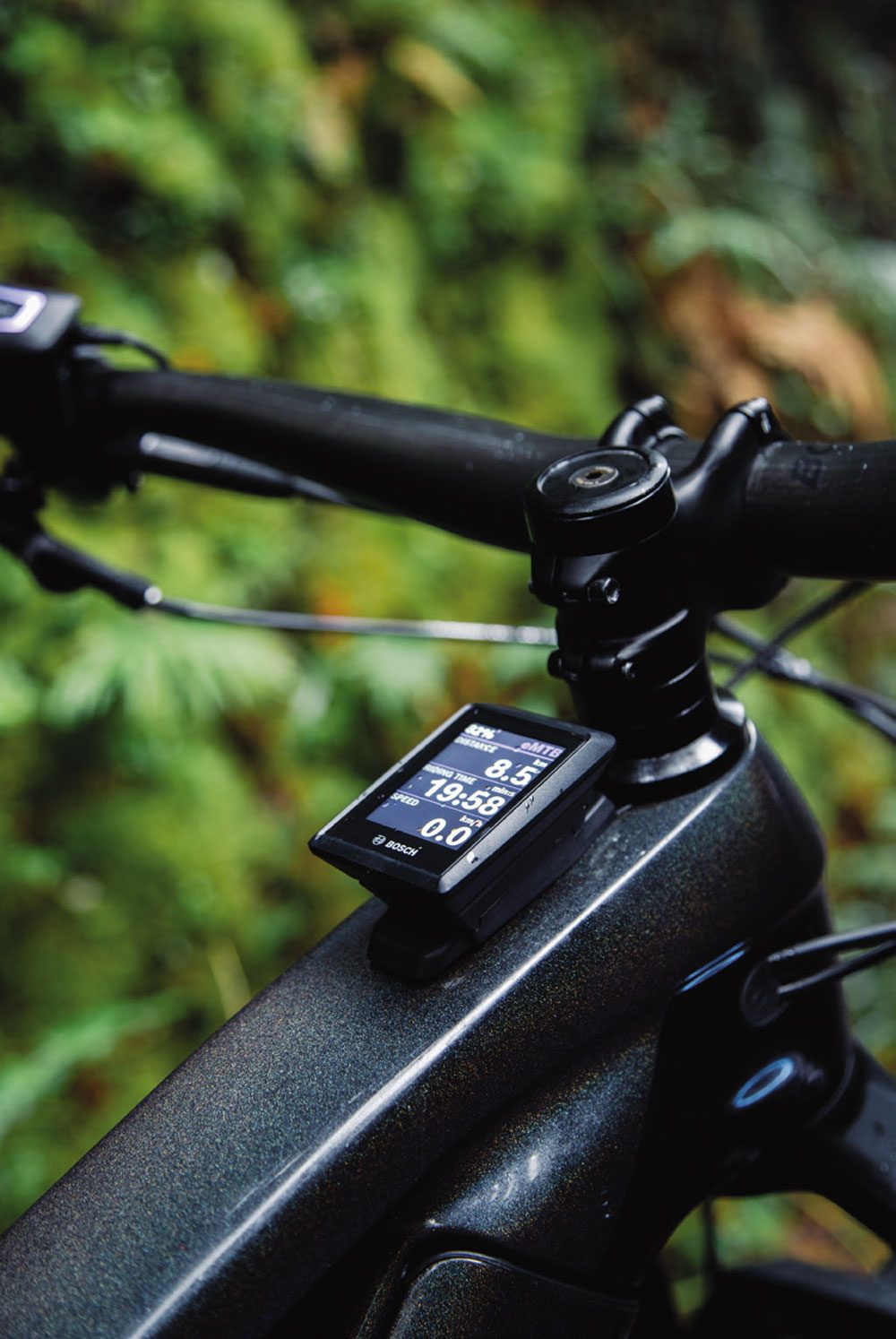
The system integrates with an app available for a more modern phone than the vintage iPhone I was using at the time of the review, so I can’t say how that works. Based on how slick the system is in use, I expect it is good.
The modes of power available on the 9.8 are the same as the rest of the Trek Rail line. You have Eco, Tour, Emtb, and Turbo. In my dozens of rides aboard the Rail, I can’t say I ever used Eco. I am sure it would be useful for something, when that mode is selected the range claim is over 100 kilometres. But, seriously folks, this thing is an eBike, so why not E the snot out of it?
The ride I mentioned earlier, that covered a good chunk of my local patch and included some very hard climbing, was completed in Emtb all the way.
Emtb is the sweet spot. It is intuitive, an attempt by Bosch to determine what the rider is trying to do, dishing out power as optimally as the onboard computing can deliver. Like the other modes, it measures the watts the rider is putting in and multiples them, but it also responds to short and extreme bursts by continuing to supply power if the rider backs off briefly, making short work of tricky root sections on steep climbs. Once a rider becomes accustomed to this delivery of extra power it is really useful for conquering technical climbs.
I tried Tour mode from time to time on rides, and noted that the assist is similar to Emtb but gentler, and the range is increased. Turbo is full power, but Emtb has the same power when you need it and just feels better and more natural.
The extra weight of the bike is only really apparent when lifting it into the van, or if it ends up on top of you – which, I confess, happened to us a few times. On the trail, the e-assist easily overcomes the 23.4kilograms of heft, and I think the extra weight down low makes going downhill on the bike a lot of fun.
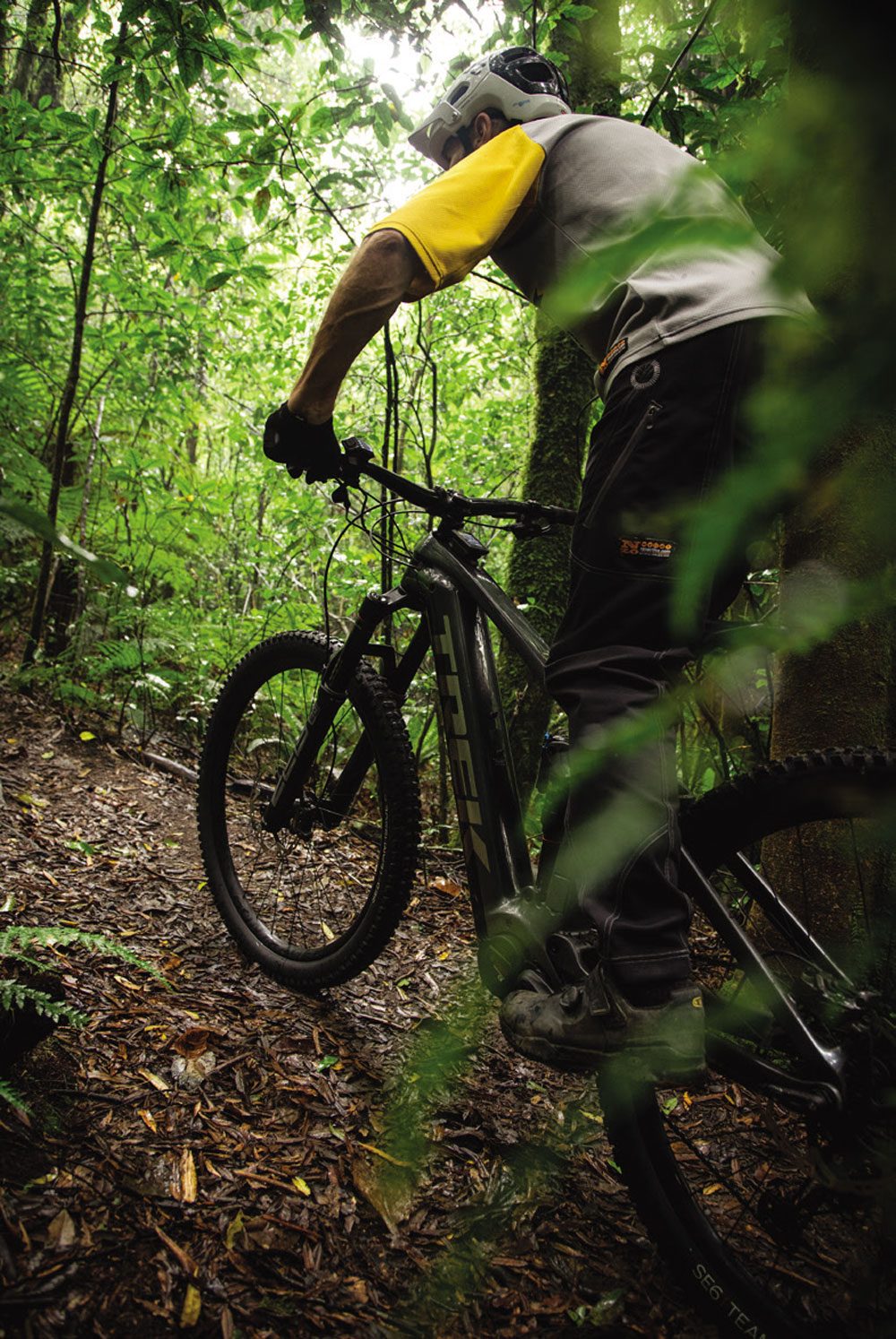
The suspension design of the bike teams up with the RockShox dampers to deliver a well-balanced ride. The Zeb fork is a good partner for a big bike like the Rail, with stiff 38mm legs keeping the front wheel going where you point it. The custom-tuned Super Deluxe shock out back has a thrust-shaft design that provides a very supple feel.
The generally-downhill-oriented geometry of the bike makes hauling ass a lot of fun on any trail, and I was surprised how often I came up against the only minor riding niggle I experienced with the Rail. It is speed-limited at 32kph for the New Zealand market. At that speed, the power simply stops being delivered. On the EX e that speed-limiting factor was easy to ignore because the power system is disengaged from the pedal power of the bike. The Rail has a different approach, so when the motor stops assisting, you are driving the motor with the pedals. It goes from punching you forward to feeling like a real drag on the pedals, instantly.
The Rail is a bike that I liked immediately, and grew to like even more as the test period extended. Because the bike was in the shed, and I knew at some point it wouldn’t be, I rode it almost exclusively. Switching back to the pedal bike was tough, because the power of the Rail is so front-and-centre of the ride experience. Getting used to the speed of the bike on all sorts of terrain made getting aboard a plain old mountain bike feel very slow and drab.
A couple of rides on the regular bike removed that feeling, and all was well with the world – but the rides that are on tap with the Rail make a strong case for having one in the rack.

Product Review: Wheelworks TrailLite Carbon & TrailLite Alloy
WORDS: LANCE PILBROW
DISTRIBUTOR: WHEELWORKS
RRP: $3350 WHEELSET
Wheelworks has been at their game for 20 years, and their trademark ‘Wheelworks’ rim decals have become something of an icon in the New Zealand cycling scene.
“They cost how much?!” My mother-in-law gasped as I revealed the price of the latest Wheelworks carbon wheels I had hanging from the wall in my garage workshop. My mother-in-law is a casual cyclist, eBikes opening said door, but the idea of anyone spending $3350 on a pair of wheels seemed, at the very least, bizarre in her mind.
“What exactly do they do?” she asked.
“Well, I guess they roll like any wheel”, I replied. “But they’re also very light; they’re made of carbon fibre, and they’re built right here in New Zealand. They’ve got an amazing warranty, unlike anything else really,” I replied.
Yes, these were probably the most expensive hula hoops either of us had laid eyes on, let alone touched. “And people buy these?” she asked again. “Yes,” I said, enthusiastically. I felt like arguing the merits and value of these shiny new wheels – that I had been drooling over ever since they arrived –was not something even my persuasive self could achieve, so I quickly steered the conversation back towards the firm favourites of most parents-in-law: politics, Jacinda, COVID, the usual.
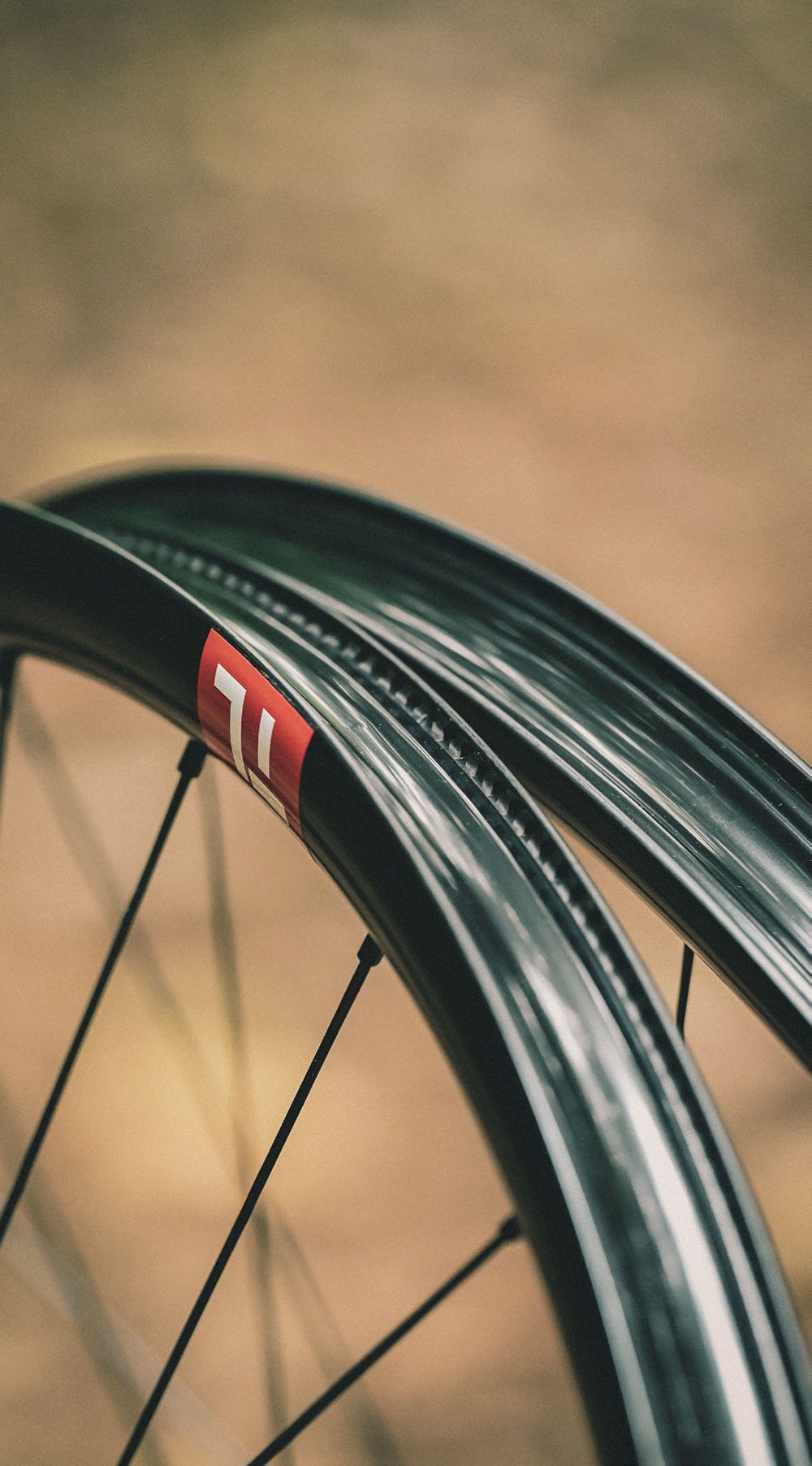
What is value in our sport? It is something I have been mulling over, particularly as I’ve had these Wheelworks wheels on review for the past few months; undoubtedly the most expensive single ‘component’ I’ve reviewed in my fifteen or so years working as a writer in the mountain bike industry. Pulling up at the trailhead, I felt a little like how the owner of a Ferrari or a Lamborghini might feel as they pull up in the parking lot, with people actually saying out loud to me, “nice wheels!” Yes, yes they are very, very nice wheels.
Before we get too deep into philosophical discussions about value, let’s talk a little about wheels and why Wheelworks, a small New Zealand company based out of Willis St, Wellington, sent me their latest creations. Wheelworks has been at their game for 20 years, and their trademark ‘Wheelworks’ rim decals have become something of an icon in the New Zealand cycling scene. With a small team, they have been able to focus on doing what they do – building the best quality wheels they can, slowly iterating and improving their products – to carve out a niche in the marketplace. Over the years, their own in-house products have been designed with the typical Wheelworks attention to detail, and they’ve become renowned for their exceptional quality and strength. They’re the kind of company that, when you ask around about them, you don’t hear anything but good reviews.
A recent overhaul of their products led to something of a streamlining of options, and I was lucky enough to be asked to review and compare their new TrailLite Carbon and TrailLite Alloy wheels.
So, a quick overview. The TrailLite Carbon wheelset comes in at 30mm internal / 36mm external width and it runs 28mm high. The carbon rims were matched to Wheelwork’s own Dial hubs and laced with DT Swiss Aerolite spokes. For comparisons sake, I was also sent a set of new TrailLite Alloy wheels as well, the same build but with an alloy rim instead of carbon.
Both sets came with red decals on the hubs, a small red ‘TL’ (TrailLite) icon, and a larger silver Wheelworks logo that follows the arc of the rim. These are all customisable to match whatever colourway your bike is – because you know we like to be all matchy matchy. They came pre-taped and with valves installed.
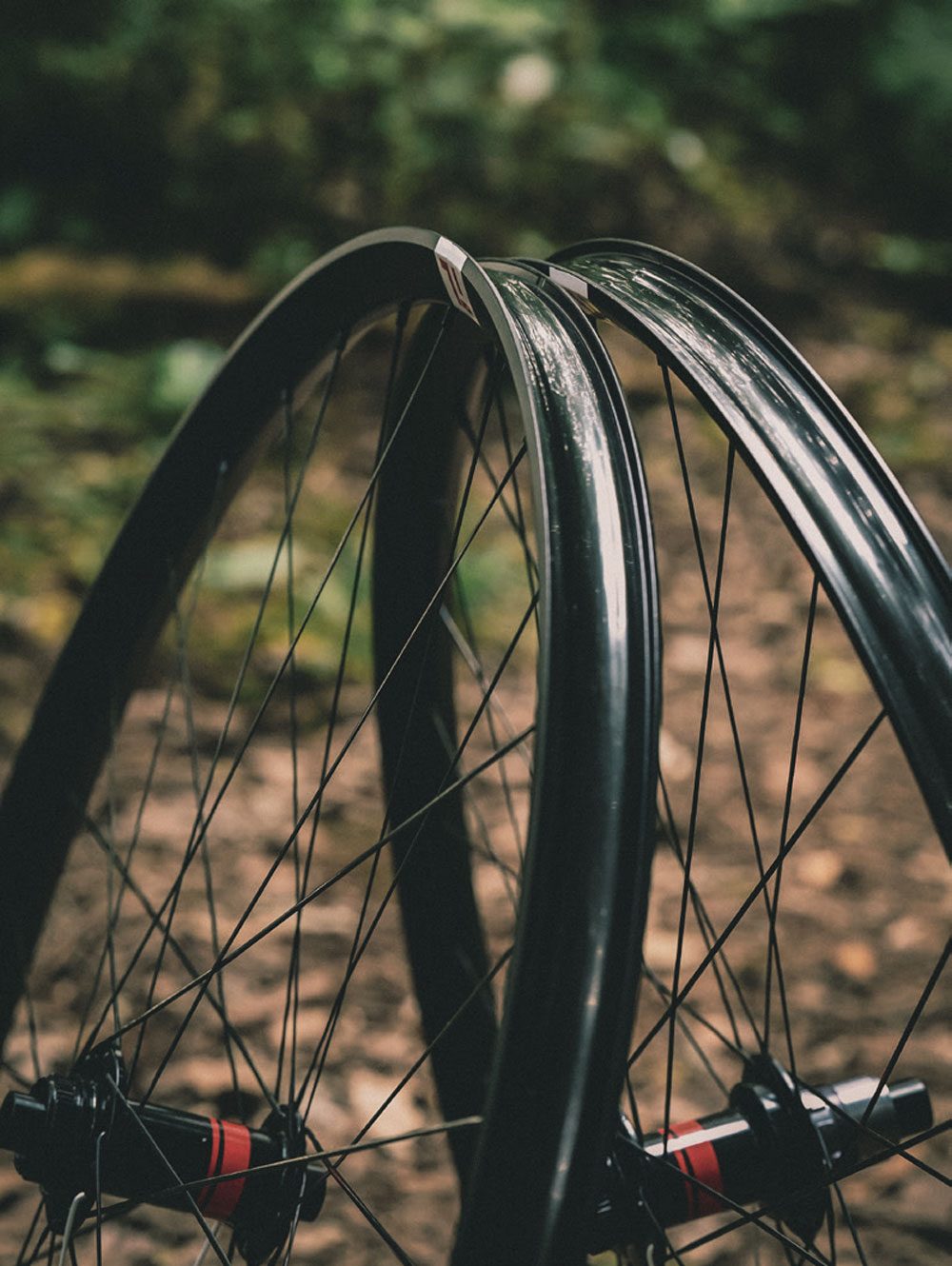
Before they’d even arrived I was able to experience first-hand the way Wheelworks operate. A phone call with Wheelworks ensured I was able to discuss all aspects of my riding to make sure they had as much information as possible to get me on the right set of wheels: my riding style (do I take the ‘b’ lines or absolutely huck everything in sight?); my bike and travel (is this going on an XC racing whip or an enduro sled?); riding intentions (do I want these to survive multiple seasons of enduros, or am I prepping for the Whaka 100?); oh, and without getting too personal… how much do I weigh? All this information helps Wheelworks get their customers on the right wheel, with the right build, at the right price. But the question still has to be asked – these are a $3350 wheelset, so why do people buy Wheelworks wheels over any of the other boutique brands that are available? I was able to put these questions to Andrew Ivory, one of the Wheelworks team, over a Zoom, and it really helped me understand the unique space that Wheelworks occupy in an increasingly crowded market.
First of all, it’s always going to be positive that they’re local. Most of us would prefer to buy New Zealand made products (their rim manufacturing, like most carbon products, is done in China it should be pointed out) if we can find items of similar quality at a comparable price. Supporting New Zealand companies always feels good. But it’s more than just ‘feeling good’, for Wheelworks this means that they can offer after sales services that are in a league of their own. Yes, they offer a lifetime guarantee on their carbon wheels. That’s great, but a few other companies do that too. A Wheelworks warranty, it should be pointed out, isn’t just for a manufacturing fault, it’s for any impact damage. If you ‘case’ a jump and destroy your wheel; if you break the carbon rim of your Wheelworks wheel while riding it; they’ll replace the rim and rebuild the wheel at no charge. That’s saying something. So often companies try to find a way of passing on costs back to the consumer; “yes we’ll replace the rim, but you have to pay to get it built up” for example. This real commitment to stand by their products is something they can offer without fear, because with 20 years’ experience in the business they know, they just see so few wheels they have built ever come back.
But, it goes on; if your wheel ever simply goes out of true – they’ll true it up for you at no charge. If a nipple breaks, if a spoke breaks – they’ll replace them at no charge. So yes, it’s a lot of money for a wheelset but, in a way, it’s the last wheelset you might ever need to buy and you’ve got a lifetime of free servicing to go with it. Oh, and as they obviously carry plenty of stock of all their products, they can usually offer same day repairs, or get it back out on a courier to you in 24 hours. With the current wait times you experience at most bike shop service departments, this is really impressive.
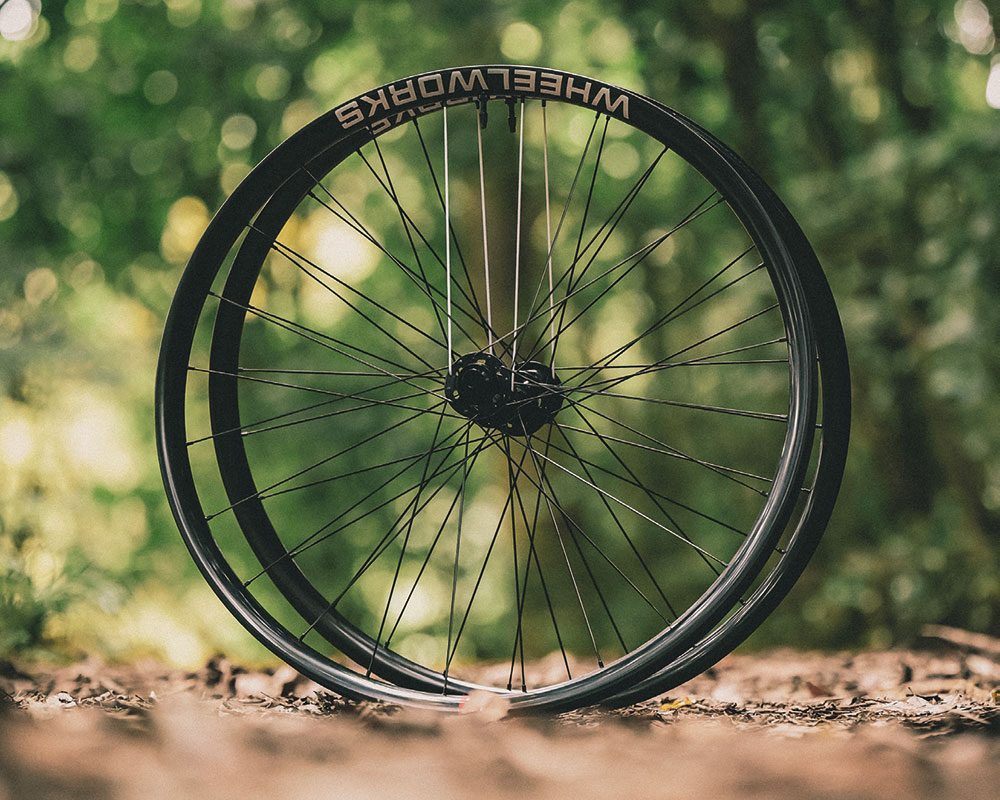
Wheelworks have tried to create something special with these wheels. Not all carbon rims are created equal, Andrew informed me. Over the years, dealing with all the different brands and intrepidly exploring, getting their own carbon rims manufactured to their specifications, they have seen it all. And it isn’t all rosy. At one point in the company’s past, they were returning up to a third of the rims they received back to the manufacturer as they didn’t pass their own quality control standards. That led them to move to other manufacturers and, Andrew told me, now they have a great manufacturer whose quality is outstanding. But what makes their rims unique? Isn’t it just a fancy hoop with a bunch of holes in it? No, not really. For the TrailLite rim it’s the specific way in which the carbon and resin is laid up, and then the precision with which the spoke holes are also drilled that sets Wheelworks apart. The spoke holes are all drilled, if you can imagine, with their final spoke path in mind. Once Andrew explained it to me, it started to make sense; spokes don’t run from the rim perpendicularly to the centre of a circle, they run at a slight angle to where they lace to the hub, which isn’t quite the centre due to the way wheels are laced with a cross-over pattern. What’s more, putting the wheel on its other axis, the spokes run ever so slightly to the left and the right to allow for the width of the hub. Wheelworks carbon rims are drilled taking all of this into account so that the nipples sit neatly against the rim and don’t rub or pull with uneven tension. Also, rims are designed specifically for front or rear use, with the rear rims being designed with more strength and impact resistance in mind. The attention to detail is true of their Dial hubs, with flanges angled to help the spokes align directly to the rim, and perfectly chamfered edges to hold it securely. They are also designed with ease of serviceability in mind.
It’s hard to talk about anything in the bike industry without referencing what it weighs. The Wheelworks Carbon TrailLite wheelset I rode weighs in at 1650g grams, and the alloy set at 1830 grams. The carbon front rim weight is 405 grams and the rear, 490. Dial front hubs are 135 grams, and the rear, 290. If you’ve had any interest in a new set of wheels it’s likely you’ve started to read up on the various options out there and maybe even started a little spreadsheet tabulating the weight of the myriad of options out there. (To compare it with something at a similar price point, a Reserve 30SL wheelset has a claimed weight of 1723 grams, built with i9 Hydra hubs.) 1650 grams for a trail bike wheelset is certainly light, but it’s not veering into the category of ultra-light, which is maybe around the 1300 – 1400 gram mark. This really reflects a big part of Wheelworks’ market, and where the TrailLite product is targeted; riders who tend to be people who do all manner of things – the odd XC race, a bit of bikepacking – and just generally orient their life around getting out on the bike as much as possible. The type of people who want a wheelset that is reliable enough to be used in any and every situation but is still light enough to make a bike feel like it’s come to life.
This was pretty much my experience with the TrailLites. I first put them on my bike a few days before an impromptu entry into the Whaka50 and couldn’t help but appreciate what they did to my ‘down country’ bike. The acceleration that a lighter wheelset offers became noticeably apparent when using them over a longer course like the Whaka, with lots of climbing. It was especially noticeable in sections where the terrain took me through short and sharp ups and downs; I felt like I was much more able to keep a good speed up pinchy little climbs at the end of the race where I was used to slowing down to more of a ‘just survive’ grind through the final climbs. After this, they endured a summer of riding, with plenty of opportunities to enjoy the way a lighter weight wheelset makes a bike accelerate out of corners, carry a little extra speed into corners and pop a bit further off of anything that looks like a jump. I couldn’t help but think that the carbon TrailLites also seemed to hold their line through off-camber terrain with a greater ability than the wheelset they had replaced on my bike.
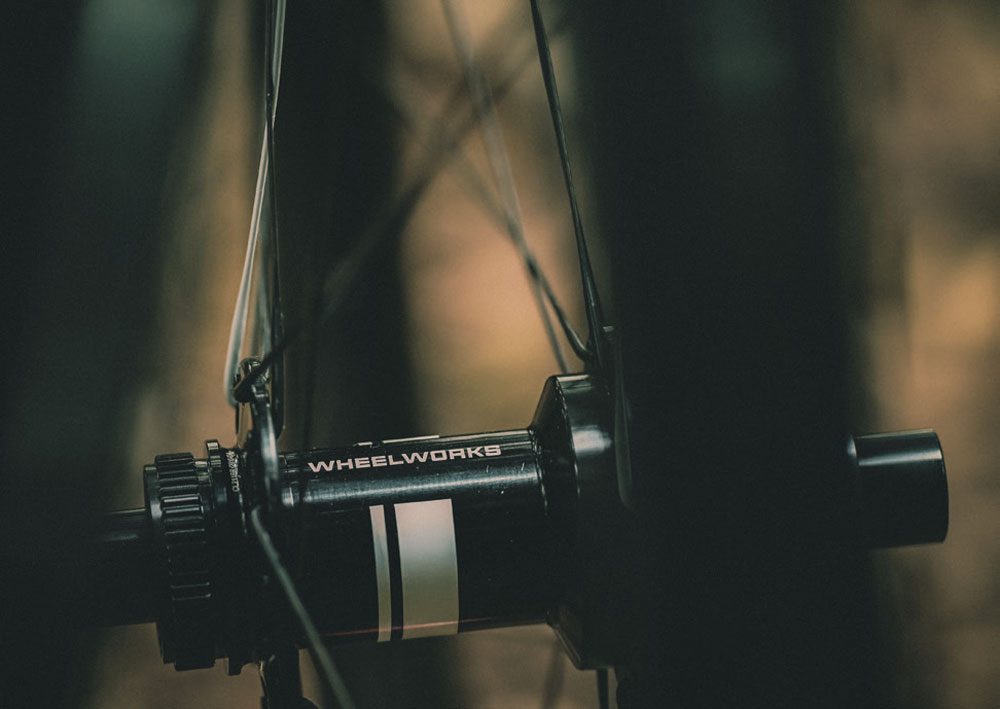
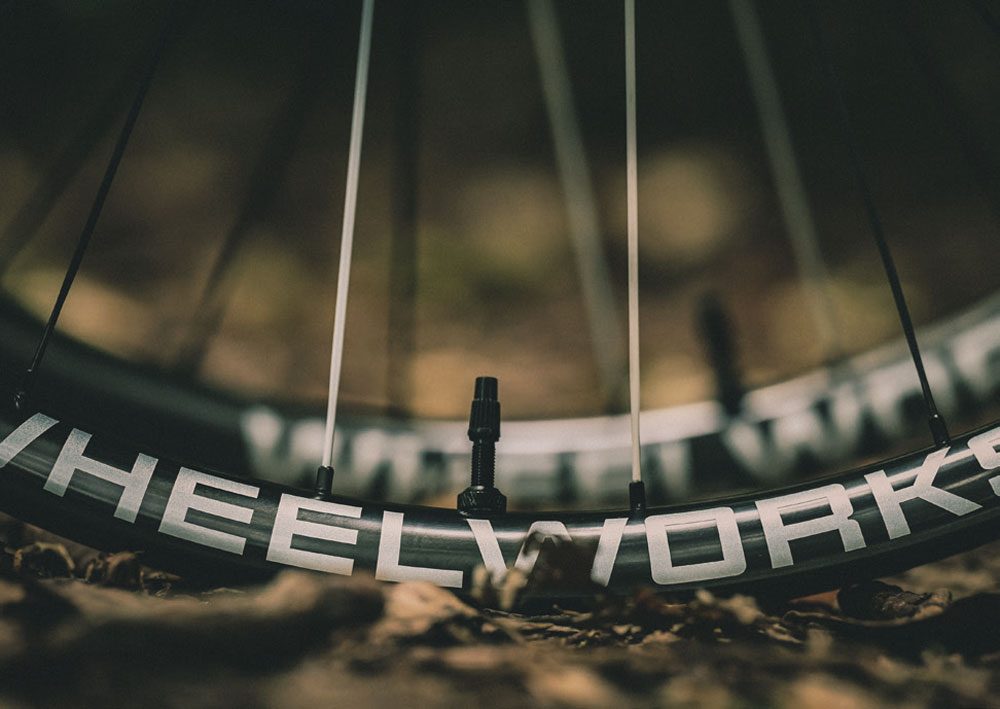
The alloy TrailLites were interchanged with the carbon wheelset with the intention that I would be able to review these in something of a side-by-side way. This was always going to be a difficult task, as it sounds like some sort of science experiment that is being done in a controlled environment. The reality is it’s anything but controlled and there’s no way of keeping tyre pressure, suspension pressure and trail conditions the same, let alone the way any particular ride unfolds. All this is to say that real world side-by-side testing that claims to provide anything scientific is maybe more aspirational than data driven. In terms of on-trail performance, the best I can offer in terms of a comparative statement is that the lower weight of the carbon wheels did indeed seem to translate into on-trail ‘liveliness’, and I appreciate that’s a suitably vague statement! Perhaps what this also reflects, is how impressed I was with the alloy TrailLites too. At around $1850 – depending on your build – the TrailLite alloy version gets a lot of the Wheelworks benefits: working with a great company and getting custom wheels expertly built; an amazing after sales service and warranty. Putting them on my drop-bar bikepacking MTB, I felt like the weight savings were less apparent in terms of acceleration, as my bikepacking bike tends to be ridden on gravel roads with more consistent speeds; there is simply less braking and accelerating compared with typical mountain bike terrain, so you simply aren’t trying to bring the bike up to speed so often. This made the lower priced alloy TrailLites seem more appealing for that application, and the carbons more appealing for pure mountain biking, if your budget allows. The Dial hubs have run flawlessly through the test, and I personally liked the ‘precise’ sound to the freehub. It’s moderately noisy in a good way, with a satisfying zing about it, but it doesn’t make a big deal of its presence either.
It’s worth mentioning that chasing weight savings really can be chasing your tail in mountain biking. In one sense, we’re seeing lighter and lighter wheels, and on the other we’re putting wider and heavier tyres on our bikes. You could argue that keeping wheels light means that even with heavier tyres, wheels aren’t getting heavier and heavier. What’s maybe more interesting, is the way that eMTBs might play a role in how we think about wheels. With the average eMTB carrying 20kgs or more of weight, and typically smashing into things with more momentum, having correctly built and tensioned wheels is going to be essential.
Speaking of smashing things, I did in fact accidentally do my best to take Wheelworks up on their warranty. Mucking around on dirt jumps with my kids one day, pretending I was 16, it all went wrong. I came up horrendously short, one wheel either side of the dirt jump landing. Mid-air I knew that what was to come was not going to be pretty. The impact was severe, and I was reasonably sure I would be couriering the wheels back in pieces. But once I dusted myself off and hobbled over to my bike, I was amazed (and relieved) to see the wheels still running true – which is a real testament to their build quality.
Buying a set of wheels isn’t something you do as just a casual upgrade, like getting a new derailleur. It’s a serious investment and one that you do only when you really need to. The TrailLite wheels are going to appeal to a lot of riders who are comparing their options, especially those who are building a bike up item by item. I’m thinking these will be particularly appealing for people who are looking to invest some of their budget where it’s going to make a noticeable difference, and especially so if they dabble in things like bikepacking – where gear failure can leave you stranded in the middle of nowhere. (Having replaced multiple spokes on a friend’s bike in the middle of the Timber Trail, midway through the Kopiko, I can attest first-hand how serious this can be). It will mean different things to each of us, but to be able to speak to people like Andrew and their team on the phone, talk through all your interests and intentions, and for them to bring their wealth of knowledge to help you explore your options, is fantastic. I genuinely got the impression they weren’t simply about selling expensive wheels, but were trying to find solutions that worked for individual riders, whatever their budget was. The option to be able to demo wheels before buying them is something else that is really unique too, and reflects their commitment to outstanding service.
Six months is actually a pretty decent amount of time to be given to review a product in the typically fast turnaround deadlines of mountain bike media, but it’s still short enough that it’s hard to give anything particularly useful in regard to assessing claims about long-term reliability. I’m really encouraged that Wheelworks are going to leave the carbon wheels with me to do an even longer term assessment of their reliability, but if understanding Wheelworks ethos and my initial testing is anything to go by, there are going to be many happy miles of rolling to come.

Bike Review: SRAM Eagle Transmission XO Groupset
WORDS: LIAM FRIARY
PHOTOGRAPHY: JAKE HOOD
DISTRIBUTOR: WORRALLS
RRP: $3,315
The mountain bike world is constantly moving forward. The sport is – and has been – defined by progression. I mean, without it, we wouldn’t be riding the bikes nor the trails we are today. SRAM’s Eagle Transmission takes the term ‘progression’ to a whole new level. I think the real standout thing about this product is a statement from SRAM’s PR homie, Chris Mandell, who said, “we (SRAM) didn’t have to change the hanger, but we wanted to have better, more precise, accurate and robust shifting”. And so, several years back, the development started.
Sometimes progression is misguided and, as we know, there’s a heap of new products with a ton of claims that don’t really seem to add any value. However, getting rid of the derailleur hanger with the new Eagle Transmission groupset, and solving adjustment issues, has value. The evolution hasn’t relented in the past two decades and, it’s fair to say, most parts and components have been overhauled, making them lighter, efficient and more robust. The drivetrain and, especially, the rear derailleurs and corresponding cassettes have undergone significant improvements, offering huge gear ranges and fast, reliable shifting. So, as the key player between the derailleur and frame it’s fair to say the derailleur hanger has seen some development – but it’s been lagging. Especially when you consider the wide range gears of modern derailleurs. Also, nearly every bike brand uses their own hanger design, which sometimes requires adjustment of the rear derailleur. This can often mean messing around with the upper and lower stops, or the B screw, because if the rear derailleur isn’t shifting like it should, you need to set the distance between the upper pully and the cassette. And we haven’t even delved into the realm of dropping or knocking your derailleur hanger, which can make it bend and render it bloody hopeless.
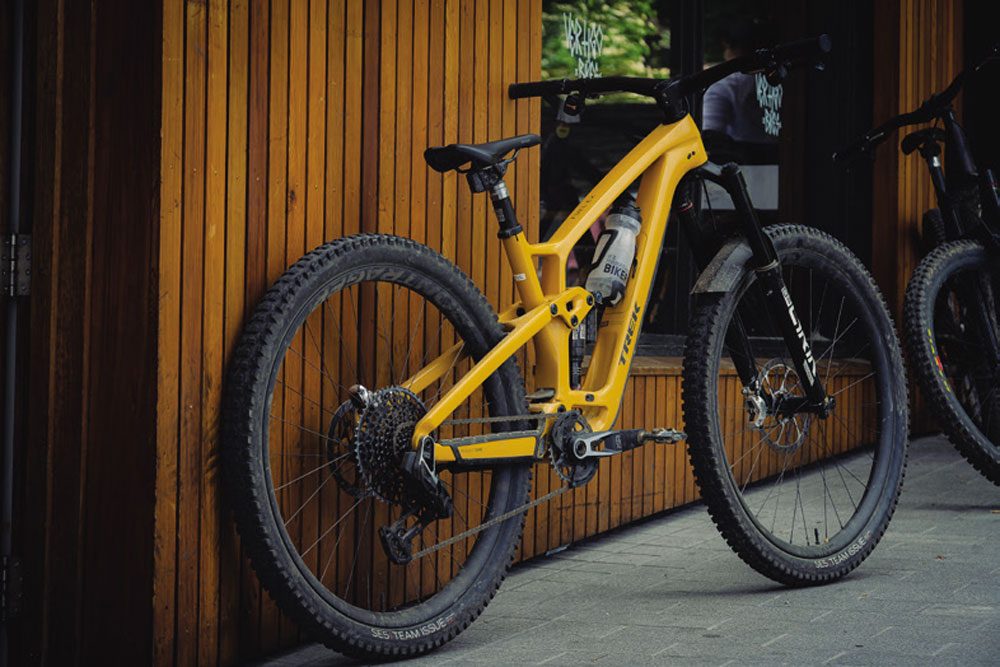
SRAM’s Eagle Transmission aims to solve all these issues by removing the hanger altogether, thanks to its hangerless interface. The Eagle Transmission derailleur mounts directly to the thru-axle, however, it’s not all that simple to get this transmission on your bike. You will need to have a UDH derailleur hanger. Now, I’m not here to write an essay about it, but more to give you my first impressions of riding the new groupset over the past four months. For more, check out the feature (page 40) about the SRAM ride camp, and we will aim to bring you more ongoing tests of the groupset throughout the year. In the next issue, I will go more in-depth about the new cranks, chainrings, chain, and the longevity – I will also add my take on the new SRAM Code Ultimate Stealth brakes.
Late last year, I was contacted by Chris Mandell (SRAM PR) to get a UDH bike ready for his upcoming visit to Aotearoa. I scrambled around and managed to wrangle a media Trek Fuel EX bike, which we fitted out with SRAM Eagle Transmission XO groupset.
My initial riding impressions of the Eagle Transmission, was that it shifts more efficiently and has a mechanical shift feel. Let me elaborate on those points in a reverse order.
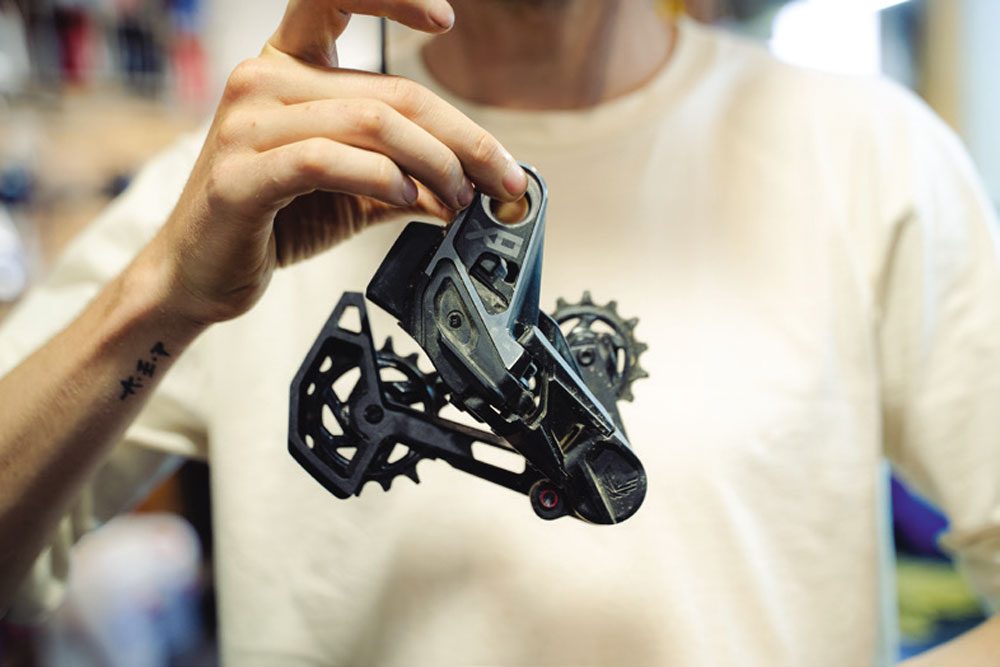
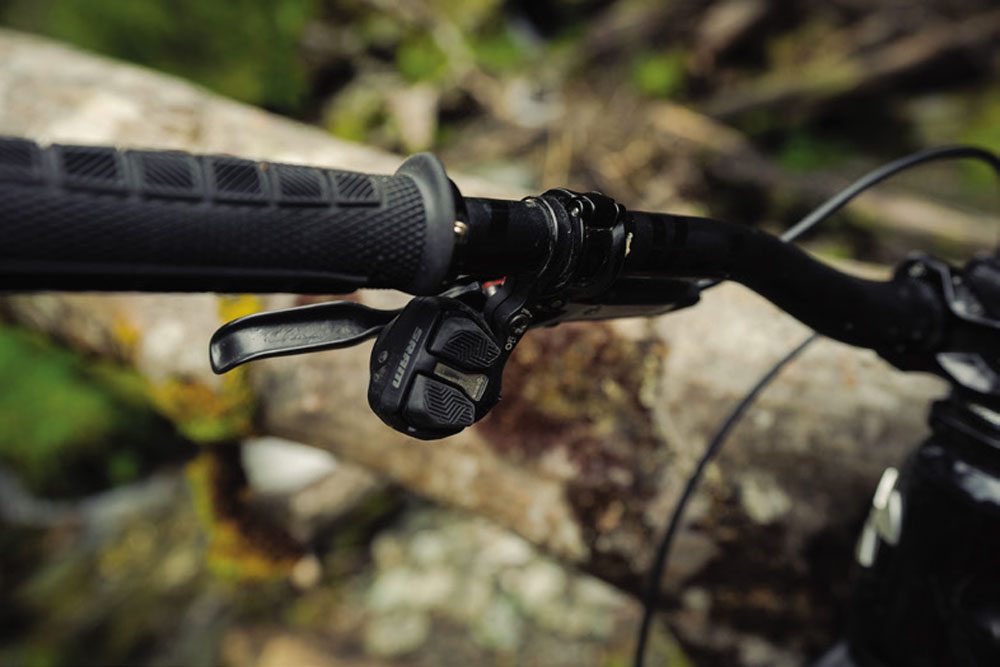
The Eagle Transmission groupsets have new controllers, now called ‘Pods’. There are two models – Standard Pod and Ultimate Pod. They both look similar, but you can change the rubberised button caps on the Ultimate Pods and adjust the ergonomics of the buttons. Also, there are two clamps for mounting the Pod. The standard clamp connects the Pod to the brake. You can move the Pod in and out to a certain extent, moving it towards or away from your hand, as well as rotating the horizontal axis. Alternatively, you can make use of the so-called Infinity Clamp, which is a separate handlebar clamp. You can rotate this in almost any position and attach it in every conceivable way. Here too, the Pod can be rotated infinitely around its own horizontal axis. The whole thing tightens up with a single Torx T25 bolt. Additionally, on the inside of the Pod, you’ll find a button for the MicroAdjust function, which allows you to fine-tune the derailleur, shifting it inwards or outwards in 14 increments. You can still adjust the assignment of the buttons using the SRAM AXS app, or use the traditional AXS controllers if you don’t get along with the new Pods.
The shifting on the new AXS Pods is different when compared to the previous generation of AXS controllers – its more defined, and firmer. They give better feedback and have a definite click. This is thanks to rubberised caps and the different ergonomics options – it’s much clearer about which button you’re pressing. This became evident when getting rowdy through a tough technical rock section. The more I have used these Pods, the more I like them – and this became more noticeable when switching back to the previous generation of AXS controllers. They just make more sense in terms of the ergonomic perspective.
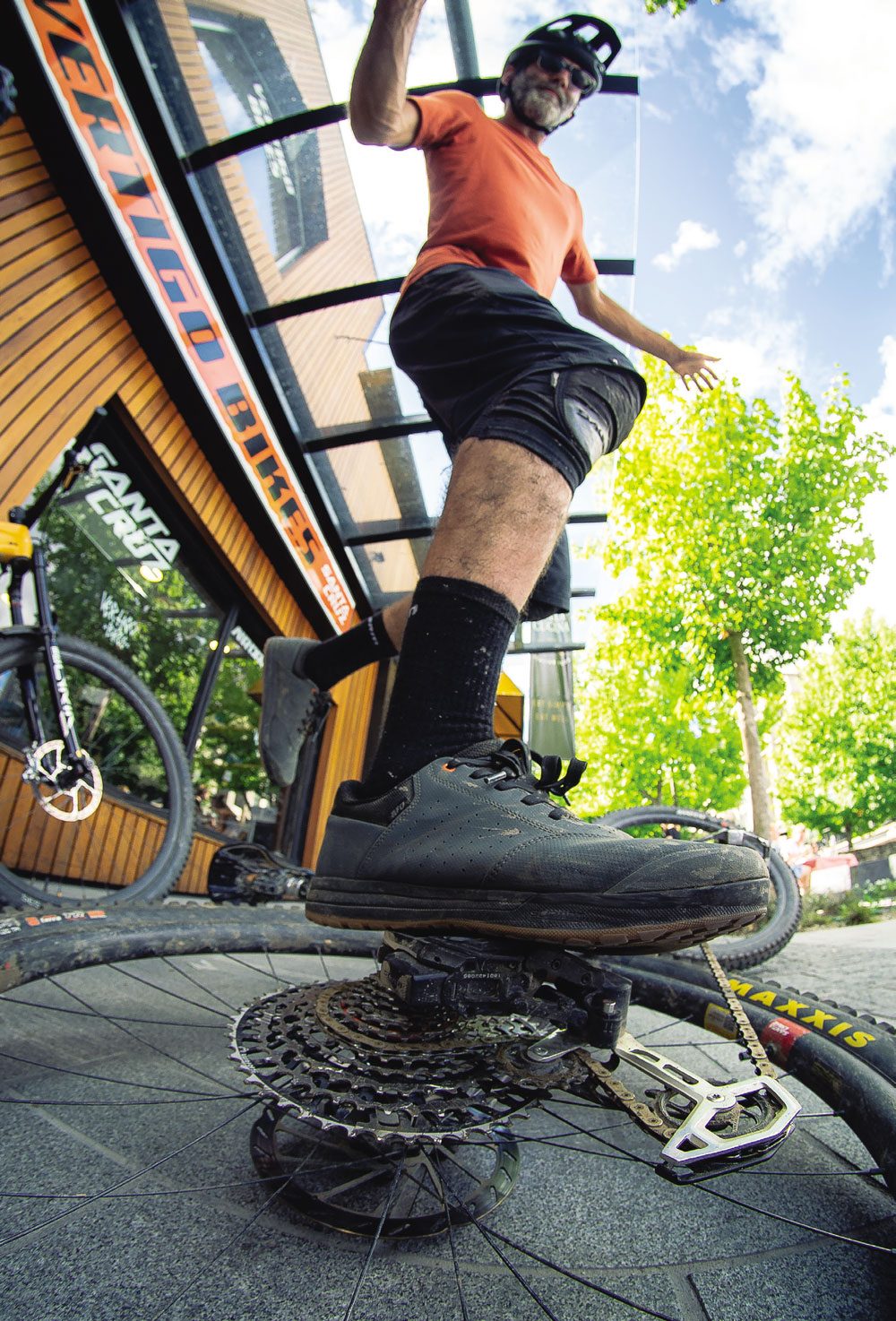
Let’s move onto the shifting. Out the gate, the functionality of the Eagle Transmission groupset is a very clean shifting process, however, there’s a slight lag when compared to conventional shifting. There’s a reason behind this: the chain of the new transmission will only shift once it has reached the perfect point on the cassette. So, when you press the button on the Pod, it doesn’t necessarily make the rear derailleur move immediately. This does depend on your gear choice and your cadence when shifting. But we’re talking fractions of a second and it’s barely noticeable after you’ve ridden it for half an hour – now I don’t even notice it. The flip side to this, is that it allows you to shift unhindered, and keep pedaling at full throttle.
Out with the old ways and in with the new era – you no longer need to back off the pedals every time you’re shifting. This is quite a big change and it’s supreme in practice. Also, this is super- convenient and promises to massively increase the longevity of your drivetrain – especially on an XC bike or eMTB. Sometimes, when shifting more than one gear, it feels like the derailleur delays the process ever so slightly – so you think you’re done and then it shifts into another gear. The reason behind this, is to maintain its precision and keep the chain engaged with a maximum of two cogs at once. You can delete that knocking noise and associated vibrations you get from conventional derailleurs when shifting under load.
The groupset has been flawless. During the four months I’ve tested it for, it’s been smooth and quiet all that time. That’s no joke – I’ve travelled with the bike up and down the country in cardboard boxes and it’s been on and off my rig a ton, and that’s before I even mention the relentless riding. I think I noticed the biggest change when I went back to continental shifting – it becomes apparent that you need to back off the pedals to shift. For me, the shifting under load is massive gamechanger. After a while you unlearn the old ways of shifting, and this shifting becomes intuitive.
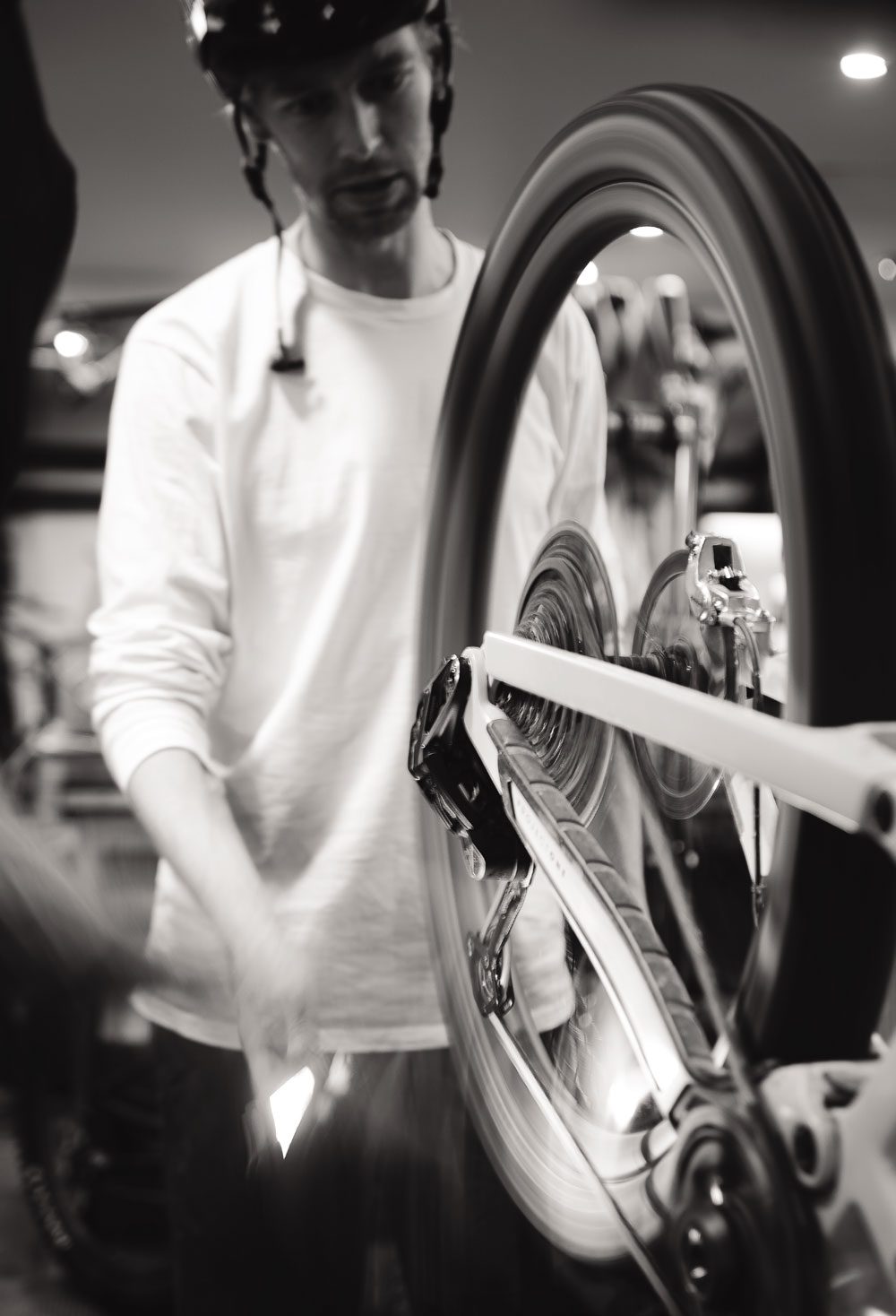
I was clearly lying earlier, as this is now becoming an essay – so let me bring it to a close with some final words about robustness. During the test period I didn’t manage to rip off any of the rear derailleur, and would bet it’s near impossible to do so. I bashed the derailleur around and it has come away unscathed, apart from a few cosmetic scratches. It rides unfazed about any disturbance, even when directly stood on – Chris did this during one of the ride camp days and showed us that even when it’s stood on you can pick it up and ride off without any drama whatsoever. I have shown a few friends this trick over the test period and it impressed them, but what was more impressive was that I could get back aboard my bike and change gears. This derailleur is bloody tough and performs incredibly well.
SRAM have done well at removing the parts off the trail that are annoying – like adjustment requirements – and delivered on impeccable, reliable and robust shifting. Yes, the price is damn high, but given the innovation, quality and precision, you’re not going to be disappointed.



